new posts in all blogs
Viewing Blog: Writing and Illustrating, Most Recent at Top
Results 376 - 400 of 1,698

Sharing Information About Writing and Illustrating for Children
Statistics for Writing and Illustrating
Number of Readers that added this blog to their MyJacketFlap: 14

By: Kathy Temean,
on 3/7/2014
Blog:
Writing and Illustrating
(
Login to Add to MyJacketFlap)
JacketFlap tags:
MFA in Illustration,
Elisabeth Alba,
University of Flordia,
inspiration,
Process,
illustrating,
authors and illustrators,
demystify,
Illustrator's Saturday,
School of Visual Arts,
Add a tag
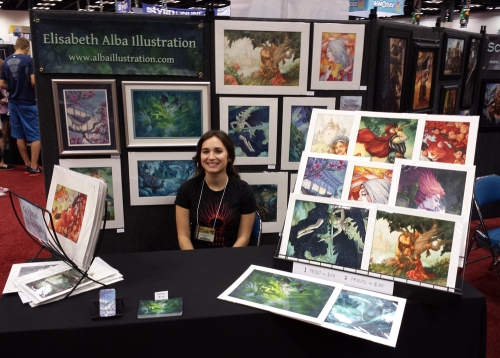
Elisabeth Alba live and work in New York City after moving here in 2006 in order to complete my MFA in Illustration as Visual Essay at the School of Visual Arts. Before then, I had received my dual degree BA in English (with a focus on children’s literature) and visual art studies at the University of Florida. I’ve traveled a lot, which has led to an obsession with history and an interest in other cultures throughout the ages. I’ve always loved children’s literature and film, especially fantasy and historical fiction.
Clients include Scholastic, Simon + Schuster, Oxford University Press, Henry Holt Books for Young Readers, Small Beer Press, AAA Traveler magazine, and MTV Books. I’m the illustrator of Diamond and Fancy, both published by Cartwheel Books, an imprint of Scholastic, and part of the Breyer Stablemates easy-to-read series. Recently illustrated I am Martin Luther King Jr., I am George Lucas, and I Am Cleopatra, all written by Grace Norwich and published by Scholastic; and I contributed illustrations for The Shadowhunter’s Codex by Cassandra Clare, Simon & Schuster.
Here is Elisabeth discussing her process:
I had just read Richard Burton’s translation of One Thousand and One Nights and was inspired to do an illustration of Scheherazade. I decided to make it a scene, with the Sultan in the background.
I used my usual, watercolor and acryla gouache. It’s fairly large for me at 12.5×17.5. Trying to work bigger… but it’s hard with the small space I have to work in.
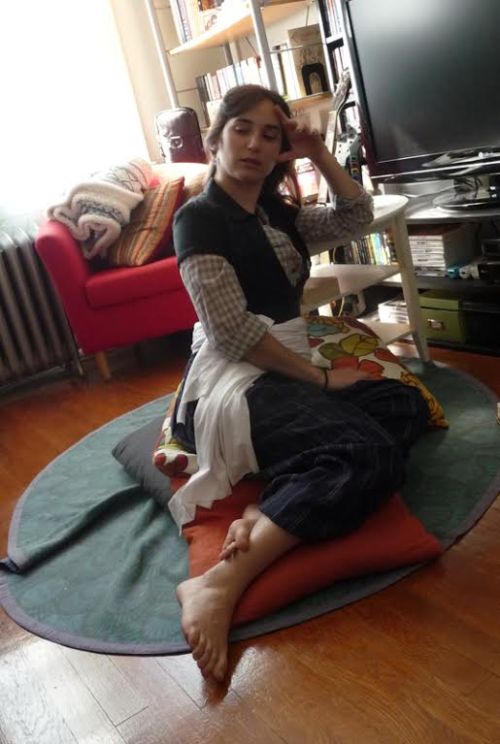
After working on a few thumbnails I knew right away what I kind of wanted, so I took some
photo reference of myself! (and my fiance, but he’d prefer I not share him in lady slippers)
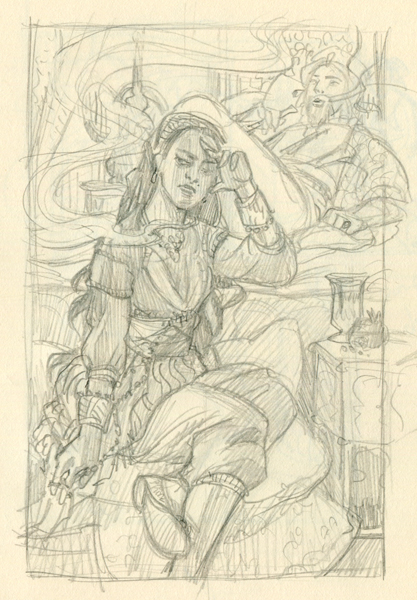
This is a quick sketch using the reference working it all out.
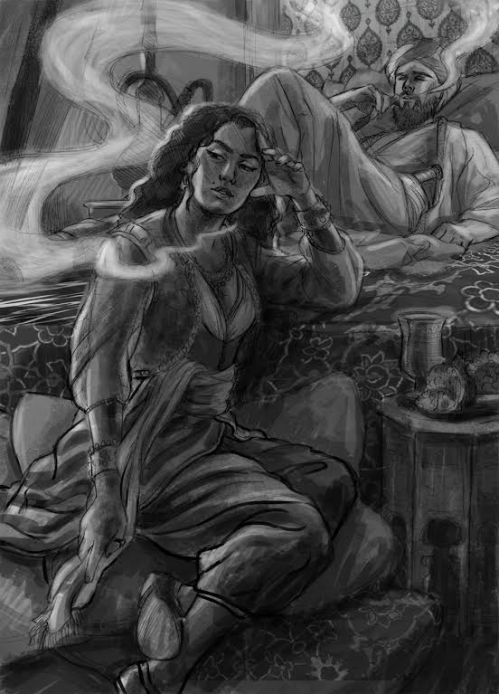
After doing a real pencil drawing and scanning it I began working on it digitally, getting the tones and lighting right, working out the pose a little more.
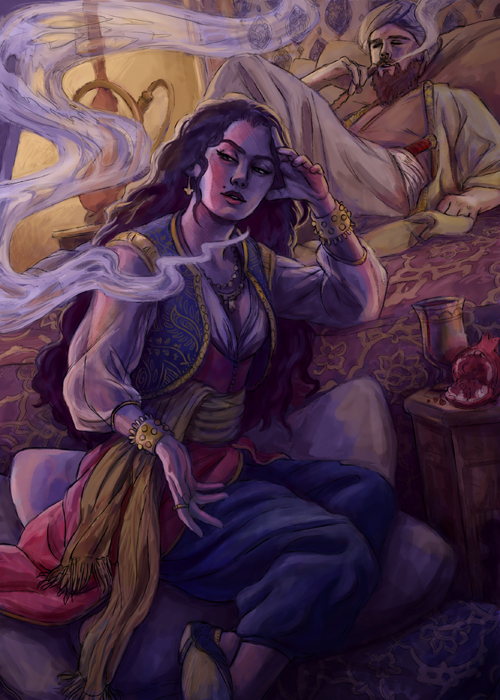
The final sketch with color test. You can see I moved the hand and gave her more of a tilt. I usually bring my color compositions to an almost finished state (if they were digital paintings), just to make sure I’ve figured it all out before painting.
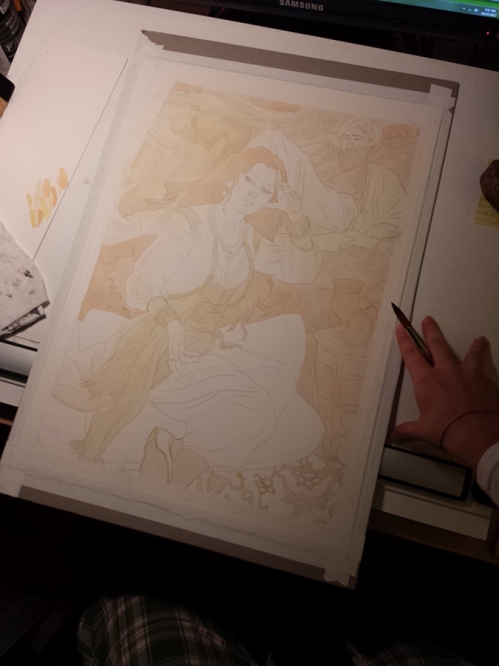
I print out the digital drawing. It was too big for my printer to print directly on the watercolor paper. I then traced the image using graphite paper to transfer it to the watercolor paper. Then I started blocking in a base color.
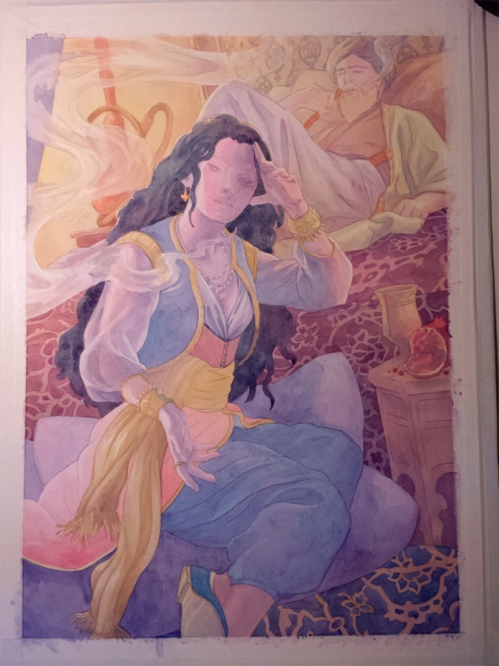
More blocking in of base colors.
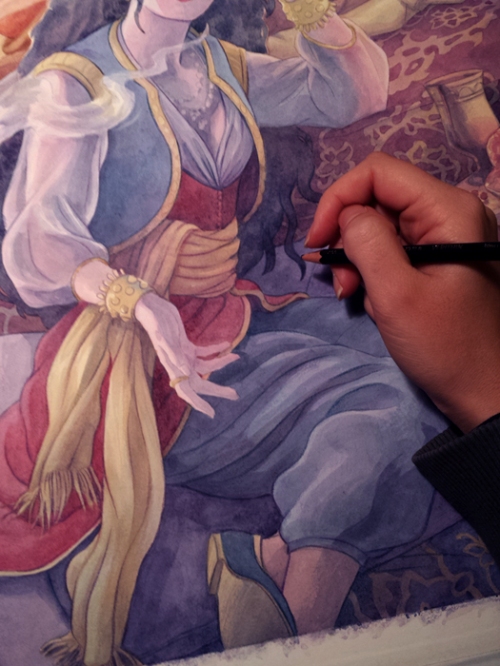
Don’t have progress photos from after that, but I continue to layer watercolor and get darker and darker, then I seal it with matte medium before continuing to add color with acryla gouache. I then varnish and scan and do any digital touch-ups.

Final image. It’s darker than the actual painting, because it just looks better that way on a computer screen.
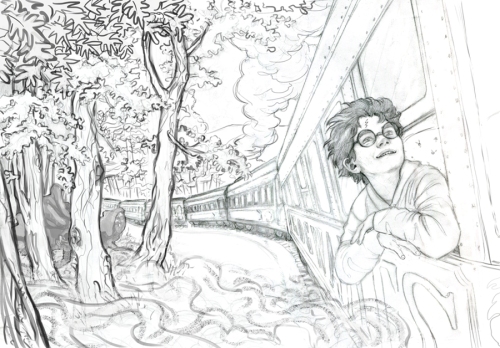
Above and Below: Where an assignment during my mentorship with the art director for the Harry Potter books (he was a guest). We had a different art director critique us each month and he assigned us the first book!
How long have you been illustrating?
I’d say since 2006, when I moved to NYC. I had done some small work before but it wasn’t very interesting to me. I didn’t consider myself a professional until 2006 at the earliest. Though I was also in grad school at the time so couldn’t take too much on.
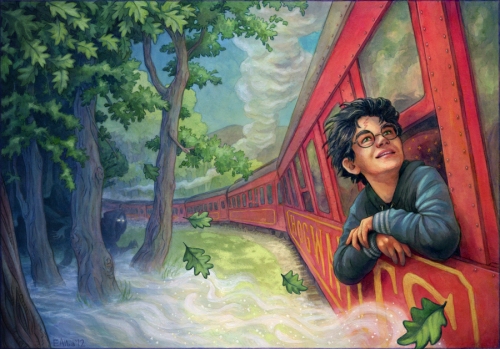
I see you attended the University of Florida to study both children’s literature and visual art. That makes me think that in high school you had an interest in writing and illustrating for children. How did that idea of a career develop with you?
I loved writing and reading but also loved art, so I wasn’t sure which to pick as a major. I started as a BFA art student, but because I was mostly doing fine arts as a student, and wanted more illustration experience, I decided to switch to a less work intensive BA so that I could double major in English as well (and I concentrated in children’s literature).

How did you decide to attend the University of Florida?
I went to high school in Florida. There was a great scholarship for Florida students called the Bright Futures Scholarship. If you got a certain GPA and SAT or ACT score, and you completed a certain amount of community service hours, you received 100% tuition to a Florida college. My sister and brother were both at UF already, so I wanted to join them. I wasn’t ready to go too far away to an art school, and I knew UF was considered a very good school.
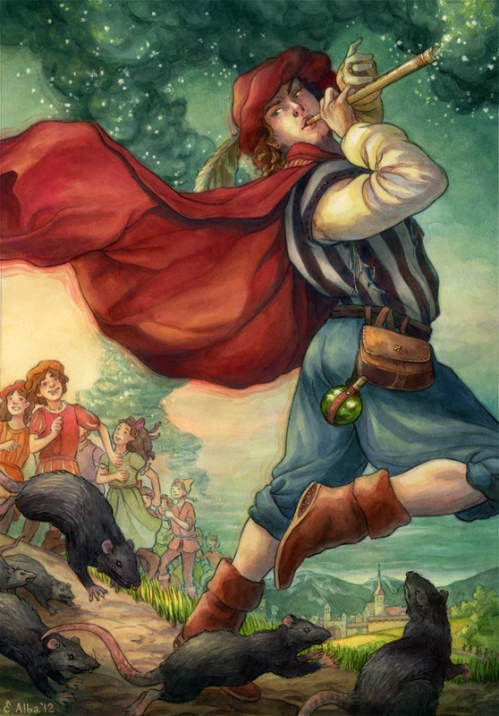
What type of things did you learn in college that you still use today?
I had a chance to experiment with a lot of art materials, so that helped me to settle on what I liked best. I think the best stuff I got was writing skills though. I had to write sooo many critical papers in my English classes (as well as art classes, actually), I read hundreds of children’s books, and I wrote a lot of short stories. And I had fantastic English professors. I have a wonderful day job in communications at a private school that I wouldn’t have gotten without my writing skills, and it has helped support my burgeoning illustration career.
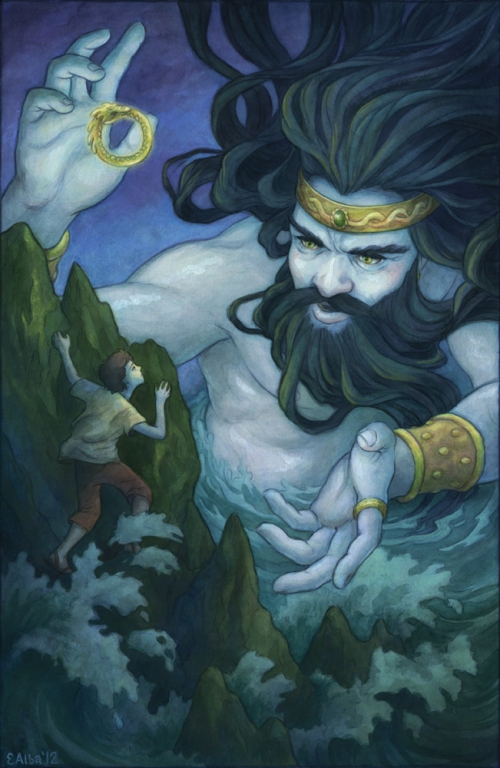
Did you immediately decide you want to get your MFA or did you get a job right out of college and then decide to continue your education in illustration?
I moved to NYC to start my MFA program right out of undergrad. I had no idea how to go about finding illustration work, since, as I mentioned, my art classes at UF were all fine arts, and I needed to be in an art school environment.

What made you decide to attend the School of Visual Arts in NYC?
At the time there were only three grad programs in illustration. SCAD, SVA, and AAU. I applied to and was accepted to all three. I only had a chance to visit SCAD and SVA. I planned to visit AAU, but as soon as I visited SVA and met the chairman, Marshall Arisman, I knew I found the school for me!
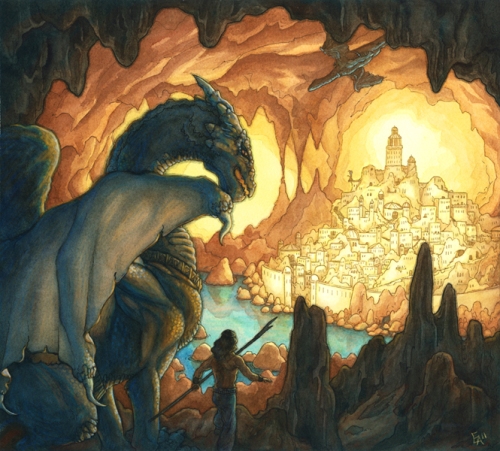
Did you have any favorite classes?
So hard to choose! They were all different. We had a location drawing class that was super fun. We got to visit the circus, a boxing gym, the botanical gardens, the zoo, and many other cool places, so it was great for someone who had just moved to NYC. Sightseeing while at school!

What specifically does an MFA in Illustration as Visual Essay teach you that just an MFA in Illustration doesn’t?
I don’t think there’s a difference. It’s still an MFA. Illustration as Visual Essay is just the name of the program. The ‘visual essay’ portion had to do with finding your own voice, and there was a lot of writing involved – we had a creative writing class, and we also had to write papers about gallery shows in a fine arts class and comics in a comic history class.
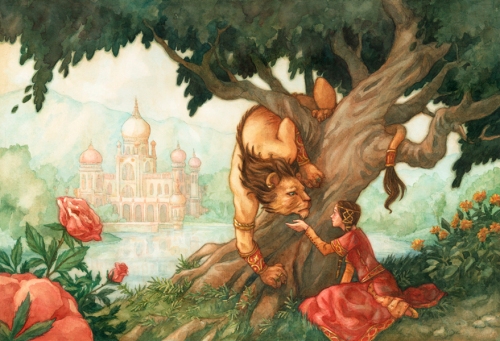
Did the School help you get work?
They certainly helped, but it’s not the school that gets you work, it’s the amount of time you put into bettering yourself and actively keeping up with contacts as well. Work’s not just going to drop in your lap (sometimes it might… but don’t count on it)! I worked on some concept work while I was still student for SpotCo after meeting the art director on a visit to the offices and having one of my teachers recommend me. I also interned with illustrator Brian Pinkney since he contacted the program for help (he was an alumnus). My thesis advisor, Brett Helquist, also hired me after I graduated for various projects. And I made a lot of connections through classmates (which resulted in my working with Scholastic). SVA also has a career services department that seemed pretty great but I never needed to use it.
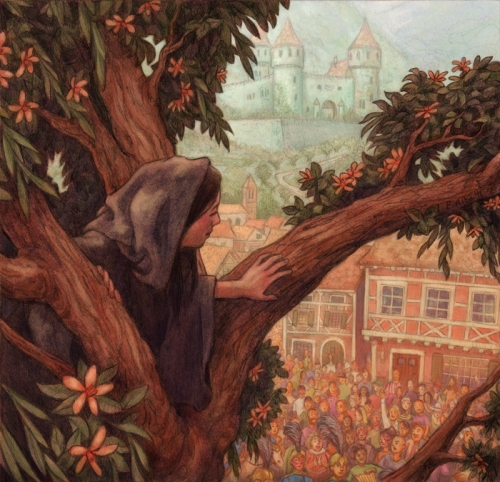
Do you feel the classes you took in college have influenced your style?
Not really, actually. I always just did my own thing. My professors at UF let me do my own thing, thankfully, because they knew I wanted to be an illustrator not a fine artist, and they were open to me making children’s book work. SVA was more of the same, just concentrating on working out what I wanted to do, and my style. I guess my classes also helped me to see what I didn’t want to do, in terms of style and genre.
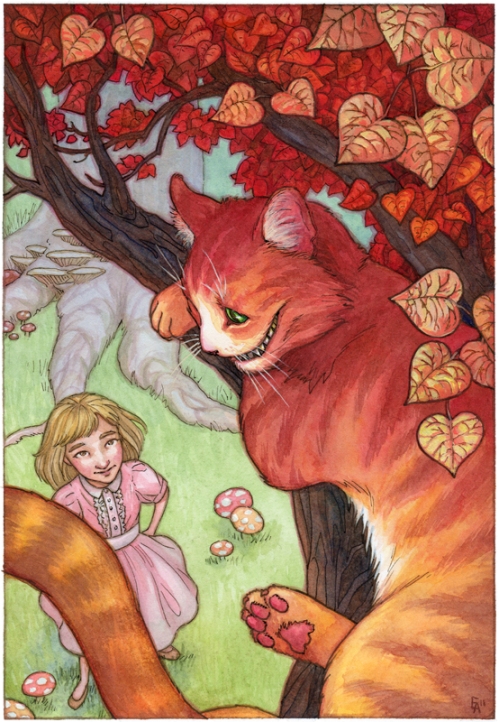
What type of work did you do right after you graduated?
I graduated in 2008. I continued doing concept work for SpotCo – I was helping ‘storyboard’ musical theater posters for Broadway, so they would tell me what actors I had to portray and what was going on, and I’d come up with some ideas. They would then show my ideas to the clients and take the final photos based on our ideas. I also taught kids that summer after graduating at an after school art program. And I got my day job at the private school, which I’ve had since.
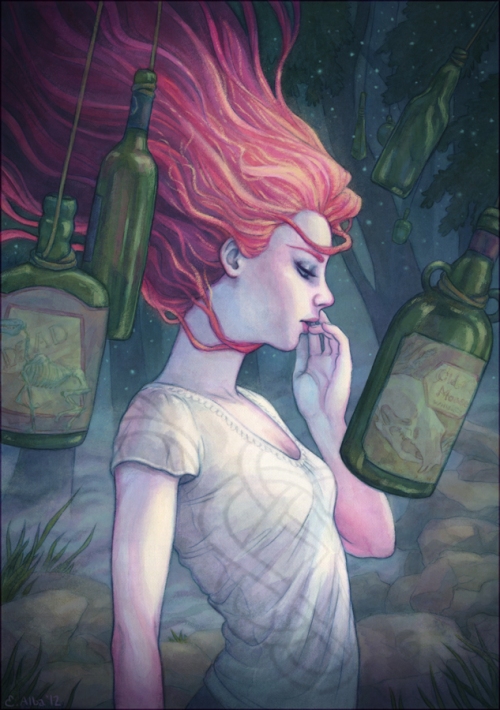
Above: Final mentorship project with Rebecca Guay. The assigned by Irene Gallo, art director at Tor Books to create an illustration for a short story.
What was the first art related work that you were paid?
I’d been paid for drawing since my freshman year as an undergrad, when I would draw fanart commissions. I also had a few small local assignments in Florida. I’d say my first real paycheck came when I was in grad school and did some work for author Rick Yancey (my favorite english professor at UF, Dr. Cech, knew him and recommended me) for a manuscript he was working on. It was never picked up by a publisher, but he’s been writing some marvelous books that came after! My first publishing job was a cover for Farrar Straus & Giroux half a year after graduating from SVA… but unfortunately the job was killed.
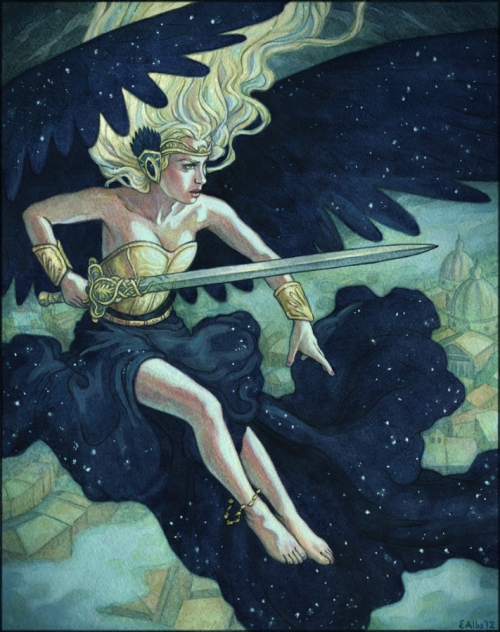
Above: Done with watercolor, colored pencil, and acryla gouache. 10″x12.5″
Do you have an agent or artist rep.? If so, who and how did the two of you connect? If not, would you like to find representation?
I don’t. Whenever I’ve contacted them they usually tell me my work is too traditional or realistic. But I haven’t needed one so far. Sometimes I think about looking for another, but I’ve heard mixed reviews, and I just haven’t needed one yet.
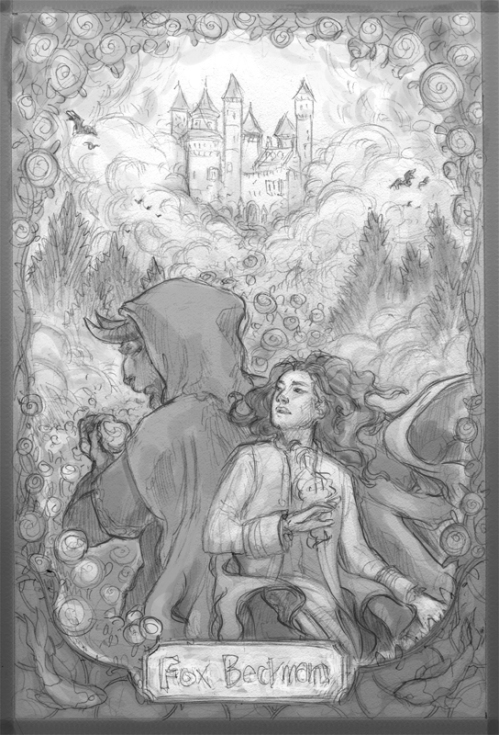
Sketch to final for self-published book, Brendan and the Beast – an alternative retelling of the classic fairytale.
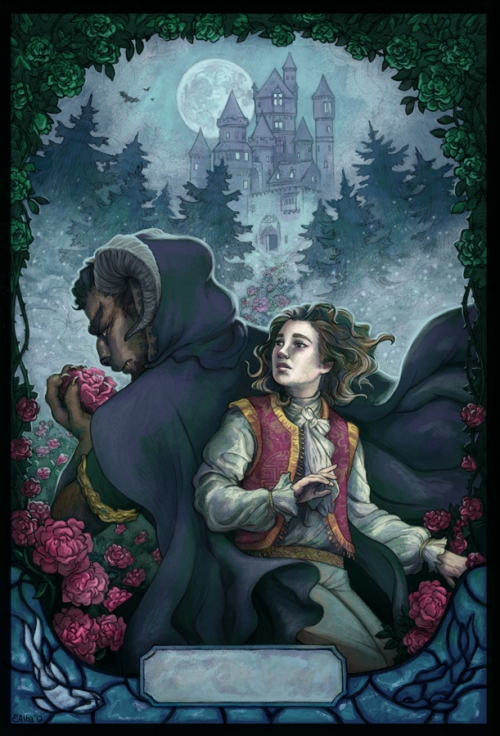
When and what was the first children’s book that you illustrated?
I guess I would say Diamond, written by Suzanne Weyn, one of the Breyer Stablemates books published by Cartwheel Books/Scholastic. That was in early 2009.
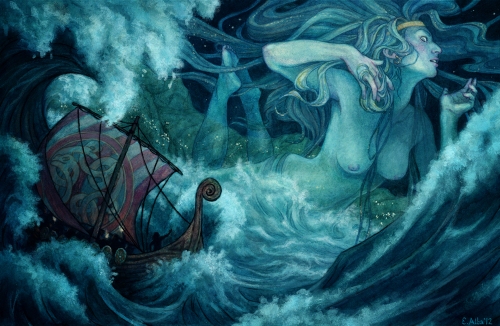
How did that contract come about?
One of my classmates became a graphic designer at Scholastic. She recommended me. They needed someone who could draw horses, and she had remembered that I drew some at SVA. I had to paint the cover first, to show that I was capable of drawing a horse and just good enough in general, and they went with me!
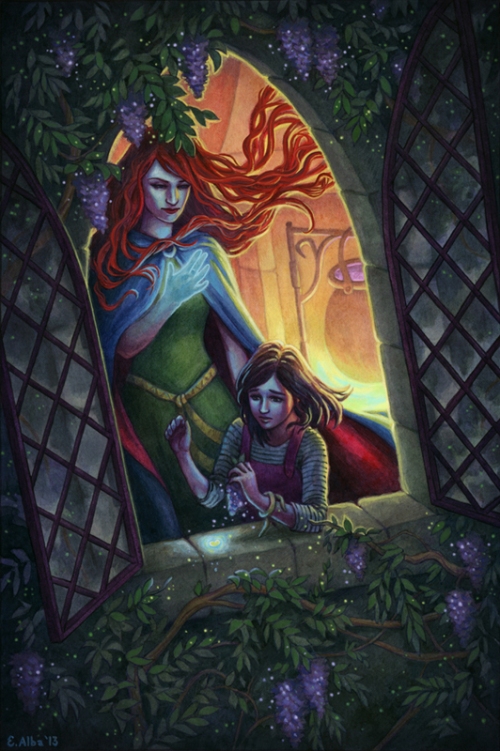
Above: Watercolor/acryla gouache/some digital touch ups.
Do you consider that book to be your first big success?
For sure! It was the biggest paycheck I ever got. Went directly to my student loans.
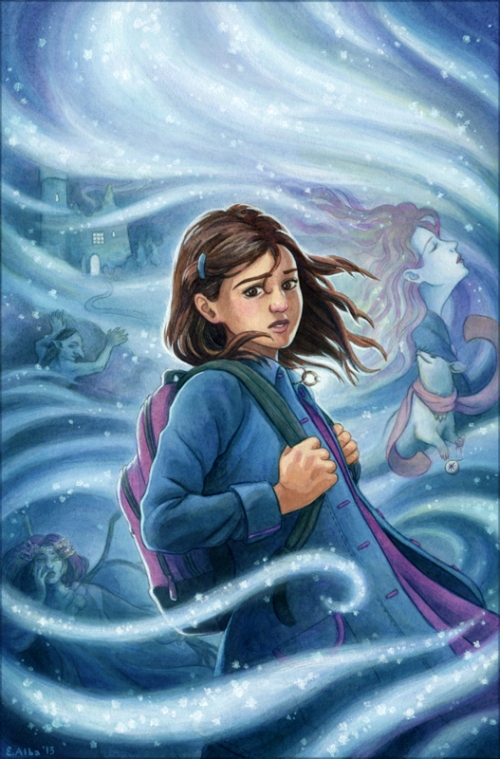
Have you tried to write and illustrate a children’s book, yet?
I have written and illustrated two of my own books while at SVA. I showed them to a few publishers but nothing came of them. One was a book about the Hanging Gardens of Babylon, called Amytis’s Garden. The other was a book called Nico’s Journey, about a boy searching for the best paella in Spain. They were fun to work on and great learning experiences!

Above: From Amytis’s Garden
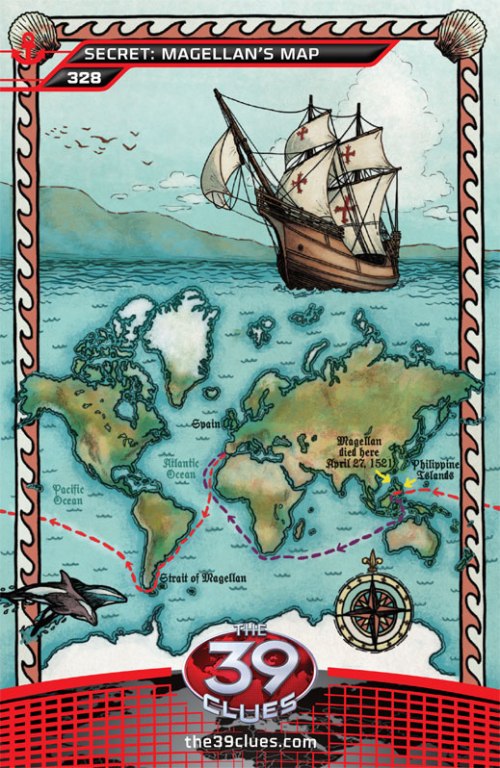
What type of work have you done for Scholastic?
I did two books for the Breyer Stablemates series, Diamond, which I mentioned above, and Fancy by Kristin Earhart. I also did a map for 39 Clues, a map for Infinity Ring, and three biographies for the I Am series, on Martin Luther King Jr., George Lucas, and Cleopatra.
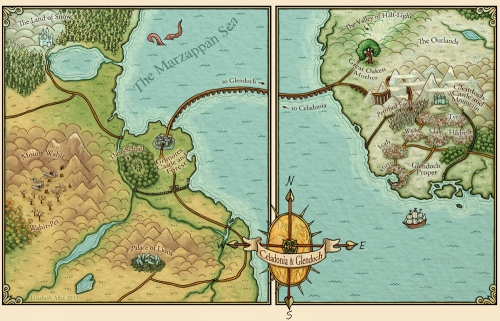
Same two questions again for Henry Holt Books for Young Readers.
So far I’ve only done one job for Henry Holt Books for Young Readers, and it was very recent. I illustrated two maps for the upcoming book, The Last Days of Jesus, which is a middle grade adaptation of Killing Jesus by Bill O’Reilly. The art director, Patrick Collins, has in-person portfolio reviews with illustrators if you contact him beforehand by snail mail to set up a time (See here: http://us.macmillan.com/Content.aspx?publisher=holtbyr&id=375). So I sent him a postcard and a few months later we met!
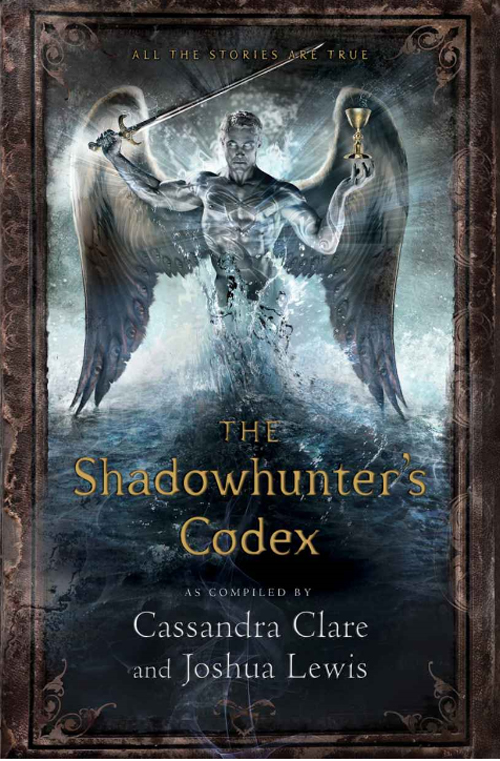
It must have been exciting to be asked to do some illustrations for Cassandra Clare’s book, The Shadowhunter’s Codex. How did that come about?
It was fantastic. That was a dream job, because I don’t often get fantasy work from publishers and it’s what I really want to do. I was in a mentorship with illustrator Rebecca Guay (http://www.smarterartschool.com/) which was the best thing to happen to me in my illustration career since grad school. She is a fantastic teacher and my work has really developed since the mentorship. I made many new contacts too. It’s all about networking. Anyway, she knew the art director working on The Shadowhunter’s Codex and he was looking for some new illustrators. I submitted samples based on text he had sent. He ended up hiring me!
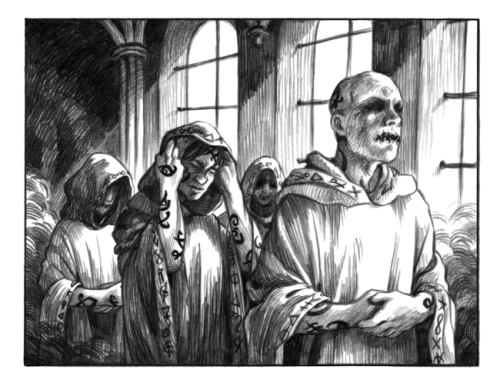 Do you feel living in New York City helps you get more work?
Do you feel living in New York City helps you get more work?
It has definitely helped, because it’s easy for me to go in for portfolio reviews and go to amazing illustration shows and lectures and events here. The Society of Illustrators is one of my favorite places. Meeting people face to face definitely puts you a step up, I think. It’s a huge community and you get to know so many people and mingle. Illustrators are generally pretty nice folks. I’ve gotten work thanks to them, and I have also passed on jobs to them as well. It’s just a friendly giving community.
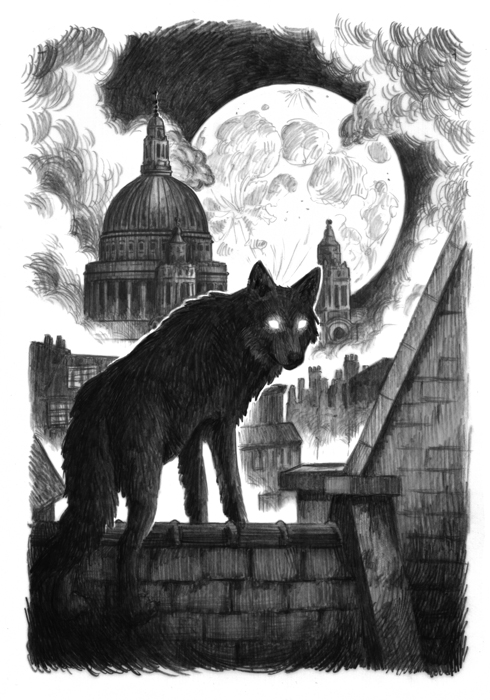
What illustrating contract do feel really pushed you down the road to a successful career?
Hard to choose, but I guess the Scholastic one since they have hired me multiple times!
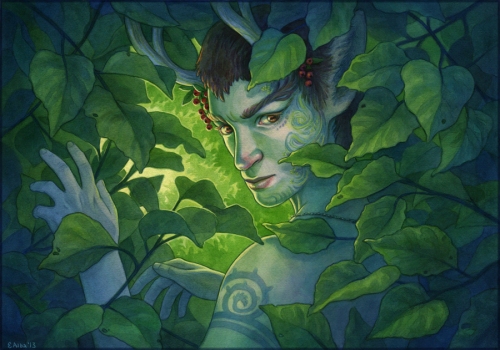
It looks like you exhibit your work at conventions? Can you tell us about that and has it been helpful in making contacts and getting you more business?
I’ve been to a lot of conventions, but the first one where I had a booth was Gen Con 2013. It is a gaming convention (board games, roleplaying games, etc), and it has a wonderful art show that my fiance has been a part of for a few years. I’d tag along and decided I wanted to exhibit at the art show too. I’d like to try to get some gaming work, and I am also breaking into the collectors market—that is, people who buy prints and original paintings. You can meet a lot of art directors at conventions. They stop by the booths, but sometimes they have portfolio reviews that you can sign up for. And it’s just more exposure in general for people who might want to collect art. Gen Con was a pretty successful first convention for me, a lot of sales!

How did you get involved in illustrating maps?
I worked on a private commission for an author who is self publishing her novel online (www.whyismud.com). She needed a fantasy map. I’d never done one before, but it was actually super fun. That single map was all I needed to get more map work.
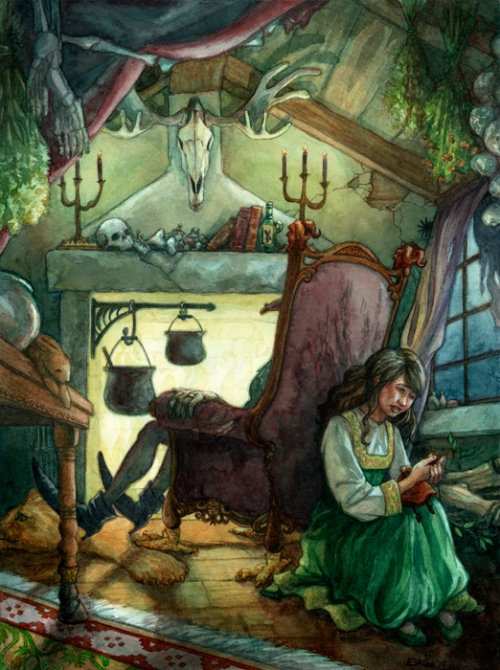
Have most of the maps you’ve done been for educational publishers or more for fantasy books?
A mix. For publishers it has been educational, and for private clients who are self publishing it has been fantasy.
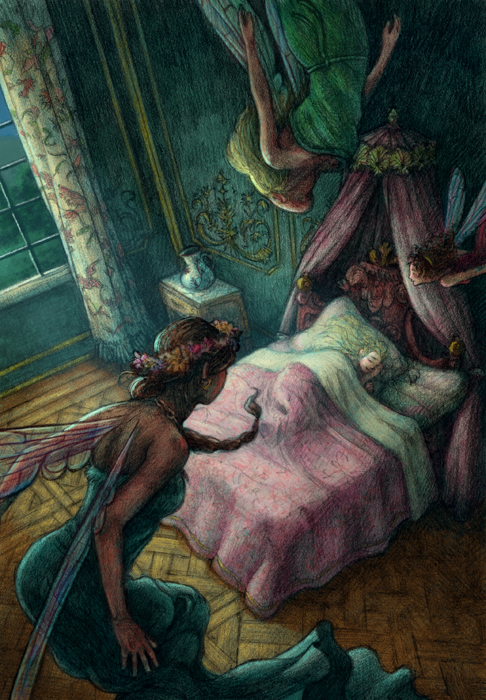
Have you done illustrations for any children’s magazines?
Not yet!
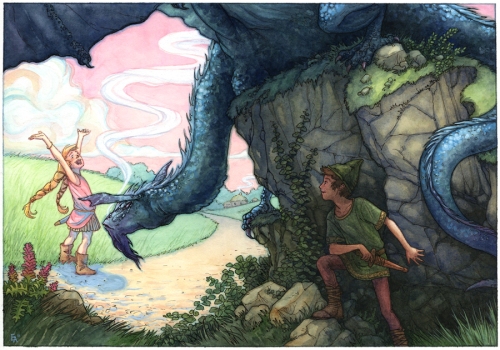
What materials do you use to paint your color illustrations?
My favorite materials are Dr. Ph. Martin’s Hydrus liquid watercolors and Holbein acryla gouache. Sometimes I use ink too, FW acrylic sepia ink or Dr. Ph. Martin’s Black Star matte ink. Sometimes I use a little bit of colored pencil. I also like working with pencil when I work in black and white.

What types of things do you do to find illustration work?
So much! Half the work is promoting yourself. I keep my website updated, my facebook artist page, tumblr, just started using twitter, selling on Etsy, various portfolio sites like Behance. I carry around business cards and attend a lot of illustration networking events. I make promotional postcards and greeting cards and mail them to a list of art directors from the SCBWI market guide, and to my contacts that I already have. I also email samples to my contacts and to any companies that accept email submissions. I attend conventions to meet more art directors and artists.
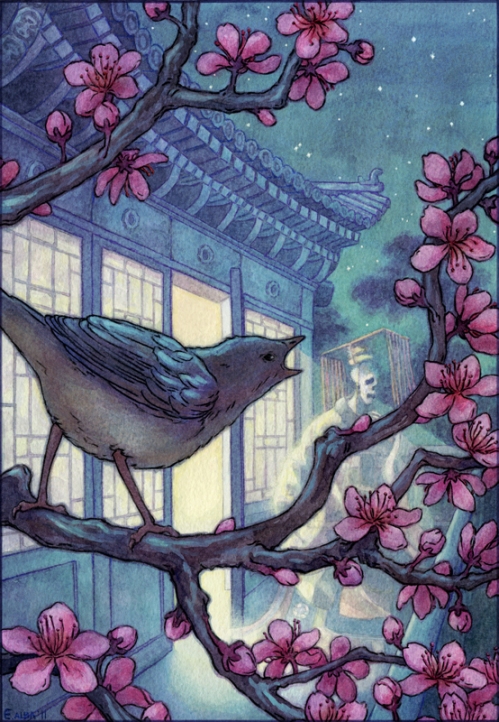
What is the one thing in your studio that you could not live without?
Probably my computer…. I do so much research on it, and keep all my reference images on it, and I do a lot of stuff digitally… It’s just so dang useful.
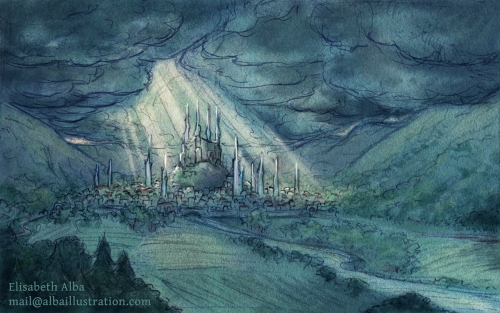
Do you try to spend a specific amount of time working on your craft?
I try to work 2-4 hours Monday-Thursday after my day job, and I get most of my work done Friday-Sunday. It depends on what I’m doing socially or how much illustration work I have. Sometimes on weekends I work from morning to late night, but sometimes I let myself off by dinnertime. I’d love to work even more but the day job makes it difficult!
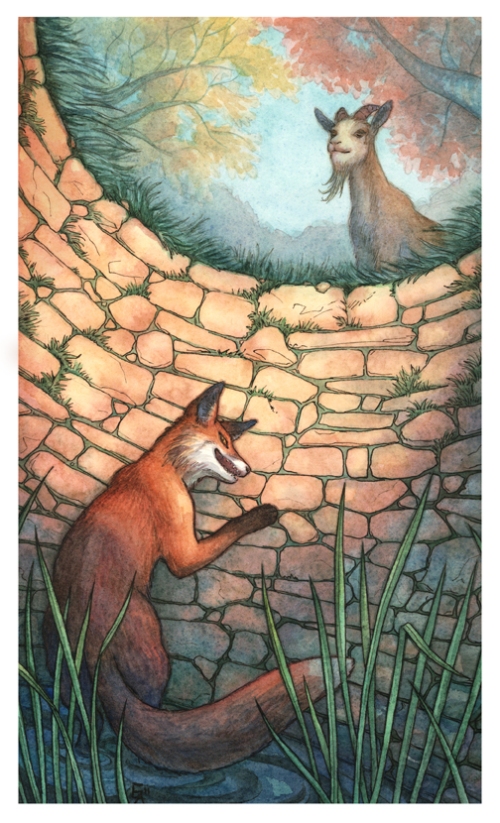
Do you take pictures or do any types of research before you start a project?
All the time! Since my work is more realistic I like to make sure my anatomy is correct and that my poses are actually doable. I also research historical clothing, architecture, plants, animals, etc.
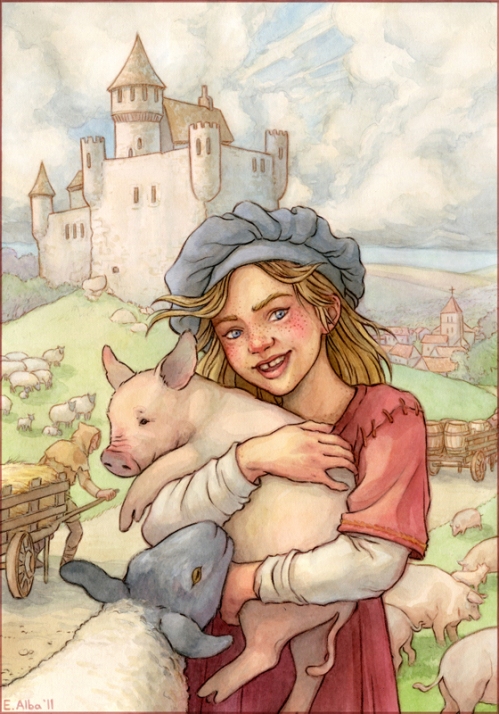
Do you think the Internet has opened doors for you?
Definitely. It’s great for promoting and networking, and that mentorship I mentioned with Rebecca Guay was all done online. If you’re not on the internet promoting your work or with a website than I can’t imagine how you would get work now…
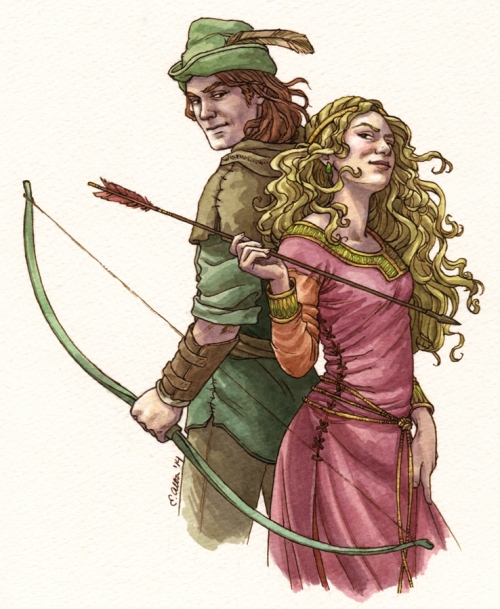
Do you use Photoshop or Corel Painter with your illustrations?
I’ve used Painter in the past and would like to relearn it. I use Photoshop all the time though.
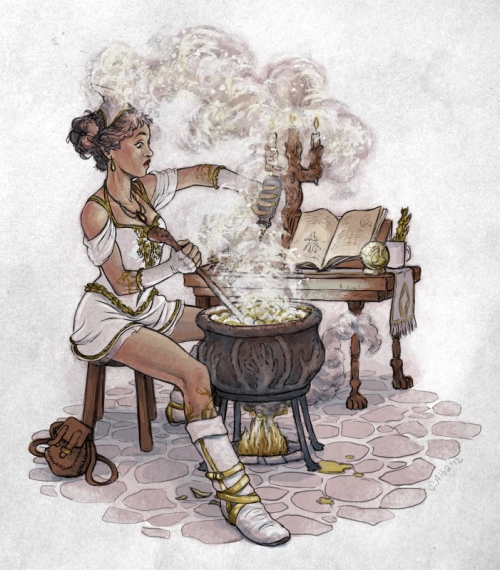
Do you own or have you used a Graphic Drawing Tablet in your illustrating?
I have an ancient Intuos II tablet. Should really buy a new one because it’s starting to act wonky! I do a lot of my sketching on Photoshop with my tablet. Also make my color tests digitally. Sometimes I work entirely digitally, but I prefer traditional media. It’s very useful to know though.
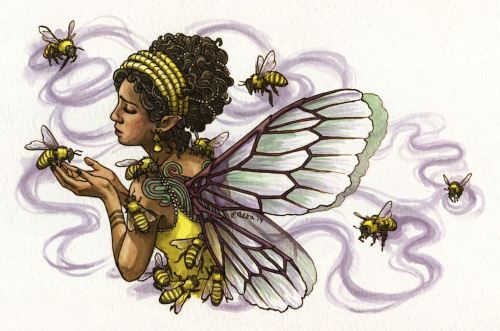
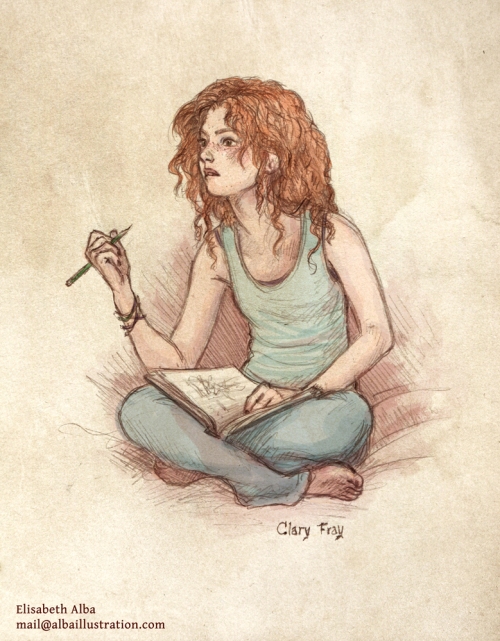
Do you have any career dreams that you want to fulfill?
I would love to get more fantasy work from publishers. My dream job would be to do covers and interior illustrations for a middle grade or YA fantasy book/series, like Harry Potter or Series of Unfortunate Events. Someday I might like to write and illustrate a book, but right now I’m just concentrating on getting more clients and building/improving my portfolio.
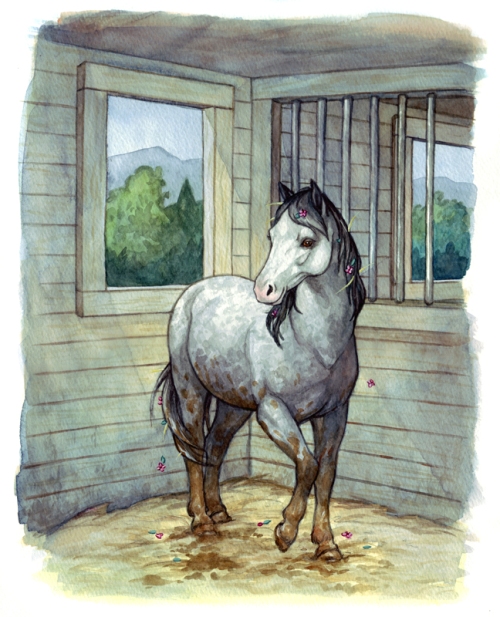
Above: Scholastic’s Fancy, part of the Breyer Stablemates book series.
What are you working on now?
I gave myself time to work on a personal project – I have a booth at MOCCA in April, a comic convention here in NYC. I wanted to make a comic sample to share, so I am working on that all this month. I am also working with a private client on her self-published fantasy book – a map and book cover!
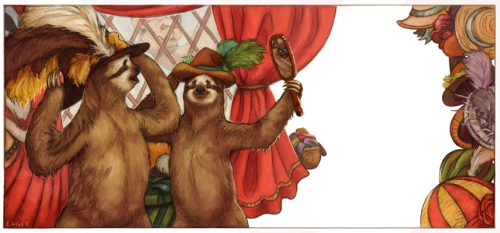
Do you have any material type tips you can share with us? Example: Paint or paper that you love – the best place to buy – a new product that you’ve tried – A how to tip, etc.
I love Dr. Ph. Martin Black Star matte ink. Sometimes it’s hard to find. I had to order it online last time. It’s completely waterproof and flows wonderfully. I also love working with layers of acryla gouache. My mentor, Rebecca Guay, recommended them. They flow like watercolor but dry like acrylics, so they don’t wipe away. Also, if the paper I’m working on isn’t too thick and it’s not too big, I print out my drawings directly onto the watercolor paper so that I don’t have to redraw it!
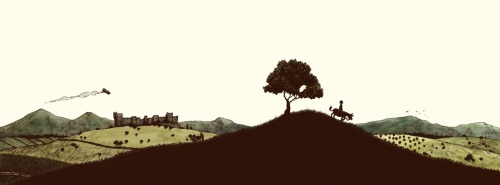
Book Cover for SVA thesis book, Nico’s Journey, watercolor and ink.
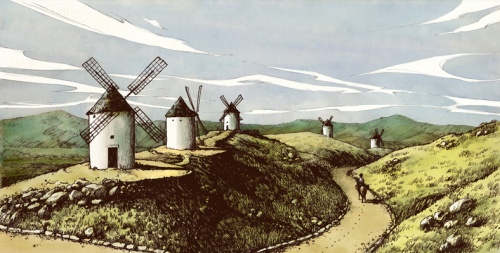
Interior Art

Any words of wisdom on how to become a successful writer or illustrator?
Don’t get discouraged. Do everything you can to keep improving. It is a lifetime of learning and practicing! Do what you love, not what you think gets work. You’ll end up making better work.

One of my interior illustrations of a young George Lucas (he was actually very handsome!) working on a draft of Star Wars, surrounded by reference material.
Thank you Elisabeth for sharing your process, journey, talent, and expertise with us. It is easy to see how you have managed to be so successful. Please make sure you let us know about all your future successes. We’d love to have you share them with us. You can see Elisabeth’s work at:
www.albaillustration.com
www.albaillustration.com/blog
https://www.facebook.com/albaillustration
https://www.etsy.com/shop/albaillustration
http://albaillustration.tumblr.com/
http://www.inprnt.com/gallery/albaillustration/
https://twitter.com/elisabethalba
Please take a minute to leave a comment for Elisabeth. I know I would love it if you did and I am sure Elisabeth would enjoy hearing from you. Who knows she could someday illustrate your book.
Talk tomorrow,
Kathy
Filed under:
authors and illustrators,
demystify,
illustrating,
Illustrator's Saturday,
inspiration,
Process Tagged:
Elisabeth Alba,
MFA in Illustration,
School of Visual Arts,
University of Flordia 


By: Kathy Temean,
on 3/6/2014
Blog:
Writing and Illustrating
(
Login to Add to MyJacketFlap)
JacketFlap tags:
Places to sumit,
Writer's Prompt,
Picture writing prompt,
Mark Meyers,
March First Page Critique,
Tips,
inspiration,
submissions,
authors and illustrators,
opportunity,
Add a tag
BELOW IS THE MARCH FIRST PAGE PICTURE PROMPT for anyone who would like a little inspiration to spark their first page.
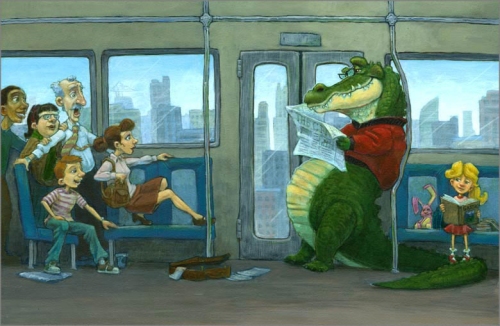
Always thought there was a story with this picture illustrated by Mark Meyers. Mark spends his days drawing and painting pictures filled with kids, escaping circus monkeys, and everything in between. He was featured on Illustrator Saturday. Here is the link: http://kathytemean.wordpress.com/2013/10/05/illustrator-saturday-mark-meyers/
I was not able to confirm our guest critiquer for March in time for this post.
Here are the submission guidelines for Sending in a First Page.
To send in a First Page: Please attach your double spaced, 12 point font, 23 line first page to an e-mail and send it to: kathy(dot)temean(at)gmail(dot)com. Also cut and paste it into the body of the e-mail.
Put “February First Page Critique” or “March First Page Picture Prompt Critique” in the subject line. Make sure you have your name on the submission, a title, and indicate the genre.
You can only send in one first page each month. It can be the same first page each month or a different one, but if you sent it to me last month and it didn’t get chosen, you need to send it again using the March directions. Of course, it doesn’t have to be the same submission. It can be a first page from a work in process or you can use the picture prompt above.
Please include your name, the title of the piece, and whether it is as picture book, middle grade, or young adult, etc. at the top.
CALL FOR ILLUSTRATIONS: Thank you to everyone would sent in an illustration last month. I still have a few in the folder that I plan to use, just looking for the right post, but I am running low, so please look to see if you have anything that you would like me to show off. I am looking for illustrations that would go well with the month or any illustration that might go with a writing or illustrating post. Same as always: At least 500 pixels wide, sent to kathy (dot) temean (at) gmail (dot) com, and include a blurb about you. Thanks!
Talk Tomorrow,
Kathy
Filed under:
authors and illustrators,
inspiration,
opportunity,
Places to sumit,
submissions,
Tips,
Writer's Prompt Tagged:
March First Page Critique,
Mark Meyers,
Picture writing prompt 


By: Kathy Temean,
on 3/5/2014
Blog:
Writing and Illustrating
(
Login to Add to MyJacketFlap)
JacketFlap tags:
Agent,
list,
Middle Grade Novels,
Publishers and Agencies,
Jenny Bent,
Places to sumit,
The Bent Agency,
Agent Wish List,
Editor & Agent Info,
Young Adult Novel,
opportunity,
Add a tag
 Jenny Bent is the founder of The Bent Agency. There is no reason why you shouldn’t try to snag an agent who has been in the industry for over 20 years. Just make sure that what you want to submit needs to be revised and polished and you feel the writing is at the top of your game, before sending a query letter. I thought you might like to read about her and what she is looking for. The Bent Agency has seven other agents working with Jenny. You should check them out, too.
Jenny Bent is the founder of The Bent Agency. There is no reason why you shouldn’t try to snag an agent who has been in the industry for over 20 years. Just make sure that what you want to submit needs to be revised and polished and you feel the writing is at the top of your game, before sending a query letter. I thought you might like to read about her and what she is looking for. The Bent Agency has seven other agents working with Jenny. You should check them out, too.
To send Jenny requested materials, please review our submissions guidelines Then email [email protected]
Jenny Bent represents literary and commercial adult, young adult, and middle grade fiction. She also represents nonfiction in the areas of memoir, humor and select narrative nonfiction.
I was born in New York City but grew up in Harrisonburg, Virginia in a house full of books where I spent many lazy afternoons reading in a sunny window seat. I went on to England to get a BA/MA with first class honors from Cambridge University, but I began my career in publishing as an undergraduate, with jobs at Rolling Stone and Ladies Home Journal. I then worked with prominent agent Raphael Sagalyn and with Michael Cader, the force behind the website Publishers Marketplace, before establishing a successful career at several boutique agencies. In 2003 I joined Trident Media Group, where I was promoted to Vice President before leaving to found the Bent Agency in 2009. I now live in Brooklyn in an apartment full of books and while there are not quite so many lazy reading afternoons, I manage to fit one in now and then.
My list is varied and includes commercial and literary fiction as well as memoir and select humor titles. In adult fiction, I particularly enjoy women’s fiction and crime/suspense. I also love novels—for grown-ups or children—that have an element of magic or fantasy to them or that take me into a strange and new world, whether real or imaginary. All of the books that I represent speak to the heart in some: they are linked by genuine emotion, inspiration and great writing and story telling. I love books that make me laugh, make me cry, or ideally do both.
Please send me:
- Literary fiction
- Women’s fiction
- Commercial fiction, including romance
- Young adult and middle grade fiction
- Memoir
- Humor
- Suspense/crime
I’m not currently considering queries in the following genres:
- Science fiction
- Poetry
- Picture books
- Serious nonfiction
- Reference
- Sports
- Self-help/how-to
JENNY’S SPECIFIC WISH LIST THIS PAST WEEK:
1. A classic YA fantasy with at least one female lead, like the upcoming LARK RISING by @sandrajwaugh
2. In general, I love strong, feisty female characters with a purpose
3. Non-genre fiction with a paranormal, fantasy or otherworldly element to it, like DISCOVERY OF WITCHES or NIGHT CIRCUS or GHOST BRIDE
4. Historical fiction based on a famous real life person
5. Women’s fiction or YA with a strong gothic feel.
6. Here’s some of what I am looking for: stylish psychological crime/suspense with at least one female lead (not cozy mystery, thanks).
7. Women’s fiction with a strong hook or premise and lots of plot and emotion.
8. Definitely would love some YA horror.
Follow on Twitter: @jennybent
Filed under:
Agent,
Editor & Agent Info,
list,
Middle Grade Novels,
opportunity,
Places to sumit,
Publishers and Agencies,
Young Adult Novel Tagged:
Agent Wish List,
Jenny Bent,
The Bent Agency 


By: Kathy Temean,
on 3/4/2014
Blog:
Writing and Illustrating
(
Login to Add to MyJacketFlap)
JacketFlap tags:
Agent,
Tips,
opportunity,
Agent Query,
Editor & Agent Info,
Publishers and Agencies,
demystify,
Places to sumit,
Liza Dawson Associates Literary Agency,
Agent Looking for...,
Agent Wishlist,
Hannah Bowman,
Add a tag
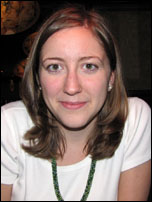 Thought you might like to see what agent Hanna Bowman said she was looking for this past week. Just remember now is not to time to start writing a story to fit this wish list, since by the time you finish, Hanna will probably be on to wanting other things. But maybe there is someone reading this post who has a manuscript written that is a perfect fit and is looking for a home. Or maybe you are working on something that fits and this will spur you on to finishing the book. Tip: Just make sure your manuscript is revised and polished before submitting. I hope this helps someone.
Thought you might like to see what agent Hanna Bowman said she was looking for this past week. Just remember now is not to time to start writing a story to fit this wish list, since by the time you finish, Hanna will probably be on to wanting other things. But maybe there is someone reading this post who has a manuscript written that is a perfect fit and is looking for a home. Or maybe you are working on something that fits and this will spur you on to finishing the book. Tip: Just make sure your manuscript is revised and polished before submitting. I hope this helps someone.
Hannah Bowman joined Liza Dawson Associates Literary Agency in 2011. She has a B.A. from Cornell University, summa cum laude in English and magna cum laude in Mathematics. While a student, she spent four summers working in particle physics at Fermi National Accelerator Laboratory, before eventually deciding her true interest was books.
Hannah’s clients include:
-Pierce Brown (RED RISING trilogy, Del Rey, Feb. 2014) -Rosamund Hodge (CRUEL BEAUTY, Balzer & Bray/HarperCollins, Jan. 2014) -Brian Staveley (THE EMPEROR’S BLADES, Tor, Jan. 2014) -Dianna Anderson (DAMAGED GOODS: CHRISTIAN AND FEMINIST IN THE WAR ON WOMEN, Jericho Books, Spring 2015)
In her free time, she plays the organ.
Hannah specializes in commercial fiction, especially science fiction and fantasy, young adult fiction, women’s fiction, cozy mysteries, and romance. Hannah is also interested in nonfiction, particularly in the areas of mathematics, science and religion (especially history and sociology of Christianity).
HERE IS HANNA’S WISH LIST (This past week):
1. I’d love some great narrative nonfic about the history of science, like Bill Bryson’s A SHORT HISTORY OF NEARLY EVERYTHING.
2. A Crichton-esque science thriller that really knows its science.
3. I’d love a great medieval mystery like Sharon Kay Penman’s THE QUEEN’S MAN
4. And I’m always looking for funny, lighthearted YA contemporary romance, the kind with no heavy issues.
5. I would love to find some great YA fantasy with a female protagonist — think Tamora Pierce, Sabriel,
6. I’m looking for books that play with narrative form like CODE NAME VERITY
7. I would love some great historical fantasy, or other epic fantasy for adults.
8. You know what I want? Fantasy, adult or YA, as fresh and creative as SABRIEL
9. The next Thursday Next. Smart, funny, brilliant, creative, full of literary meta-references
10. A medieval mystery series like Sharon Kay Penman’s THE QUEEN’S MAN or Sharan Newman’s DEATH COMES AS EPIPHANY.
11. YA girl-power fantasy a la Tamora Pierce with some really new, unusual worldbuilding.
12. In YA: a really funny (makes me laugh out loud funny) contemporary.
13. Funny urban fantasy like Kevin Hearne’s Iron Druid books.
14. More fantasy: I want the next LIES OF LOCKE LAMORA or THE PALACE JOB. Magic and heists and cons!
15. Military fantasy that tells its battles as well as THE THOUSAND NAMES — a really great magical campaign.
16. Gorgeously-written, literary historical fantasy — something as numinous as JONATHAN STRANGE AND MR. NORRELL.
Contact Hannah at [email protected].
HANNA’S QUERY TIPS:
1. Who’s the main character, and why is he or she interesting/appealing?
2. What’s the plot, and how will it surprise me and take my breath away?
3. What’s the setting, and what interesting elements make it seem real?
4. A compelling, three-dimensional character in a well-realized setting (realistic or speculative) with a page-turning story to tell, will hook me.
Blog: http://hannahbowman.tumblr.com/
Twitter@hannahnpbowman
For further insight, Literary Rambles has an interview and links to other interviews with Hanna.
Talk tomorrow,
Kathy
Filed under:
Agent,
demystify,
Editor & Agent Info,
opportunity,
Places to sumit,
Publishers and Agencies,
Tips Tagged:
Agent Looking for...,
Agent Query,
Agent Wishlist,
Hannah Bowman,
Liza Dawson Associates Literary Agency 


By: Kathy Temean,
on 3/3/2014
Blog:
Writing and Illustrating
(
Login to Add to MyJacketFlap)
JacketFlap tags:
success,
Editors,
authors and illustrators,
Publishing Industry,
Sarah Shumway,
Kudos,
Kat Yeh,
Ame Dyckman,
2014 BEA BUZZ BOOKS,
Erza John Keats Award,
Add a tag
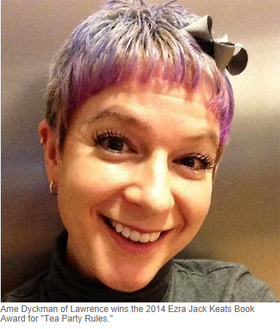 Ame Dyckman’s newest book, “Tea Party Rules,” illustrated by K.G. Campbell, was selected as the winner of the 28th annual Ezra Jack Keats Book Award.
Ame Dyckman’s newest book, “Tea Party Rules,” illustrated by K.G. Campbell, was selected as the winner of the 28th annual Ezra Jack Keats Book Award.
The award is presented to a new writer and new illustrator each year, and Dyckman will be on hand at the 2014 awards ceremony set for April 10, during the Fay B. Kaigler Children’s Book Festival at the University of Southern Mississippi in Hattiesburg.
Dyckman will receive a gold medallion as well as an honorarium of $1,000 at the ceremony. Kathi Appelt, award-winning author of numerous books for children and young adults, will be a guest presenter.
Dyckman said it is an honor to be selected for the award, which includes a prestigious seal on the sleeve of her book. She said she is a fan of Keats’ most famous work, “The Snowy Day.”
“We’re over the moon,” she said of her team, which includes Campbell and her publishing team at Viking Children’s Books. “I’m honored, thrilled and astounded.”
“Tea Party Rules,” Dyckman’s second book, follows the adventures of a bear attending a tea party. But before he can participate, the hostess lays down the rules. The two become friends and learn about how to compromise and enjoy playtime together.
That book, along with her first published work, “Boy + Bot,” illustrated by Dan Yaccarino, earned sterling reviews on Amazon and from book critics. “Tea Party Rules” also was selected by Dolly Parton’s Imagination Library as a book that will be distributed to children in need.
You can read the full article that was written by Michele Angermiller for The Times by clicking this sentence.
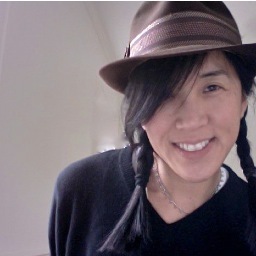 The news is finally out:
The news is finally out:
THE TRUTH ABOUT TWINKIE PIE by Kat Yeh has been selected as a Buzz Book at Book Expo America this year! Kat is quite excited and I am excited for her debut middle grade novel.
T.S. Ferguson, Associate Editor at Harlequin Teen is super excited because one of his books, Lies We Tell Ourselves by Robin Talley made the YA Buzz Books List. Because of that he gets to sit on a panel with four other editors , including Alvina Ling and talk about it to a packed crowd of book buyers, librarians, and other industry professionals. He says, “I’m SO excited that this amazing book is getting attention, and so excited that I get to be the one to talk about it.” It is the first time a Harlequin TEEN book has been selected!
Here are the Buzz Books that made the list:
YOUNG ADULT (YA) EDITORS BUZZ ‘14 BEA YA
Editors Buzz Thursday, May 29 10:00am – 10:50am Room 1E10/1E11
BEA Editors Buzz YA Books – Author Stage Friday, May 30 10:00am – 10:30am Uptown Stage
Lies We Tell Ourselves
by Robin Talley
Publisher: Harlequin Teen
Publication Date: 9/30/14
The Jewel
by Amy Ewing
Publisher: Harper Teen
Publication Date: 9/2/14
The Walled City
by Ryan Graudin
Publisher: Little, Brown Books for Young Readers
Publication Date: 11/4/14
I’m Glad I Did
by Cynthia Weil
Publisher: Soho Teen
Publication Date: 1/27/15
King Dork Approximately
by Frank Portman
Publisher: Delacorte Press
Publication Date: 9/9/14
MIDDLE GRADE EDITORS BUZZ ‘14
BEA Middle Grade Editors Buzz
Friday, May 30
11:00am – 11:50am
Room 1E12/1E13
BEA Editors Buzz Middle Grade Books – Author Stage
Friday, May 30
1:00pm – 1:30pm
Uptown Stage
The Truth About Twinkle Pie
by Kat Yeh
Publisher: Little, Brown Books for Young Readers
Publication Date: 1/27/15
Zoo at the Edge of the World
by Eric Kahn Gale
Publisher: Balzer + Bray
Publication Date: 8/26/14
Pennyroyal Academy
by M.A. Larson
Publisher: Putnam Books for Young Readers
Publication Date: 10/7/14
The Witch’s Boy
by Kelly Barnhill
Publisher: Algonquin Books for Young Readers
Publication Date: 9/16/14
Life of Zarf
by Rob Harrell
Publisher: Dial Books for Young Readers
Publication Date: 8/28/14
PROMOTIONS:
In December Phaidon, a publisher best known for its lavishly produced art books, has hired Judith Regan as the CEO of a new division at the company called Regan Arts. Phaidon said the division will include a book imprint, but will also function as a “multimedia enterprise.” Now Ron Hogan has joined Judith Regan’s new company Regan Arts as an editor, acquiring both fiction and non-fiction.
Grand Central Publishing (part of the Hachette Book Group) promoted Emily Griffin, Michele Bidelspach, and Alex Logan to senior editors. Megha Parekh has been promoted to associate editor, while Libby Burton and Lindsey Rose move up to assistant editor.
Reka Simonsen will join Atheneum as executive editor, effective March 10. Previously she was executive editor at HMH Children’s.
Sarah Shumway will join Bloomsbury Children’s Books as senior editor on March 3. Previously she was senior editor at Harper Children’s Katherine Tegen Books imprint.
Cara Bedick has joined Harlequin as senior editor, Harlequin Nonfiction.
Caitlin Kirkpatrick has been promoted to assistant editor at Chronicle.
Consortium will distribute Blue Apple Books, the Maplewood, NJ-based children’s book publisher, as of June 1, 2014.
Talk tomorrow,
Kathy
Filed under:
authors and illustrators,
Editors,
Kudos,
Publishing Industry,
success Tagged:
2014 BEA BUZZ BOOKS,
Ame Dyckman,
Erza John Keats Award,
Kat Yeh,
Sarah Shumway 


By: Kathy Temean,
on 3/2/2014
Blog:
Writing and Illustrating
(
Login to Add to MyJacketFlap)
JacketFlap tags:
authors and illustrators,
How to,
Melissa Iwai,
New Idea,
demystify,
Nanci Turner-Steveson,
Agent Sean McCarthy,
Steve Meltzer,
Ask Kathy,
March Writer's Retreat,
Add a tag
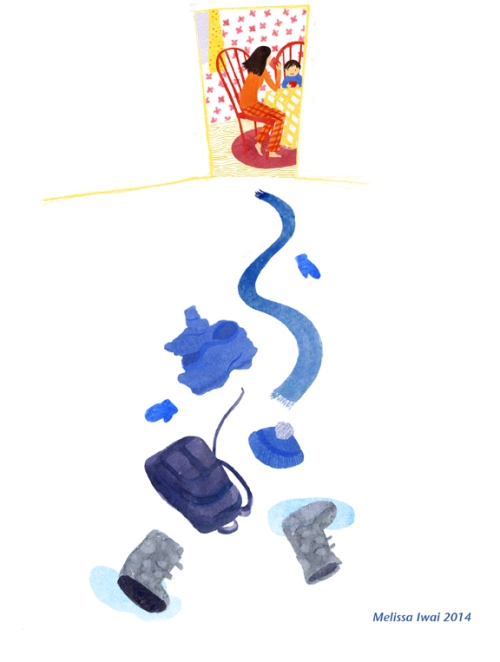
This fun illustration was sent in by Melissa Iwai. Melissa has illustrated over twenty picture books, and her first picture book that she wrote and illustrated was, Soup Day. She was featured on Illustrator Saturday on October 13, 2012. Click here to view.
In the past couple of weeks I have realized that there are always new writers and illustrators stopping by in hopes to learn more about the children’s book publishing industry. I have been blogging everyday for the last five years and so many subjects have been discussed, but many of you have not been following me for that many years. Example, I was afraid to blog about the formatting issue thinking that writers would think I wasn’t covering a important topic, but it turns out that many of you thanked me for clarifying the subject. I breathed a sigh of relief, because I don’t want to waste anyone’s time.
This lead me to wondering if you had more questions that you would like answered. If you do I would be willing to collect them, answer the ones I know and get editors and agents to weigh in on others. Why don’t we give it a test run? I am going to the March Writer’s Retreat that I put out there at the end of last year. Steve Meltzer, Associate Publisher/Executive Managing Editor of Dial Books for Young Readers, Dutton Children’s Books, Kathy Dawson Books, and Celebra Children’s Books and Agent Sean McCarthy from McCarthy Lit are the two faculty members for our small group. We will be spending the weekend with them, so I could get answers to anything you want to know.
If you have a burning question, please send it to Kathy.temean(at)gmail.com. You can ask more than one question and it can be about any aspect of the children’s publishing industry. You can be a completely new writer or illustrator, or an author or and illustrator who has published many books. Just make sure you put ASK KATHY in the subject area of the email, so I can search on that. I look forward to reading your questions and sharing the answers later the month.
Had to share the picture below with all you winter weary people out there. Nanci Turner Steveson move from New Jersey to her dream state – Wyoming. Maybe you will feel a little less weary after you see all the snow at her house.
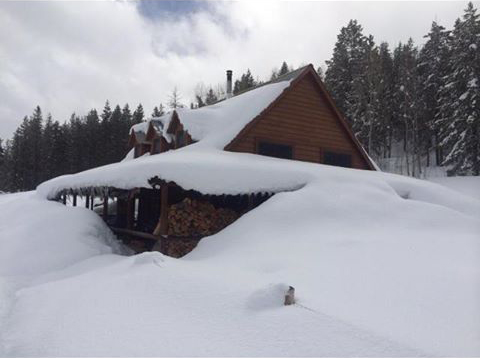
Now that is snow. It brings the words, “Cabin Fever” to my mine.
Talk tomorrow,
Kathy
Filed under:
authors and illustrators,
demystify,
How to Tagged:
Agent Sean McCarthy,
Ask Kathy,
March Writer's Retreat,
Melissa Iwai,
Nanci Turner-Steveson,
New Idea,
Steve Meltzer 


By: Kathy Temean,
on 3/1/2014
Blog:
Writing and Illustrating
(
Login to Add to MyJacketFlap)
JacketFlap tags:
Tips,
Events,
Advice,
Ferida Wolff,
authors and illustrators,
kathy temean,
Colleen Kosinski,
Fun Time Talking about Writing and Illustrating,
Michelle Munger,
NJSCBWI Social,
Add a tag
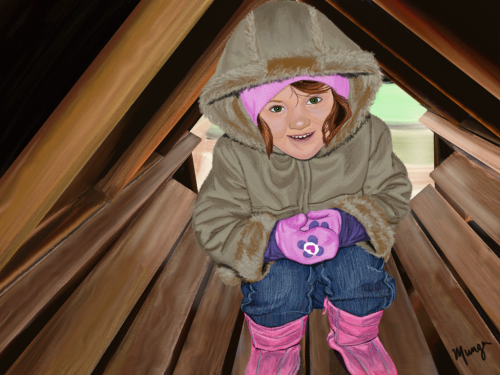
We are all hoping this little girl who is bundled up for the snow, will be able to shed those heavy clothes in a few weeks. Well, spring really is just around the corner, said by someone who is waiting for the next snow storm that is about to bear down on New Jersey. Michelle Munger is the illustrator of this cute painting. She is a realistic painter and has been painting for the last ten years. She also dabbles in painting whimsical and fantasy as well as attempting to write that next big YA breakout novel. You can find her at: http://michellemunger.moonfruit.com and http://michellesportraits.com
When Leeza Hernandez took over for me as New Jersey’s SCBWI Regional Advisor, she started doing some smaller meetings and has resurrected an idea that David Caruba used to do in the summer at people’s homes over decade ago, but now the New Jersey Chapter has added SCBWI Socials in various locations around the state. Last Wednesday we had our first social in this area at Dubh Linn Square in Cherry Hill. I was asked to be host, which I gladly did. We had 12 members show up and had a great time. It was nice to socialize with members I knew and it was great to see and meet new members who recently have joined. I think we have developed as a chapter to the point where it is nice to just meet without having and editor or agent join us. It give us the freedom to focus on each other, talk, and answers questions that might not be asked with an industry professional present. If you get a chance to attend one, do so. Everyone left an hour after the scheduled end and we all said, “We have to do this again.”
I was the only one who took pictures and that’s because Mieke or Ann reminded me – easy to forget when you are busy talking and enjoying yourself. So I’m not in the pictures, but you can meet everyone else below.
Here’s the simple tip I shared with everyone: Lately I have seen a lot of manuscripts with this mistake: Text with double spaces at the end of each sentence. Do not leave two spaces at the end of your sentences. I used to do this, too, because I was taught to type this way. It looked better to me. If you read agents blogs or posts, you will see them mention that leaving two spaces at an end of a sentence is one of their pet peeves, so why not try to break the habit? It makes you look old and stuck in your ways if you don’t. When you kick the habit and stop double clicking at the end of a sentence, you will see how annoying it is to read a manuscript that way. It sticks out like a sore thumb for me now. Get with it and break the habit. Why take a chance of irritating someone who reads your work?
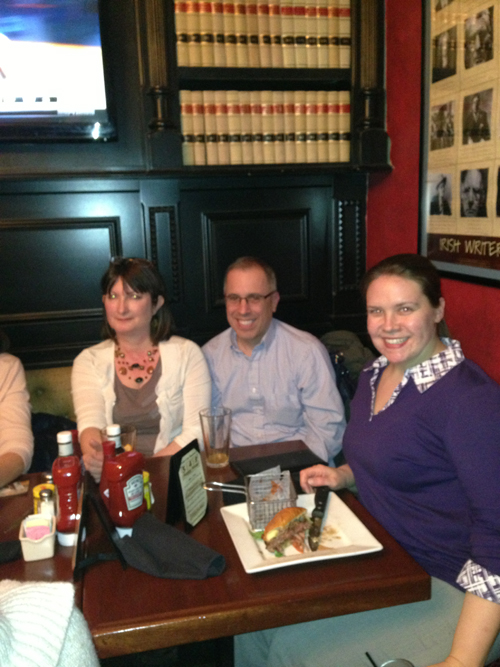
Left to Right: Colleen Kosinski, her husband, and Amy Hollinger.
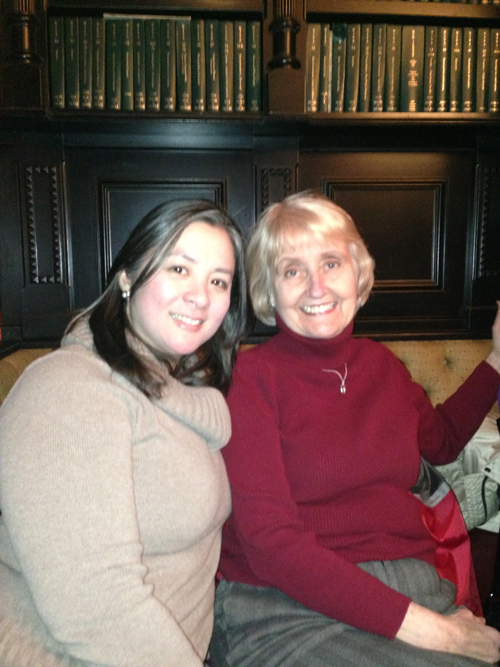
Left to Right: Mieke Zamora-Mackay and Jody Staton
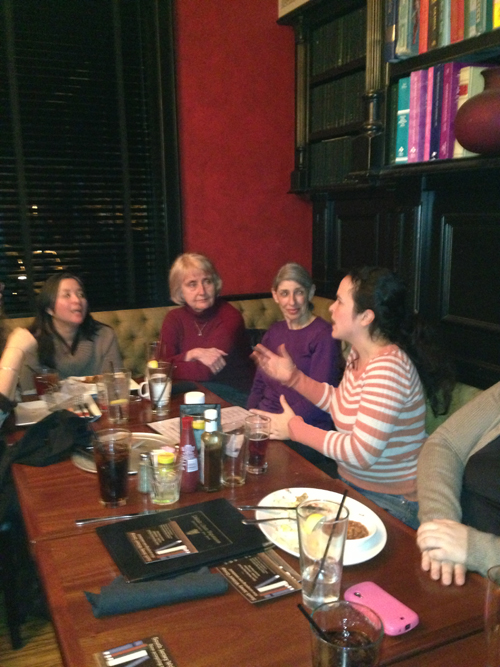
Left to Right: Mieke Zamora-Mackay, Jody Staton, Ferida Wolff, and Erika Wassall.
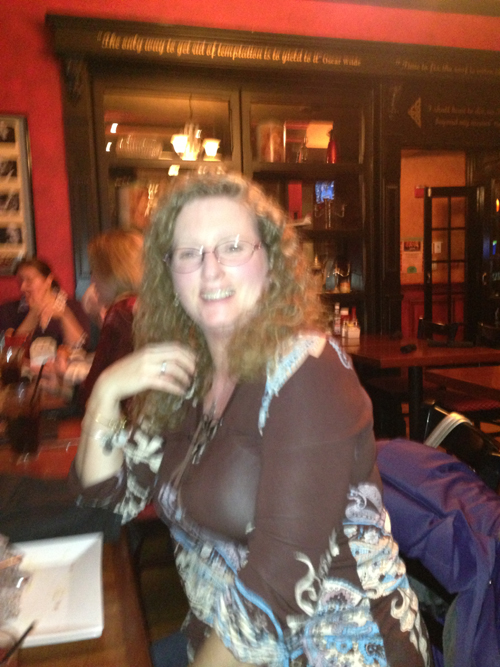
The Lovely Ann Magee who was sitting next to me and didn’t have enough room to take a good picture. She is even better looking when she isn’t blurred.
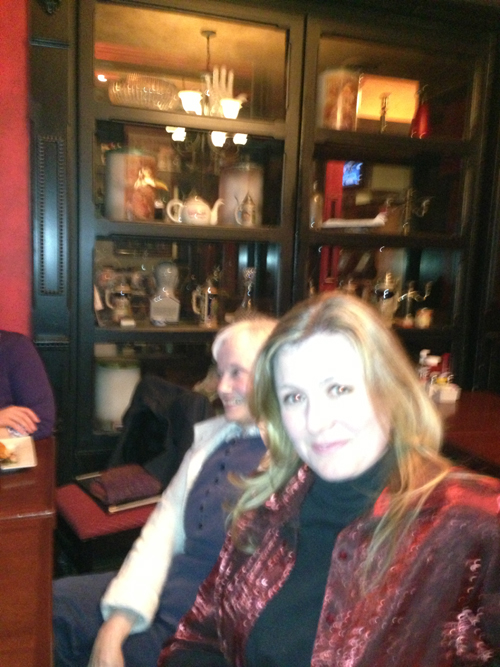
In foreground is Angela De Groot and behind her is Nikki Saltarelli.
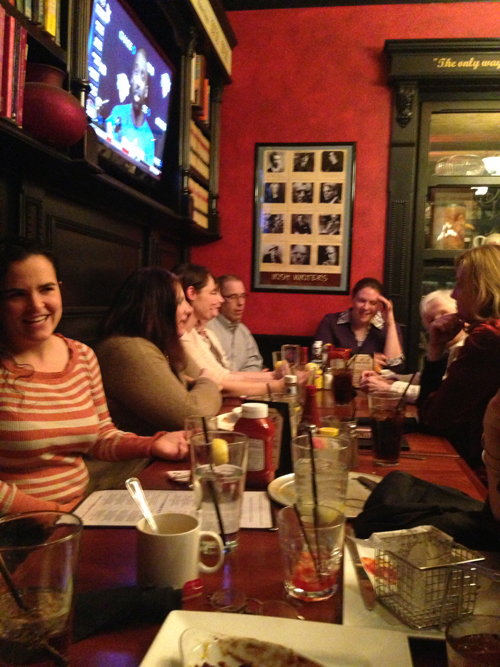
Left: Erica Wassall and at end of table is Amy Hollinger.
Talk tomorrow,
Kathy
Filed under:
Advice,
authors and illustrators,
Events,
Tips Tagged:
Colleen Kosinski,
Ferida Wolff,
Fun Time Talking about Writing and Illustrating,
kathy temean,
Michelle Munger,
NJSCBWI Social 


By: Kathy Temean,
on 2/28/2014
Blog:
Writing and Illustrating
(
Login to Add to MyJacketFlap)
JacketFlap tags:
Interview,
Tips,
inspiration,
Advice,
Process,
authors and illustrators,
Wendy Martin,
An Ordinary Girl,
demystify,
Illustrator's Saturday,
School of Visual Arts,
Add a tag
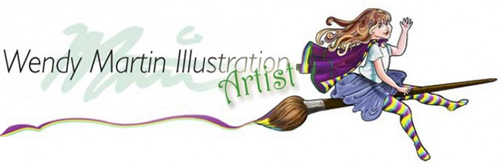
 A transplanted New Yorker now living in Missouri, Wendy Martin has been working as an illustrator for 25+ years.
A transplanted New Yorker now living in Missouri, Wendy Martin has been working as an illustrator for 25+ years.
Wendy’s love affair with art and illustration began at an early age. One of her earliest memories is of sitting with a pile of crayons and papers strewn around her proclaiming to her parents that someday everyone in the world would be looking at her art. In spite of her parents’ attempts to steer her toward a more practical choice, she never wanted to do anything else.
So, Wendy followed her heart and earned a degree in Fashion Design from the Fashion Institute of Technology, then continued her art education at the School of Visual Arts, earning a B.F.A. in Graphic Design. These disciplines can still be seen in her work in her strong lines, textures and detailed patterns.
Her career began in advertising and graphic design in New York, where she was often called upon to create spot art for a variety of clients, which included Fortune 500 companies such as Kraft, General Electric and Sears. After her move to Missouri in 2000, she turned her focus to her true love, children’s books. An Ordinary Girl, A Magical Child, a children’s book she both wrote and illustrated was released in 2005. When the original publisher folded, An Ordinary Girl, A Magical Child was picked up by a new house, edited and re-released in 2008, then went on to become a finalist in the 2009 international COVR awards. Four additional picture books and a coloring book quickly followed.
Wendy can still be found sitting around her studio with papers strewn around her creating stories and illustrations for children. She has since traded in her crayons for watercolor, pen and ink, and a computer.
She is a member of the Society of Children’s Book Writers and Illustrators, and the Mixed-Up Files of Middle-Grade Authors.
Here is Wendy discussing the February 2014 promotional postcard mailer she created entirely in Adobe Illustrator:
I’ve been using AI since it first came out. Sometime in the early to mid 90s, I believe. That first version of the program was installed via a couple of 3×3 floppy disks. Remember those? Not very floppy, and incredibly tiny amount of storage space. I currently use CS5, the CD for the program stores more data than my first Apple computer.
Not only has AI become a much bigger program, it now has so many more capabilities to create painterly art. Here is my illustration process in Adobe Illustrator.
I start out with paper and pencil. I may use a sketchbook, but in most cases, I just grab a piece of blank copy paper and scribble till something comes of it. Once I have a messy thumbnail down (I won’t bother sharing it, since it is unintelligible to anyone but myself) I work on character development. Characters are sketched separately, scanned in and layered into Photoshop. Adjustments and revisions are made and background options explored.

Once I have my rough layout designed in Photoshop, I bring the file into Illustrator as a template layer. I begin inking over the pencil rough. As you can see above, the inking has some major changes, especially to the right half of the image. I decided the image of the three boys and a dog playing with a couple of basketballs was too ordinary. I added more story telling to the illustration by changing the middle boy’s basketball to a swirl of light. Where the boys crossed over the division delineated by the swirl, they and their environment became a fantasy world. The dog was out-of-place, so it transformed into a fox.
I create my characters on separate layers in AI, that way I can revise them in placement, size etc, easily. The only drawback, if you can call it that, of this technique is I have to draw each character in its entirety. It’s a little more work initially, but makes the fine adjustments throughout the image creation much less of a hassle.

When the majority of the character inking is done, I begin adding flat color. With this piece, I had several false starts with getting the swirling light and the portal to reflect the vision in my head. Glowing orbs of light are a lot easier to accomplish in Photoshop, apparently, because I couldn’t find any reference or samples created utilizing AI. Since I didn’t want the background to compete with all that was going on with the main characters, I hadn’t inked it. I wanted to simulate a bright sunny day, but differentiate the left side from the right. I also wanted to avoid flat colors in the hills, fields and court surface, so I messed around with a variety of textures until I got the effect I was looking for. The glowing orb and separation are progressing to closer to the image in my mind. I added a larger, darker version of the background flowers to the foreground.

I worked the details into the left side of the background, adding leaves to the tree with flowers and grass at its roots. I decided the costuming on the boys was too similar in color and values to those of the background. I changed them so the boys appeared to jump forward in the space. The glowing orb and its trailing light has finally come close to what I was aiming for. I began laying in the fur on the fox to make it more dimensional. Then I moved to the boy on the left and concentrated on the highlights and shadows on him, his clothing and the basketball he’s dribbling.
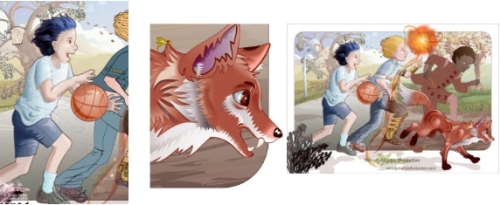
I worked on the boy and then moved over to the fox bring dimensionality and a painterly feel to both of these characters. Then I completed the background on the right side, adding the trees, leaves, flowers and grasses along with their shadows. The color and shading were also added to the basketball hoop. Shading and highlighting of the middle boy was also attacked, paying special attention to the cross-over details on his clothing to differentiate the mundane from the magical worlds he was straddling. The lighting on this was tricky since he is split by the trailing light of the glowing orb.

More details were added to the fox before I moved on to the last boy. As I was working, I noticed all the boys’ legs were in the same position. I didn’t like the way the elf shoes were hitting the fox, so I revised the boy’s lower half to add more variety to the children and remove the confusion between the elf shoes and fox. Once the revisions were made, I continued adding details to the woodland elf costume. It’s hard to tell here, but the elf-child has leaves scattered in his hair as well. I also decided the style of middle boy’s hand didn’t match the rest of the image, so I made it more realistic and changed its position.
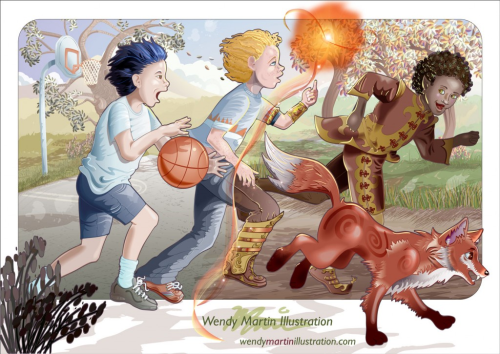
While I was adding final details, I decided the two boys on the left needed to have their faces revised. Although the adjustments are minor, they gave the boys more definition and made their faces more in keeping with the semi-realistic style of the image. Almost done but for a few more minor revisions.
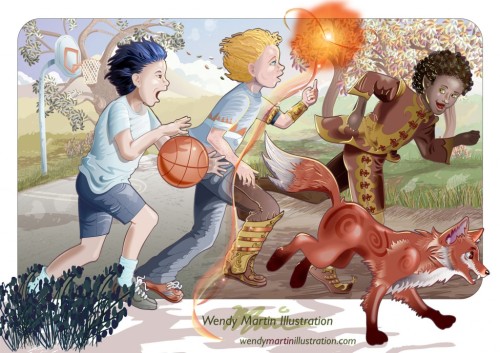
Finished piece.
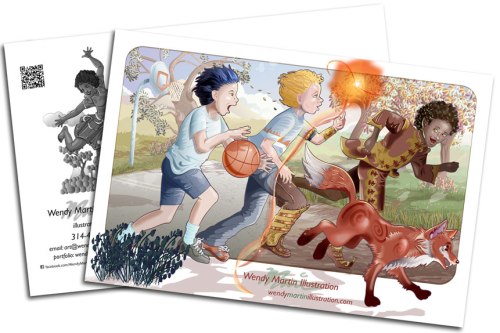
Here is the printed piece back from the printer and ready to mail out.
How long have you been illustrating?
I’ve been creating art in one form or another for as long as I can remember. When I was 12, the children’s librarian was so impressed with my origami pieces she invited me to be the guest artist for the display cases in the children’s wing library entrance. It was quite an honor, since the guest artists were usually well-known professionals from Long Island or New York. The display cases where 2’x6’ long and about 18” high, one case on each side of the entrance hall. I created a mountain village scene for one and a fishing village scene for the other. It took me three months to complete all the origami pieces.

How did you decide to attend Fashion Design from the Fashion Institute of Technology?
I went to a very large high school. There were close to 3,000 students in the 3 grades. Because of the size of the school, and the affluence of a lot of the surrounding communities, my upper grade education was more like college. The high school had wings divided by discipline. One of the wings was the Arts and Theater wing. I had classes in fashion illustration, textile design, life drawing and costuming. I was very passionate about pattern and textile. Everyone assumed I would go to an art college. I wanted to focus on illustration, but my parents talked me into going into fashion design because they believed it had more practical applications in the working world. I applied to Pratt, FIT and Parsons. Pratt granted me a full scholarship, but when my parents and I went to visit the college, they were afraid for my safety in the Brooklyn neighborhood the college was located in. I chose FIT because it had a 2-year program and I wanted to get out on my own as soon as possible.
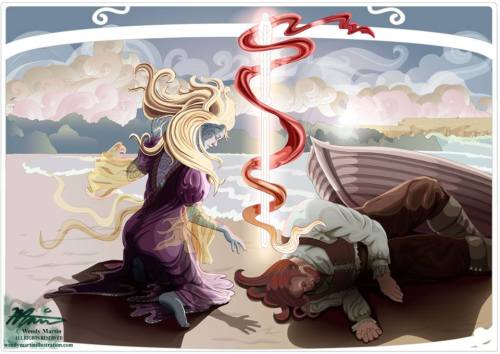
What made you decide to continue your education at the School of Visual Arts for Graphic Design?
I was offered a job before I even graduated from FIT. I was thrilled until the newness wore off. I was the designer for a little firm that created clothing for low-end department stores similar to what Wal-Mart is today. Part of my job was to go to places like Macy’s and Bloomingdales and make sketches of their merchandise, bring my sketches back and make patterns for my employer. In the fashion world it’s called a knock-off and was part of the business. It was sucking the soul right out of me. So I left the fashion world and got a job as an illustrator at a hand-painted clothing store. I was paid by the piece, and became really fast at copying the owner’s designs onto various items of clothing. I struck out on my own, came up with my own line and gave it a go. Part of what I needed to do was create advertising. I loved putting all the pieces together, but decided I would be better off if I got my BFA and learned from experts. So I applied to SVA for their Graphic Design program.
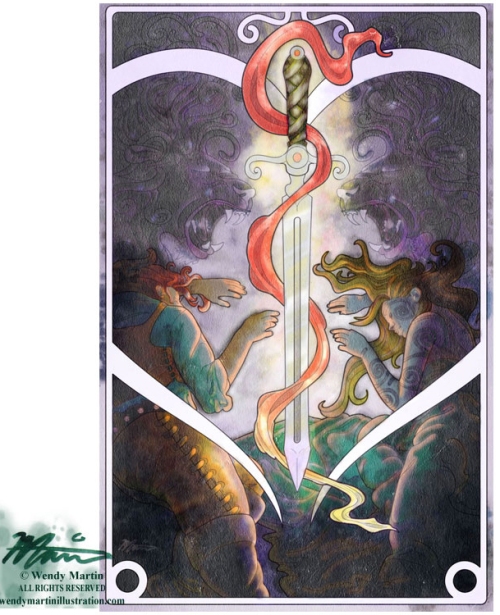
What were you favorite classes?
Richard Wilde, the head of the Graphic Design program, taught one of my classes. He really pushed the students to think outside of the box to fulfill the assignments. I loved that class because there was always a new challenge. I no longer remember what it was called, but I do know Mr. Wilde create a book a number of years later based on the class with samples of student work.
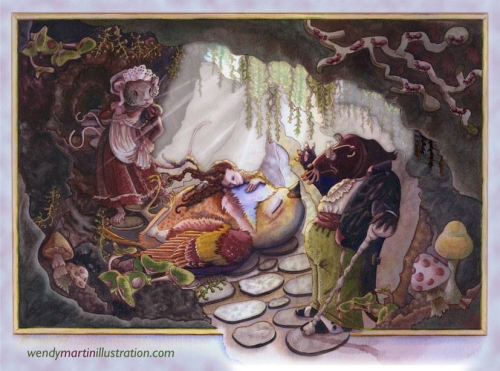
Did SVA help you get the job in advertising after you graduated?
Not really. At that time NYC was a very scary place to be living. I move to Connecticut right after I graduated. I got a job as an Art Director for a publisher of 5 business trade publications. After working there for a while, I found a job closer to home as a paste-up artist for an advertising firm that created ads for the telephone book yellow pages and menus for fine dining establishments. The owner of that business got into serious trouble with the law. One day, after I’d been working there for a few years, I showed up to work and the building was padlocked shut. So I became a freelancer. One of the places I freelanced for was Black Birch Graphics, a non-fiction school library book publisher. Another place I freelanced was an advertising agency creating business-to-business publications for Fortune 500 companies. Eventually, I ended up freelancing for this company full time. I was with them for 9 years.
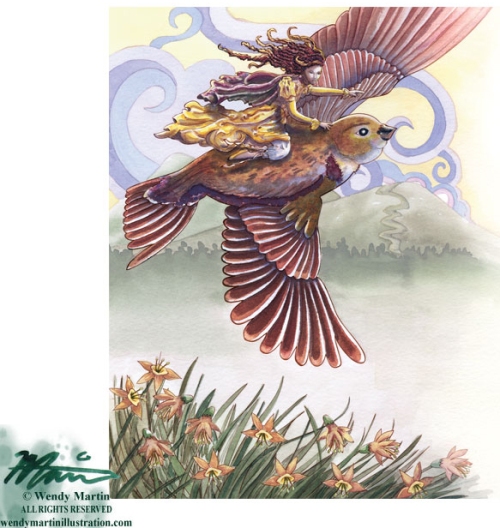
What made you leave that job in Connecticut and move to Missouri?
I blame the Internet. I met the man who became my husband on-line. He didn’t want to be separated from his children by moving to New England, so I sold my house by the beach and relocated to Missouri.
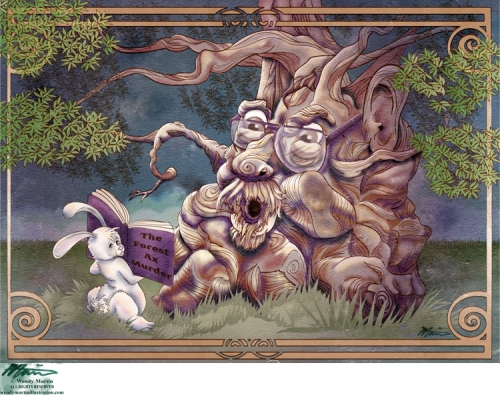
Do you feel that the classes you took in college have influenced your style?
Yes. I love patterns and flowing lines in clothing. My style is very graphic as well, probably from long years as a technical illustrator with the advertising agency.
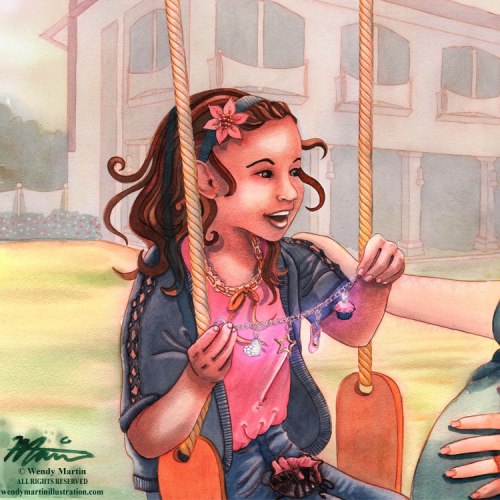
What was the first art related work that you did for money?
When I was 11 or 12, my mother hired me to illustrate a pamphlet she wrote on dog training. I created 5 illustrations for her. I think she paid me $50. The illustrations were not very professional, but I got paid.
My first “real” illustration job was for Crossword Magazine in 1987. Mr. Wilde had an agreement with the art director to show him student work. If the AD liked any of the images, the student was offered the opportunity to create mechanicals for the cover of the magazine. I had two pieces selected. This was before computers. I had to ink all those lines by hand, with a Rapidograph. I was lousy at it and ended up hiring a fellow student to do the inking for me. We split the fee.
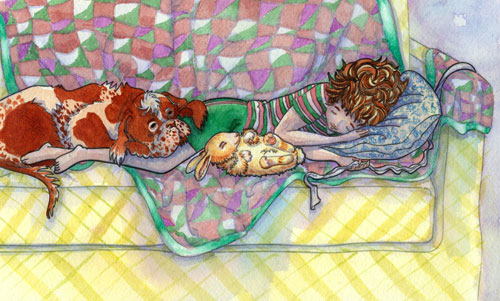
When did you decide you wanted to illustrate a children’s book?
After I moved to Missouri.
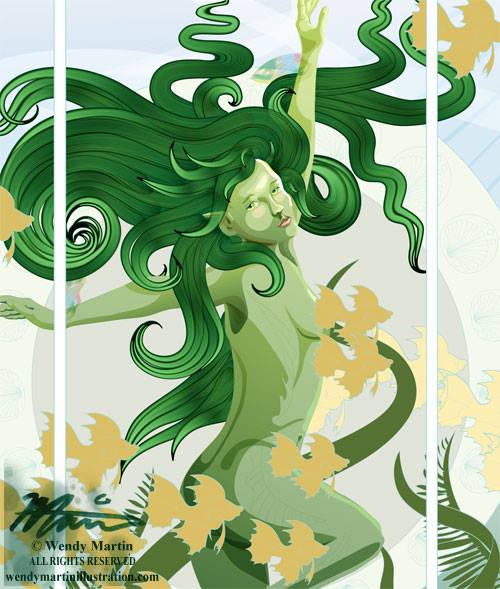
How did you do freelance work while you were working to break into the children’s publishing industry?
I freelanced for places like Sear Photo Studios, Purina, and Mays Company. I did illustration, logo design, prop design, photo retouching and general graphic design.
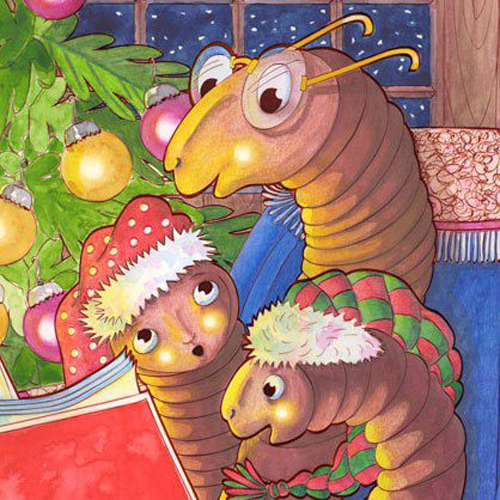
Was An Ordinary Girl, A Magical Child, your first book?
Yes.
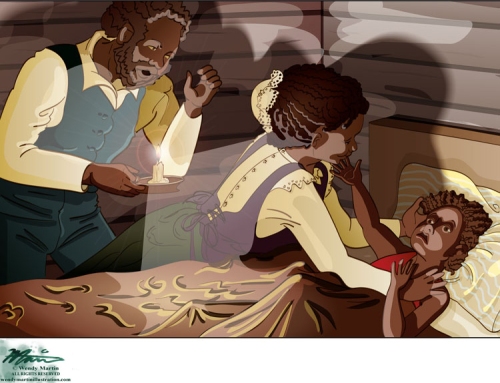
Who published that book in 2005?
Pagan World Press
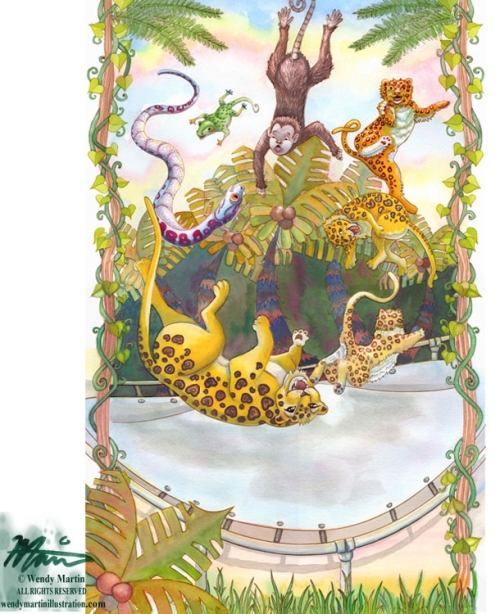
How did that contract come about?
Ordinary Girl is a very niche book. The rejections I received all told me the book’s market was too small. I was lamenting this to a fellow writer friend of mine when she said her publisher was looking for Pagan-focused books. I sent him a query and he jumped at the chance to publish the book. Sadly, the publisher folded shortly after my book was released.

How did you find another publisher after the first publisher folded?
It pays to have friends who know people. Another friend put me in touch with this publisher and I signed a 3-book contract, which included the already published book.
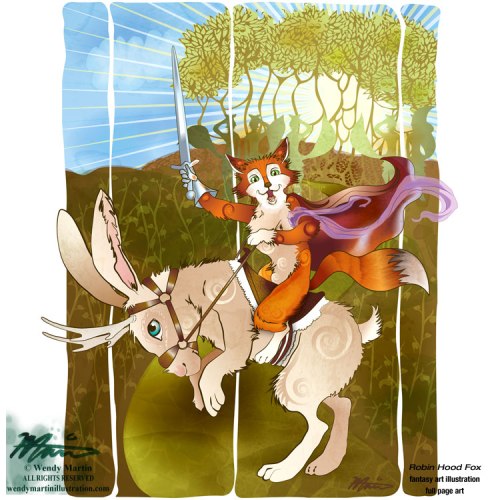
Did you have a hard time regaining your rights, so you could get it published with a new publisher?
I had a lawyer review the first publisher’s contract before signing it. One of the clauses was reversion of rights after a certain time period of the book being unavailable. So I waited the allotted time period, had the lawyer draft me a letter declaring my intentions and the clause for reversion of the rights and got them back. It pays to have a good lawyer on your side.
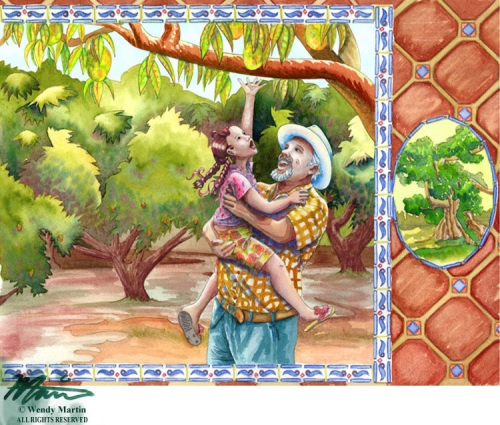
Do you consider that book to be your first big success?
Ordinary Girl went on to get an award sticker and was reprinted 3 times. It’s had a good run and still outsells all my other books.

How many picture books have you published?
Five
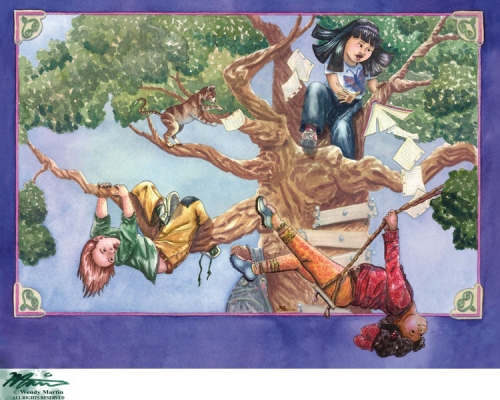
Were they with the same publisher?
Yes.
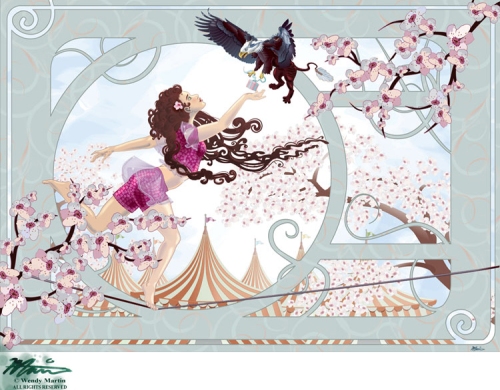
Do you plan to write and illustrate more books?
I’m working on several dummies at the moment.
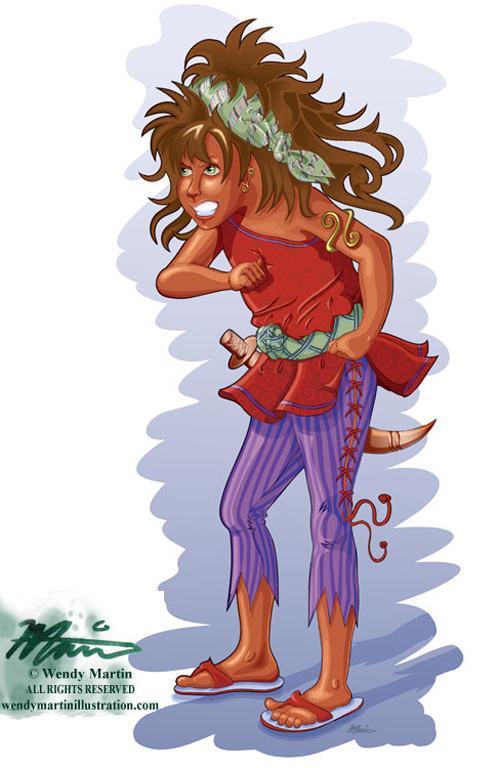
Are you open to working with self-published authors?
I am, under certain conditions.
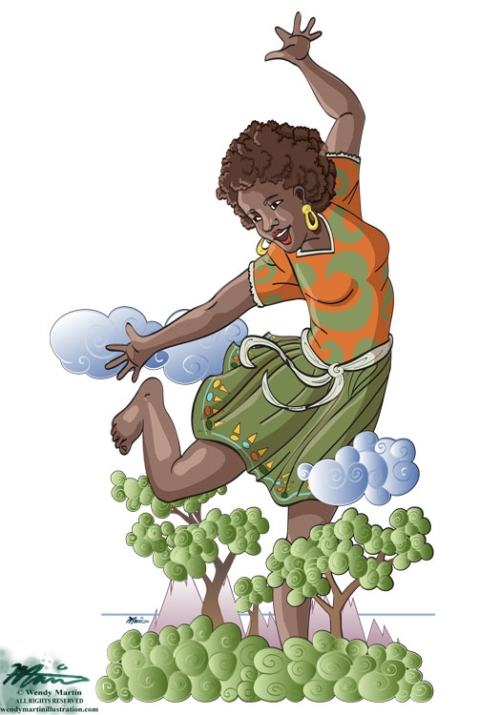
What materials do you use to paint your color illustrations?
I use digital and traditional medias.
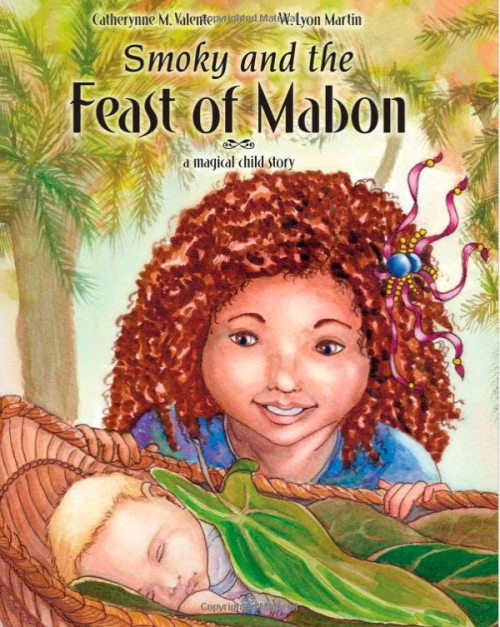
What do you use with your black and white?
Mostly digital. I always start with a pencil sketch.
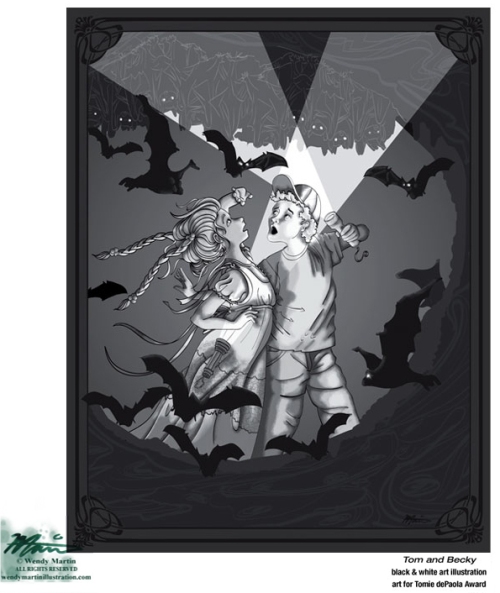
Do you feel there is more work out there for black and white illustrations?
I think it depends on the market and the artist’s style. My dream job would be doing color covers with interior line art for chapter or middle grade books.
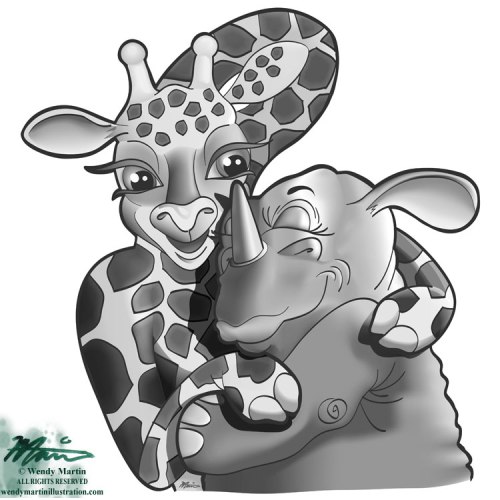
Have you done illustrations for any children’s magazines?
Yes.
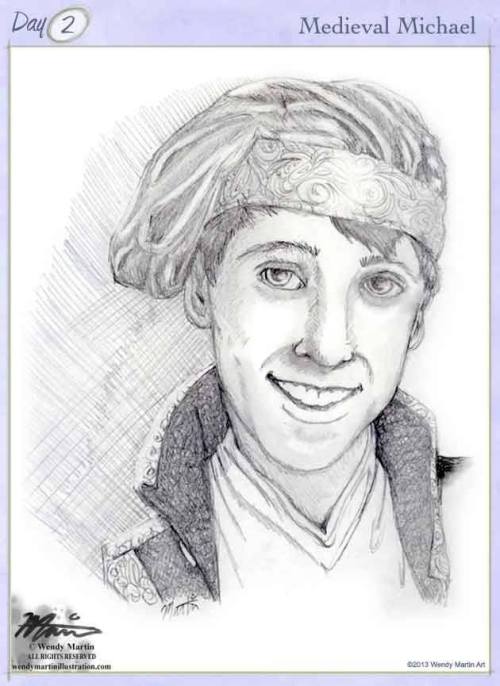
What types of things do you do to find illustration work?
I used to advertise in print annuals and on group portfolio sites, but most of my paying work came from postcards and direct email marketing so that’s where I focus my efforts now.
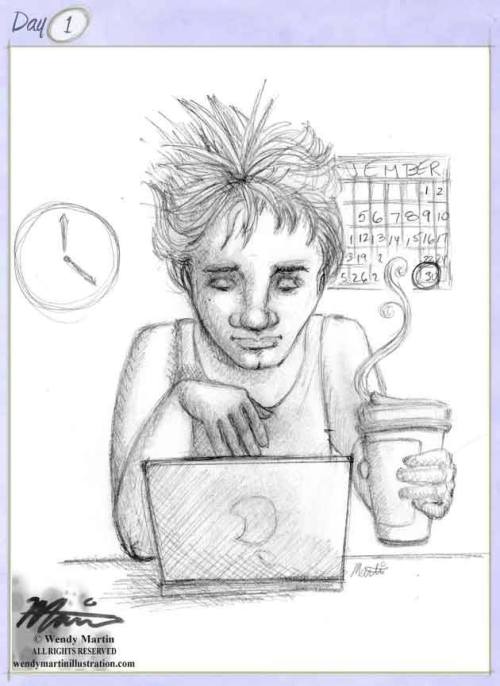
What is the one thing in your studio that you could not live without?
A padded seat cushion. After spending hours in a chair, it really makes a huge difference in being able to keep working in comfort.
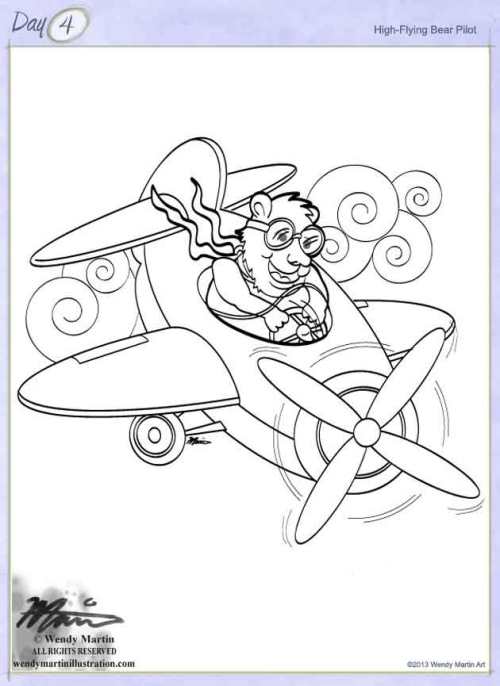
Do you try to spend a specific amount of time working on your craft?
I consider illustration my full-time job. I am in the studio every weekday morning at 7. I usually work until 3 or 4. If I have a pressing deadline, I will go back to work in the evenings and on weekends. I’d say I spend about 40-50 hours a week in the studio, either working on a piece or on marketing or updating my blog and web site.
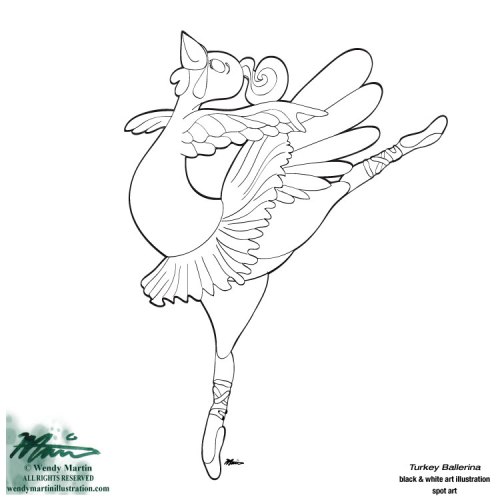
Do you actively look for school visits? Or do they find you through word of mouth?
At the moment I’m not actively seeking school visits. I will probably go back to it when I have a new book to promote.
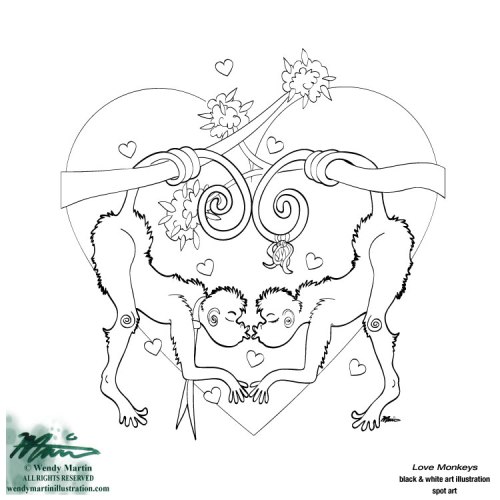
Do you have an artist rep.? If yes, who? If not, would you like to have one?
I’m between agents right now. My last rep decided she no longer wanted to be in the publishing business and quit. The book she was marketing is hidden in a drawer somewhere since I don’t know where it was shown. I have several picture books out on submission with carefully selected agents.
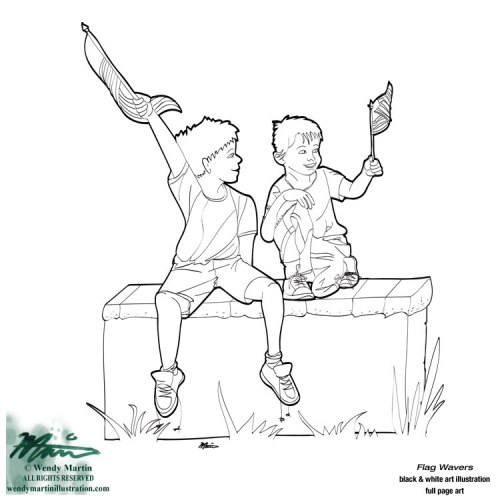
Do you take pictures or do any types of research before you start a project?
I spend a good portion of time on research and reference collection before and during any project. I used to berate myself that I was wasting time, but I now know it’s an essential part of my process.
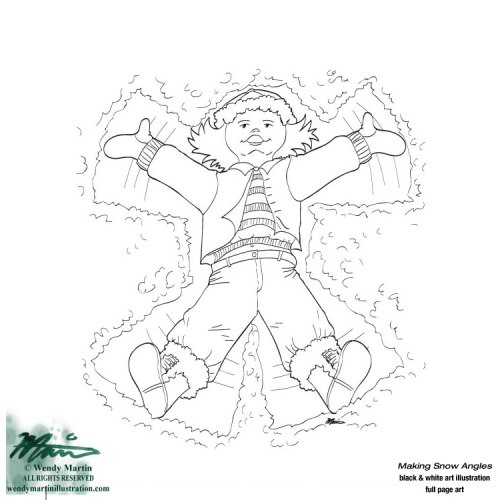
Do you think the Internet has opened doors for you?
Most definitely.

Do you use Photoshop or Corel Painter with your illustrations?
I use Photoshop only after an illustration is 90% done. Mostly for minor editing or color correction.
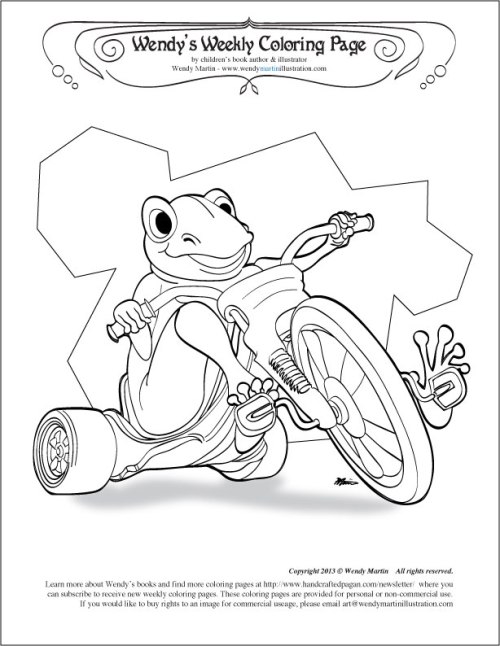
Do you own or have you used a Graphic Drawing Tablet in your illustrating?
I have a 12-year-old 4X5 Wacom tablet. I use it nearly every day.
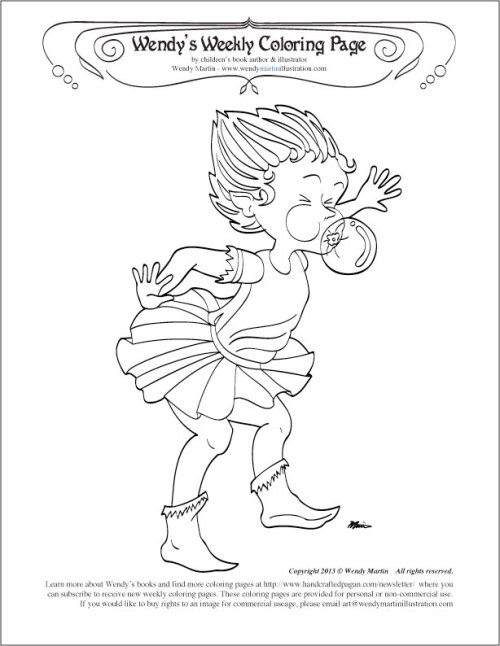
Do you have any career dreams that you want to fulfill?
I’d like to illustrate books for the major publishers. I’d also like to have steady educational publishing clients.

What are you working on now?
I create new pieces all the time. I also have several picture book dummies in the works. Plus, I’ve branched out into fantastic art in the past few years. Last May, my husband and I took a mini vacation to Kansas City and attended Spectrum Fantastic Art Live. I went as a spectator, but took some postcards with me. Charles Vess chastised me for not having a booth and displaying my art there. So this year I bit the bullet and applied for a booth and was accepted. May is only a few short months away, so I’m focusing on creating enough fantasy art to fill my booth. I hope Mr. Vess likes what he sees.

Do you have any material type tips you can share with us? Example: Paint or paper that you love – the best place to buy – a new product that you’ve tried – A how to tip, etc.
One thing I tell my traditional media students is to buy the best quality art supplies they can afford. For years I used the cheapest paper, paints and brushes to save money. When I finally splurged on quality supplies the difference in my paintings was huge. I had a lot more successful end results.
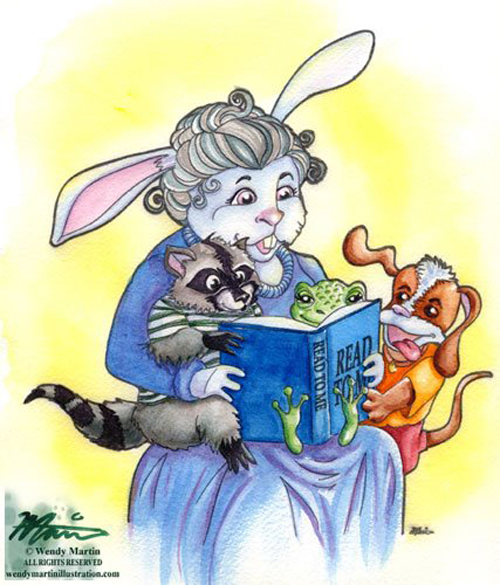
Any words of wisdom on how to become a successful writer or illustrator?
Draw or write every day. Creative endeavors require constant practice. Illustrating is a marathon event. You have to train constantly to compete.
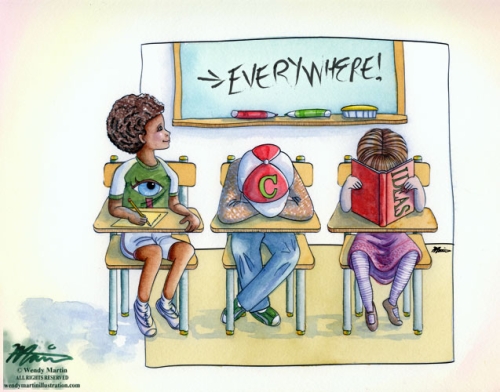
Thank you Wendy for sharing your journey, talent, and process with us. Please remember to keep us up-to-date with all your future successes. You can find Wendy at: www.wendymartinillustration.com
Please take a minute to leave Wendy a comment. I am sure she would like that and so would I. Thanks.
Talk tomorrow,
Kathy
Filed under:
Advice,
authors and illustrators,
demystify,
Illustrator's Saturday,
inspiration,
Interview,
Process,
Tips Tagged:
An Ordinary Girl,
School of Visual Arts,
Wendy Martin 


By: Kathy Temean,
on 2/27/2014
Blog:
Writing and Illustrating
(
Login to Add to MyJacketFlap)
JacketFlap tags:
Contest,
writing,
Editors,
revisions,
authors and illustrators,
Little Brown & Co,
First Page Critiques,
Allison Moore,
Free Fall Friday - Results,
Katia Bulbenko,
Add a tag
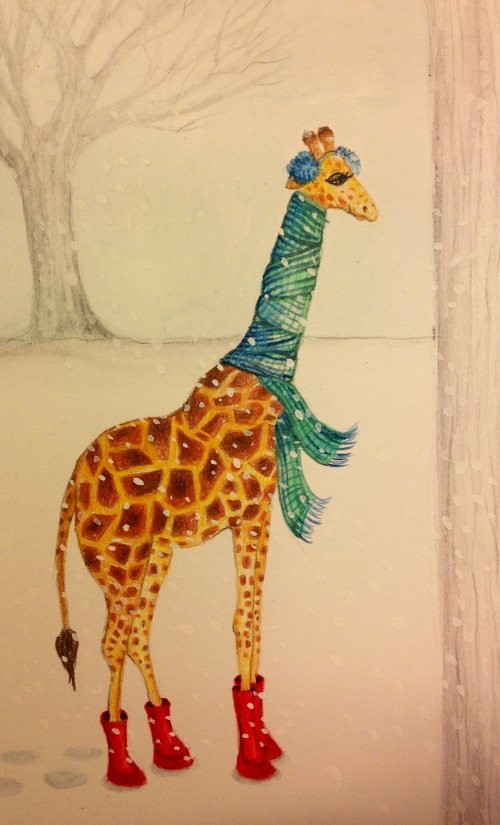
This giraffe fashionista was sent in by Katia Bulbenko. Katia is an artist, illustrator and art teacher living and working near New York City, on the Jersey side of the Hudson. A member of the SCBWI, her work was recently selected for the New Jersey Library Association’s Books for Kids poster. Congratulations! Katia!
Big Red and Wolfie (PB) by Bev Baird Langill
“Look at those nice juicy pigs. Won’t granny be happy.”
Turning around, Red screeched when she saw Wolfie glaring at her.
“Why are you spying on me?”
“I’m not! I caught you spying on our new neighbours.”
“Just checking them out.”
“Not for a meal, I hope?”
“Of course not!”
Red left quickly and ran home, arriving there, huffing and puffing.
“Granny, we’ve got new neighbours – three plump, juicy pigs.”
“Wonderful. What I wouldn’t give for a nice roast of pork.”
“Yum!”
“We need to meet them. I want you to take over some nice treats. That will fatten them up even
more.”
“What a great idea Granny. I’ll go over now.”
Granny packed a basket with cakes and cookies, while Red put on her cloak. She had a bit of
trouble doing it up around her neck.
Here is what Allison had to say:
BIG RED AND WOLFIE by Bev Baird Langill
The idea of combining the “Little Red Riding Hood” and “Three Little Pigs tales here was interesting. That said, given the storyline wasn’t straightforward, I thought it could use a few more lines to set the scene, before jumping into the dialogue. At times it wasn’t immediately clear who was talking, so I might also suggest using attribution, if even just selectively. Or, if the story is meant to communicate some of its humor visually, I would suggest including art notes. In some ways, this felt like the middle of a story. I could make assumptions about Granny, Wolfie, and Red based on what they said, but I wasn’t feeling as invested as I could be.
There are a number of fairy tale-inspired picture books out in the market, so for us to consider one, it needs to be spot-on – and stand out from the crowd in a really dynamic, specific way. In this case, unfortunately, I would probably choose not to move forward.
___________________________________________________________________
Rule Breaker – a Middle Grade Novella By Angela Larson and Zander Mowat
The book made this sound a lot easier. I’m in the hall that leads to the cafeteria, leaning on a bent knee and peering around the corner with a mirror in my hand. This is surveillance, Chapter One of Detective Derk’s Spy Manual for the Disgruntled. I’ve been on surveillance all week. It’s Friday. My hand is going numb while I wait. I’m debating if it’s worth skipping lunch again, when my target, my jerk brother Roger Adams, turns the corner.
He strolls down the hall in his ‘too important to walk any faster’ mode and pulls a coin from his pocket. By the time he gets to the vending machine my arm starts to shake. I’m concentrating hard to keep the mirror focused on him.
He puts a quarter in the machine, presses a button and I hear the candy fall to the door. This is crazy – I know he doesn’t have any money. Then I see the trick. I blink. Is this for real?
He pulls a string – its tied to the quarter!
A second later, he’s pulled the quarter up and out, has the stolen snack in his hand, and he is about to walk away.
My body jolts to fast-forward as I turn the corner and launch at him. “That’s not very cool – Stealing from the school!” Not waiting for an answer, I snatch the coin on the string out of his hand.
“Dude, take a chill pill, before your head explodes,” says Roger as he rolls his eyes. This is part of Roger’s classic cosmic-cool act. He goes around saying all these…
Here is what Allison had to say:
RULE BREAKER by Angela Larson and Zander Mowat
I thought this was a great first line. It grabbed me immediately, and told me a lot about the situation and character in just a few words. I didn’t mind jumping into the middle of a scene because each line told me something interesting and important – how the character looks, how he fits into his environment, and what his goal is. I wanted to know why he was following “the target,” and what made him look to a book for advice. I might even suggest extending his watch, and not revealing who the target is just yet, to maintain suspense for a few more paragraphs. In any case, I would definitely keep reading.
That said, a few things in the following paragraphs struck me as outdated, in a way, and I found that a little distracting. Are any vending machines still only a quarter? Do kids still say “take a chill pill”? These wouldn’t have stopped me from reading, because I was taken by the plot, but they took me out of the story momentarily, so I might suggest rethinking them. On a similar note, the specific phrasing coming from the main character – especially his exclamation about stealing from the school (and the fact that that line rhymes, almost like a slogan), made him seem less like a cool spy and more like an annoying little brother. And if he is, so be it! But if that’s not one of his main traits as a character, I might similarly rework that line.
Overall, minor quibbles aside, I would be interested in seeing where this story was going.
(Side note – I wasn’t familiar with the category of “middle grade novella.” There is certainly a range, from chapter books up to more complex MG, but I haven’t heard of something in MG being described as a novella, so I wasn’t quite sure what to expect.)
___________________________________________________________________
Sarah Phillips Pellet – THE KITCHEN TROLL – Middle Grade
Stephen didn’t brush his teeth in the morning. It was about all he could do to get out of bed, pull on his jeans and sweatshirt, eat breakfast, grab his backpack, and walk to school. Who had time to brush their teeth?
The problem was though, Stephen didn’t find the time to do other little things he should’ve been doing, too. Things like weeding the garden, taking out the trash, and sorting the recyclables, they got in the way of the time he liked to spend playing basketball with his friends or drawing in the garden shed where nobody would disturb him. Or find out that he liked to draw.
Stephen didn’t give these things too much thought in the morning. He didn’t think much of anything apart from moving his spoon to his mouth to take a bite of cereal. Th-wap! His father slammed his sketch pad onto the kitchen table. Little bits of dirt scuttled out from its pages and flew across the table as if they knew was what coming next and wanted to get out of the way. The pencil slid out of its spiral cage and rolled onto the floor. Two giant hands came crashing down onto the table with such force that Stephen’s spoon jumped out of his cereal bowl and catapulted soggy Cheerios onto his lap.
“What is this?” his father demanded, his lip curled in a snarl.
Stephen blinked several times. “I dunno,” he lied.
“Oh really?” said his father, flipping the sketch pad over to reveal a sign Stephen had penned which read, “NO TRESPASSING! Property of Stephen Dennison!!!” with each exclamation point drawn in 3-D: one with diagonal stripes, another with polka dots, and the last one with lightning bolts.
Here is what Allison had to say:
THE KITCHEN TROLL
I liked this opening – it tells you what kind of kid Stephen is, and that this isn’t a one-off situation. That said, my first question was, why does Stephen eat cereal, instead of an even quicker breakfast? Sitting at the table and pouring cereal and milk sounds like it takes more effort than, say, eating a granola bar on the way out the door. Just something to consider.
I enjoyed the imagery of the third paragraph, especially the line “Little bits of dirt scuttled out from its pages and flew across the table as if they knew was what coming next and wanted to get out of the way.” Since this is a clever line, I might suggest simplifying the other sentences in that paragraph – otherwise, it’s easy to get a bit caught on up things like “spiral cage” and “catapulted soggy Cheerios,” and lose track of the story.
The “No Trespassing” sign seemed to make the sketchpad more noticeable than if Stephen had written something misleading like “Biology Homework” on it, so I wondered what his thought process was there. I also found that his father’s anger about the artwork felt familiar – it’s a storyline I’ve read before. I wanted to know more about why, in Stephen’s particular situation, it would be bad if people knew he liked to draw – and how deep his passion for drawing is. I might suggest having his dad discover a very particular piece of artwork that conveys more of the story (is this where the kitchen troll from the title comes in?). There also seems to be a disconnect between this scene and the opening describing Stephen, so I would want to know how he caused this situation to happen (did he accidentally leave the sketchbook out?).
Overall, I would probably read a few more pages to find out if the questions above were answered, but would need another hook to keep me interested past that.
____________________________________________________________________
OUT ON A LIMB Susan Detwiler, picture book
James Johnson Junior was out on a limb
It seems that his father was looking for him.
Rotten luck followed James right out of bed
First he stubbed his big toe, and then bumped his head
James spilled juice on the rug, stepped on the cat
When practicing swings, broke a plant with his bat.
The dog chewed his shoe, ran off with his sock
Their chase through the kitchen made furniture rock –
Knocked over sugar and spilled all the tea!
James escaped from the house to hide in a tree…
He scrambled up fast which made his foot slip
He looked down and saw that his pants had a rip.
What would he do? Dad must surely be mad!
The messes and mayhem made James seem so bad.
Would Dad be angry and make a loud roar?
Banish James to his room and then lock the door?
Here is what Allison had to say:
OUT ON A LIMB
Rhyming text in picture books is interesting – in the best cases, it can enhance the lyrical quality of the book, making it an incredibly fun read-aloud. But in other cases, it can feel a little forced. Unfortunately, the second one happens much more often when I’m reading submissions, so I always approach rhyming stories with a bit of apprehension. Add to that the difficulty of translating text that rhymes, and you can see how we might have especially high standards when we consider acquiring this type of book!
In this case, I thought the rhyme was fun, but a few of the lines felt like a bit of a stretch – like they were rearranged to support the end rhyme, rather than the plot. I also wondered in the emphasis was on the right words – in following the story (and picturing it illustrated), I wanted to highlight certain words or beats that were the most visual or meaningful – and those didn’t always match with the natural beat of the end rhyme.
I also found the plot to be a little bit quiet. The story of a klutzy child – or one who can’t please his dad – isn’t new, so I was looking for other ways this story would stand out. I found that I was remembering the sing-song quality more than certain aspects of the story, so wondered if this would be better served written without the rhyme. I would need to read the rest to see if this could turn into a stand-out story, but I predict it might be a pass.
Thank you Allison for taking the time out of your busy schedule to share your expertise with us. If you sign up for the NJSCBWI Conference at the end of June you will get to meet Allison in person. Please leave a little note for Allison if you enjoyed the post and her comments. Thanks!
Talk tomorrow,
Kathy
Filed under:
authors and illustrators,
Contest,
Editors,
revisions,
writing Tagged:
Allison Moore,
First Page Critiques,
Free Fall Friday - Results,
Katia Bulbenko,
Little Brown & Co 

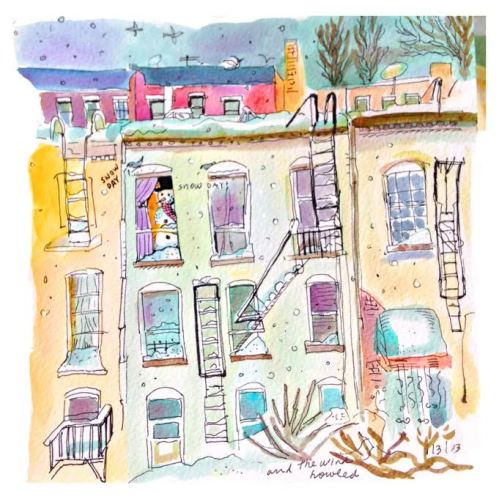
This fun winter illustration was sent in by Illustrator Tracey Berglund. Don’t miss the snowman in the window. It makes me think of the photo Leeza Hernandez sent me a few weeks ago. Her daughter and her built the smallest snowman I ever saw. They made it small, so they could save it in the freezer. Now that is thinking out-of-box. Tracey was my first featured illustrator on Illustrator Saturday back in June 2010. Here is the link: http://kathytemean.wordpress.com/2010/06/05/tracey-berglund-illustrator-saturday/ I think you can see how much Illustrator Saturday has grown since then.
February was a record month for first page submissions. I did not look at all the submissions to see the percentage of people who did not submit properly. We are close to getting the First Pages correct for the monthly critique, but there are still problems which caused a number of people to be pulled out for critique and then skipped, when I opened their Word document and it was not correct.
I think everyone now understands how to format their manuscript when submitting to an agent or editor, so lets just zero in on how to submit for the monthly critique for this blog. You would only format your page this way when you submit a first page to me. If you are doing a first page for an SCBWI event, then they would probably would want a similar forma, but make sure you check. Why the difference? Because if you use the standard format for a first page, you can not show enough for a good critique.
I know I asked you to cut and paste your text into the email, but I sent the word doc to the editor or agent, so if the Word doc isn’t formatted correctly, I can’t send it. I state a first page can have 23 lines, but that doesn’t mean that every manuscript’s text will work out to 23 lines. Some may only be able to fit 21 lines. The first page, just can not be more than 23 lines. Please do not send more than one page.
You don’t have room to put all your contact information on the page. Just your name, title, and genre at the very top. Then start your text on the next line. The example below from Carol Foote drops one line for her title. This is acceptable, but she could have gotten in the 23rd line if she had put everything across the top. The reason her page was not included in the drawing was due to her submitting it after the deadline.
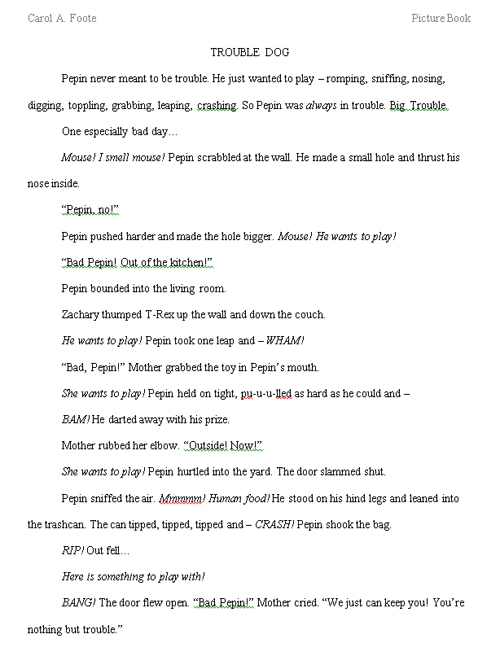
So as long as you follow the guidelines and the example above, send it in before the deadline, cut and paste the text into the email and attach a Word document of the text, put the required title in the Subject area (I search for the submissions using that title), send it to the email listed, and do not include more than one page, you will be good to go.
Hope this helps. If you submitted a first page and did not have it critiqued, please send it in for review in March. Check back tomorrow to read the four that were critiqued. Next week I will announce our Guest Critiquer for March. Deadline for March is March 21st. Title in the subject area March First Page Critique. Email to: Kathy(dot)temean(at)gmail(dot)com
Links for more formatting posts:
Novel: http://kathytemean.wordpress.com/2014/02/13/formatting-novel-manuscript-example/
Picture book: http://kathytemean.wordpress.com/2014/02/02/first-page-critiquer-for-february-formatting-mistakes-call-for-illustrations/
Standards: http://kathytemean.wordpress.com/2009/03/16/formatting-your-manuscript/
Talk tomorrow,
Kathy
Filed under:
authors and illustrators,
Contest,
demystify,
How to,
need to know Tagged:
First Page Critique,
Formatting problems,
Tracey Berglund 

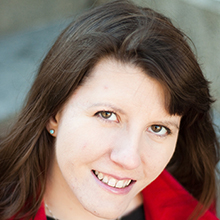 Foreword Literary is a full-service, hybrid literary agency based in the Silicon Valley with offices throughout the country. They manage a wide variety of clients, from bestsellers to debut authors, working with fiction and non-fiction for children and adults worldwide. Emily S. Keyes is one of those agents located in NYC. Since she is relatively new to Foreword Literary, she would be good to consider. But remember do your homework and make sure you think you are a good fit.
Foreword Literary is a full-service, hybrid literary agency based in the Silicon Valley with offices throughout the country. They manage a wide variety of clients, from bestsellers to debut authors, working with fiction and non-fiction for children and adults worldwide. Emily S. Keyes is one of those agents located in NYC. Since she is relatively new to Foreword Literary, she would be good to consider. But remember do your homework and make sure you think you are a good fit.
About Emily: Emily joined Foreword Literary in 2013 after working as an agent at the L. Perkins Agency for 2 years. Before entering the world of agenting, she worked in the contracts department of Simon & Schuster, Inc and graduated from New York University’s Center for Publishing. She uses her knowledge of contracts, copyright and the publishing business to benefit her clients and the Foreword team.
You can find her on Twitter: @esc_key.
Tumblr: esckeyes
Or on her blog: http://esckeyes.blogspot.com/
She is seeking: Emily is a particular lover of all types of young adult and middle grade books. She wants to represent the kind of stories that will resonate with kids for the rest of their lives. She loves strong voices and unique characters, not knock-offs or trend chasers. Some of her favorite authors include Deb Caletti, Laurie Halse Anderson, Gary D. Schmidt, and Megan Whalen Turner. She thinks books are best when they make you laugh and cry.
Emily is also looking for a select list of commercial fiction which includes fantasy & science fiction, women’s fiction, new adult fiction, along with pop culture and humor titles. She is not looking for poetry, short stories, picture books or anything that is “publishable” and not amazing.
How to submit: If your manuscript is amazing, you can send it to [email protected] with the query and the first ten pages pasted into the body of the email. No attachments.
Amy M. Newman has a nice interview with Emily on her blog. Click here to read.
Hope this helps.
Talk tomorrow,
Kathy
Filed under:
Agent,
authors and illustrators,
bio,
Editor & Agent Info,
opportunity,
Publishers and Agencies Tagged:
Agent Building List,
Amy M. Newman,
Emily S. Keyes,
Foreword Literary 

 Julie Rowan-Zoch visits this blog a lot, so I had a minute the other day and I checked out her blog and found the post below about her beta-testing a course on punching up your prose using lyrical language. I thought you might like to know about it, since we are all looking for language that makes our stories sing. But first, here is a little bit about Julie:
Julie Rowan-Zoch visits this blog a lot, so I had a minute the other day and I checked out her blog and found the post below about her beta-testing a course on punching up your prose using lyrical language. I thought you might like to know about it, since we are all looking for language that makes our stories sing. But first, here is a little bit about Julie:
Julie Rowan-Zoch is an author/illustrator who studied Graphic Design, at FIT in NYC and the Hochschule für Bildende Künste in Braunschweig, Germany. She has recently completed the artwork for three board books for Bailiwick Press, due out in October ’14. Julie Rowan-Zoch now lives and works in Colorado.
Renee LaTulippe’s new course - THE LYRICAL LANGUAGE LAB
The course is designed for –Rhyming PB writers who would like a stronger foundation in the mechanics of poetry –Prose PB writers who would like to punch up the lyricism of their writing through poetic techniques –Writers who would like to learn more about writing poetry for children.
I happen to be one of the very lucky beta testers of the first five lessons of her course. Renee wanted at least one total newbie to give it a trial run. Someone who may have dabbled but really had no clue what they’re doing. ME! No joke, I GET it now, even what is meant by ‘don’t mess with the stress!’ Teresa Robeson wrote a much more descriptive post about her beta experience – HERE

I know, practice makes perfect. I’m an amateur not a fool, but look at some of my homework: first, an iambic quatrain —
I’d like to drink a cup of tea
in your adoring company
But if you don’t enjoy the tea
Ingest! Delight! Just bask in me!
Maybe not gonna bring the house down, but I got the beat (everybody get on your feet… No? Too 80′s for ya?)

Just one more – not quite there yet, but here is my first try at the anapest (and Wantagh is where I grew up)
— In the middle of winter in Wantagh
I caught cold from the breezy night air
Though my mother had taught me much better
I camped on a patio chair
She said, Child what on earth were you thinking
your whim could have caught you your death
for in Wantagh the devil is lurking
on the moisture that carries your breath
I did rock out an AWESOME double dachtyl, but I can’t share it yet because I’m being brave – going to enter it in my library’s contest this month - Battle of the Bards!
Click her to read the full post. I guess you will have to keep checking her blog to see when she posts her double dachtyl.
Talk tomorrow,
Kathy
Filed under:
authors and illustrators,
Courses,
How to,
poetry Tagged:
Anapest,
double dachtyl,
iambic quatrain,
Julie Rowan Zoch,
Renee LaTulippe,
The Lyrical Language Lab 


Booksellers bare all to protest censorship attempt of ‘Everybody Gets Naked’ children’s book: A prominent conservative French politician wants to censor the nude picture book, but publishers and booksellers have defended the book by authors Claire Frank and Marc Daniau. Read more: http://www.nydailynews.com/news/world/booksellers-bare-naked-book-article-1.1621785#ixzz2uAz8lWn0
____________________________________________________________________
The Huffington Post had an good article last week titled, These Famous Authors Made It Okay To Commit Grammar No-No’s. (Get Link at bottom)
Here are 7 authors who beautifully broke the language and grammar rules your high school English teachers taught you:
Double negatives

Frequent user: Jane Austen Example: “She owned that, considering every thing, she was not absolutely without inclination for the party.” from Emma Why it’s okay: Jane Austen did not neglect to use double negatives in her writing. Often, as in the example above, she used redundancy to denote a character’s snootiness. To show that the grand dame of Highbury was hesitant to act excited about a dinner party, Austen chooses to express her support convolutedly. The effect, more often than not, was to note the humor in the pretentiousness of high society.
Run-on sentences

Frequent user: Charles Dickens Example: “It was the best of times, it was the worst of times, it was the age of wisdom, it was the age of foolishness, it was the epoch of belief, it was the epoch of incredulity, it was the season of Light, it was the season of Darkness, it was the spring of hope, it was the winter of despair…” from A Tale of Two Cities Why it’s okay: Dickens’s long sentences are not the result of being paid by the word, contrary to popular belief (in fact, his contracts for books such as Bleak House were based on sales, not word count). His long-windedness served a purpose: It was often meant to satirize the rambling speech of those affiliated with the institutions that he often criticized.
Capitalization
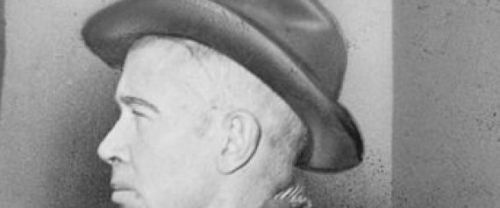
Frequent user: E.E. Cummings Example: “i sing of Olaf glad and big/whose warmest heart recoiled at war” from “i sing of Olaf glad and big” Why it’s okay: In general poets take more liberties with grammatical rules than novelists, who are expected to communicate using paragraphs and sentences rather than more contracted observations. Cummings was especially experimental, and often used a lowercase “i” (also seen in the first line of one of his well-known love poems: “somewhere i have never travelled, gladly beyond”). In “i sing of Olaf glad and big,” the lowercase “i” is contrasted by the uppercase “Olaf,” denoting the unimportance of the teller of the poem relative to the poem’s subject. His name is also sometimes written with unconventional orthography (e e cummings).
Starting a sentence with a conjunction

Frequent user: William Faulkner Example: “He had never seen a home, so there was nothing for him to say about it. And he was not old enough to talk and say nothing at the same time.” from Light in August Why it’s okay: Faulker, writer of five-word long chapters, bent all sorts of grammar rules. He, like Cummings, had an orthography of his own, and took liberties with capitalization. He also began sentences with conjunctions, seeming to adhere to the rule that a sentence should simply be a complete thought. The above quote contains two sentences, each with disparate but connected thoughts, so separating it into two sentences is phonetically pleasing.
Incomplete sentences

Frequent user: H. L. Mencken Example: “Ticket-sellers in the subway, breathing sweat in its gaseous form…. Farmers plowing sterile fields behind sad meditative horses, both suffering from the bites of insects….Grocery-clerks trying to make assignations with soapy servant girls….” from “Diligence,” A Mencken Chrestomathy Why it’s okay: Shakespeare, Dickens, and just about every other classic author has used some form of an incomplete sentence, including the above-mentioned sentences beginning with a conjunction. There are plenty of reasons for doing this, such as creating a sense of alarm with onomatopoeias, or a sense of anxiety with a paragraph full of choppy fragments. Mencken’s purpose was the latter.
Ending a sentence (or independent clause) with a preposition

Frequent user: William Shakespeare Example: “We are such stuff as dreams are made on; and our little life is rounded with a sleep.” from The Tempest Why it’s okay: This “rule” is mostly considered a myth by most grammarians. Grammar Girl uses the example of, “what did you step on?” It’d sound ridiculous and too formal to say, “on what did you step?” out loud. If a sentence or independent clause is more aesthetically pleasing when it’s arranged with the preposition at the end, then so be it. This quote would sound clunky if it were restructured to read, “Dreams are made on such stuff as we are.”
The subjunctive/passive voice

Frequent user:Sir Arthur Conan Doyle Example: “‘No, your boy had been observed, and that gave me a guide where to look.” from The Hound of the Baskervilles Why it’s okay: The passive voice can make for unclear writing, but sometimes, unclear writing is useful. When the subject of a sentence should be a mystery to the reader, the passive voice is an excellent way to achieve that effect. This trick is used by politicians looking to shirk blame, and is a great tool for thriller writers. “The girl had been murdered” is more gut-wrenching than “someone murdered the girl,” because it puts “the girl” at the forefront of the sentence without revealing who the murderer is.
Click Here to read the full article.
Talk tomorrow,
Kathy
Filed under:
article,
Author,
writing Tagged:
Authors Who Broke the Grammar Rules,
charles dickensen,
E.E. Cummings,
Huffington Post,
Jane Austin,
William Faulkner 


I see a little hope of Spring in this winter illustration sent in by Dianna Patton. It is from her book picture book, The Magic Rabbit. After years of painting and teaching watercolor (with over 135 awards), Diana is now working on the craft of writing and illustrating stories. She has two self-published picture books, Charlemagne to the Rescue and Rocking out to Sea. Her websites www.dianapatton.com and www.charlemagnethefish.com
2014 WABASH PRIZE FOR FICTION
Final Judge: REBECCA MAKKAI
First Prize: $1000 and publication in Sycamore Review
GUIDELINES FOR SUBMISSIONS
Submission Deadline: March 21, 2014
1. For each submission, send one fiction piece (limit 7,500 words).
2. A $15 reading fee (submitted online) must accompany each submission. The reading fee includes a year’s subscription to Sycamore Review, which will include a copy of the prize issue and an electronic copy of the following issue.
3. Additional pieces may be included for an additional reading fee of $5 for each additional work. If submitting more than one, please submit ALL work in a single Word document.
4. Manuscript pages should be numbered and should include the title of the piece.
5. All entries will be read blind. Information that identifies the author should NOT appear on the manuscript itself.
6. All work must be previously unpublished.
7. Simultaneous submissions are acceptable only if Sycamore Review is notified immediately upon acceptance elsewhere.
8. Each piece will be read by at least two Sycamore staffers, with the winner selected by judge Rebecca Makkai.
9. All contest submissions will be considered for regular inclusion in Sycamore Review.
10. When submitting, be sure to select the Wabash Prize for Fiction option in our Submissions Manager.
Once your work has been submitted, you will be redirected to our secure payment website. Submissions will not be considered without an accompanying payment.
If you are not redirected for payment, chances are you accidentally submitted through the regular submission channel. If this is the case, withdraw your work and resubmit, being careful to select the Wabash Prize option.
Questions may be directed to [email protected] .
Submit your work by visiting our online submission manager. http://www.sycamorereview.com/submgr/
Filed under:
Uncategorized Tagged:
Dianna Patton,
Prize and publication,
Sycamore Review,
Wabash Prize for Fiction 


Michael is always putting on a costume and posing for a character in a book. One day, he is posing in costume as an O. Henry character and the next he is pretending to be a fossil hunter. Michael has modeled as a pirate, pilgrim, patriot, inventor, explorer, and sometimes, even a bit of a rogue. Each book is a new adventure.
His family and friends also pose in costume for his paintings. The covers and pages of his books are adorned with illustrations of his daughters Rachel and Lisa, and the neighborhood children. He and his wife Jane have acquired a collection of vintage clothes and costumes, which they may cut, shape, or sew into something suitable for a seventeenth, eighteenth, or nineteenth century character.

Born in 1958, Michael grew up in the small town of Marlton, New Jersey surrounded by peach and apple orchards. He played baseball, built tree houses, and had snowball fights. He also loved to read and draw-a combination that eventually led to illustrating children’s books. His mother Patricia always encouraged him to draw and he could always be found “doodling” away. He even had a dog named, Doodles.

Today, Michael can still be found “doodling” away. He is the illustrator of over sixty books-many on historic subjects. He has illustrated picture books, chapter books and many Middle Grade Novels. His clients over the past twenty years include Reader’s Digest, The United States Post Office, Scholastic, Farrar, Straus & Giroux, HarperCollins, Philomel, Puffin Books, McElderry Books, Henry Holt, Holiday House, Beechtree, Atheneum, Disney and many others. Michael graduated in 1988 with a Master’s Degree in Illustration from Syracuse University and is a member of the Society of Illustrators in New York.
Here is Michael discussing the process of researching, and painting his new book coming out this fall:
Painting the cover of Fossil Hunter

A great deal of research goes into creating a painting. For six months, I search for primary sources, props, costumes, and background images. I started my research (for Fossil Hunter) at the Academy of Natural Sciences in Philadelphia where I met with paleontologist Ted Daeschler. Ted took me in the back room and let me touch the 80 million year old fossils from the Hadrosaurus found in Haddonfield, NJ in 1858. Ted let me photograph the bones that I would later use as reference (something to refer to as I painted).

I soon learned that Haddonfield (the site of William Foulk’es find) sat under a hundred feet of seawater when the dinosaur died (80 million years ago). Hence, the soil is rich with sea sediment and is called marl. Marl is different than most soil. It is dark and clumpy. So, I went to the dig site (now called Hadrosaurus Park) with shovel in hand and dug up clumps of the marl that I photographed for reference.

But how do you find a solid wall of marl to make it look like Foulke is ten feet down in a pit? I wasn’t about to dig a ten feet deep pit. Luckily, I found a construction site where the foundation was being dug out. It wasn’t marl but I could use the shapes and change the color to look like marl.
Lastly, I posed in costume for William Foulke. I had researched what he looked like and the types of clothes he may have worn. My wife Jane photographed me in my back yard (photo right). I made sure that all the reference I photographed was the same perspective (angle) and had the light coming from the same direction) so that all the images would look seem-less in the final painting.

Set with four photographic references in-hand, I made a pencil sketch leaving room for type and making sure nothing important was in the gutter. The most important thing at this stage is the drawing. My old illustrator friend Lou Glanzman was truly a great artist and always emphasized the importance of draughtsmanship. After the sketch is completed, I transferred my pencil sketch on to a stretched canvas using tracing paper and transfer paper. I use a rather smooth linen canvas (Fredrix’s Portrait Linen Canvas 589) that I stretch myself. The painting measures 17” by 25” proportion to the final trim size 8 ½” x 11”.
The first step in the painting process is to block in all the shadow, halftone, and light shapes in one color (usually raw umber and French Ultramarine Blue mixed together). This mixture makes a brownish green that is very appealing to me and (most importantly) will dry overnight (raw umber dries fast). At the end of the first day of painting, I have what appears to be a completed painting in monochrome.

The second day of painting I block in all the color. The trick is to make four pieces of photo reference look like they are in the same light (same color family). This is the most important step where the painting comes alive. It may take two days for this process depending on the complexity of the subject.
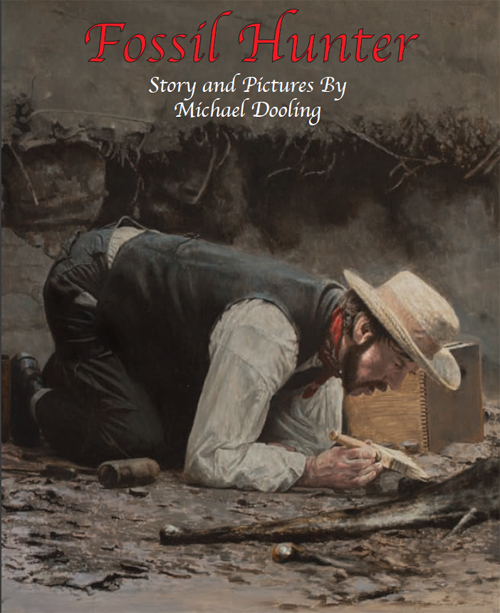
The final step of painting is completing the details. Going over everything one more time, if needed. Now, the painting has three coats of paint creating a patina that you cannot achieve any other way. Notice a copper pan was added to the left of painting. This image was ‘swiped’ from my files. A swipe is a photo image from a magazine, old photo, or book that you have saved.
All in all, it is about a five-day painting process if everything goes according to plan, Sometimes, (as I emphasize in my school visits), I may get a day or two into a painting and start over. A painting is the process of correcting your mistakes as you go along.

I paint in oil on canvas in basically the same method as the illustrators did a hundred years ago like Norman Rockwell and NC Wyeth. I harmonize (color scheme) my paintings by making three quarters of a painting in one basic color family (shadows are either bluish, purplish, or greenish.). This ties everything together like a musician harmonizes his/her notes. I dull my colors with its’ complement. For example, a blue object would be brought down in value with orange. Grays are mixed with complements (blue and orange and white makes gray).

Take note of how Michael left space for the text in his sketch.
Could you tell us a little about your color palette?
My palette (Winsor Newton Professional Artists oil paint) consists of :
Raw umber
Burnt Sienna
Yellow Ochre
Cadmium Yellow
Cadmium Orange
Cadmium Red light
Alizarin Crimson
Viridian
Cerulean Blue
French Ultramarine Blue
White

Anyone who has written a book like this knows how much fun the research can be. Did you find anything fun that you can share with us?
I do. During my research I found at the Academy’s library a quote in William Foulke’s writing (primary source). I actually discovered a letter he wrote ( )to his paleontologist friend Dr Joseph Leidy at the Academy of Natural Sciences in Philadelphia (in 1858). He said, ”I have taken some splendid bones from the marl,” wrote William. “The fruits are abundant and I wish them to be preserved for science.”
I had to paint a picture of him doing just that. (Above)

How long have you been illustrating?
25 years

What college did you attend and did you study art there?
Syracuse University (Masters Degree in Fine Art)

What were you favorite classes?
Illustration/ painting with Joe Bowler

What type of work did you do right after you graduated?
Illustrating for Readers Digest and Disney Adventure Magazine

Do you think getting your MFA has helped your career?
I learned more my first day at Syracuse University with artist Joe Bowler than I had in my previous four years at other colleges/art schools.

Do you feel the illustration classes you took influenced you style?
I believe your style is something you are born with and comes naturally to you.

What was the title of your first book and who published it?
My first book was Mary Mclean and the St Patrick’s Day Parade written by Steven Kroll (1992).
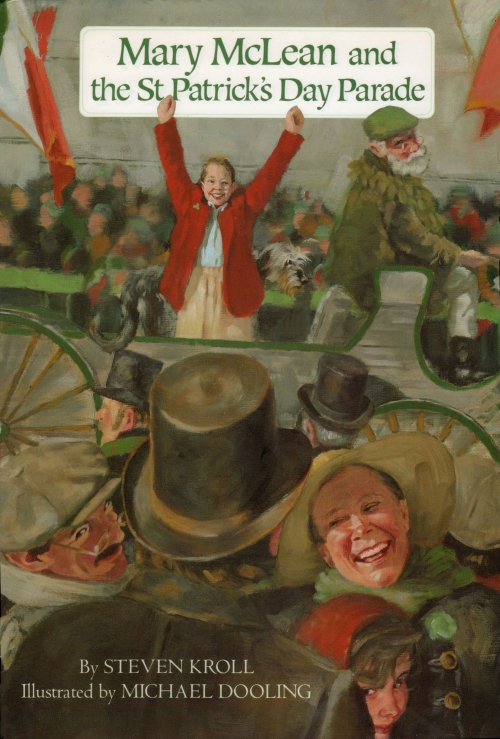
How many picture books have you illustrated?
To date, I have illustrated 64 books including about 20 picture books.

How many book have you written and illustrated?
I have written four picture books including The Great Horseless Carriage Race (2002), Young Thomas Edison (2005), George Washington’s Army and Me (2011), and Fossil Hunter (2014)

Do you plan to write and illustrate more books?
I am always writing and always searching for new stories that interest me. Eventually, each one is sent to an editor in hopes of selling it.

It seems like most of your books deal with things in the past. Where you always interested in history?
I have always been interested in history. My wife, Jane, and I live in a house built in 1919, I watch old Sherlock Holmes movies, and read old books. I am stuck in the 60’s. The 1760’s.

How did you come up with the idea and how did you connect with the publisher?
I saw an article about an interesting character who was the first race car driver (in 1909) and went to the library to research him. In my research, I came across a story titled The Great Race of Chicago. I wrote for about 3 months (probably 30 drafts) and eventually sent it along to an editor at Holiday House. All of my stories are about People Who Have Changed the World. See World Changers at http://www.michaeldooling.com

It looks like you like doing school visits. How many do you do in a year?
I visit approximately 50 schools nationwide each year with my History through Picture Book program, inspiring children to read, write, and draw. From Rhode Island to Texas and everywhere in-between, I have visited over 900 schools in the past 15 years.

Michael is always getting family and friends to pose in costume for various characters in his books. He shares these pictures with the students during his school visits ands tell them, “Everyday at my house is like Halloween.”

Do you have any tips to share on how to do a successful school visit?
A school visit is about inspiring children to read and write. You have to know your subject and explain or teach in terms that children can relate to.

I read somewhere that you said you love to do visit schools because it gives you the opportunity to inspire children to read, write, and draw. Do you get letters?
I get many letters. A librarian recently sent me note. In it she said, “You have truly made a difference in the life of a child,” said one librarian. “He is still writing!” That is the goal of every school visit I do.

Do you still use oil paint for your illustrations?
I have always worked in oil on canvas.

Have most of your books been with educational publishers?
I have worked for just about every publisher: Scholastic, Holiday House, Penquin, MacMillan, Henry Holt, FS & G, and many others.

I noticed that the USPS commissioned you to illustrate the Ben Franklin Stamps. How did that come about?
In 2006, I illustrated a stamp of Benjamin Franklin. The director of the project noticed the cover of my book about Franklin and hired me to illustrate something similar (Ben as a printer).


What types of things do you do to find illustration work?
Finding work as an illustrator is about marketing to the right people. Art directors have to be buying what you are selling.

What do you feel was your greatest success?
I feel my most successful books creatively are George Washington’s Army and Me and my newest title, Fossil Hunter. Although Young Thomas Edison sold the most and had very nice reviews. School Library Journal said Edison, “belongs in every library.”

How did you hook up with James Cross Giblin and Henry Holt & Co. to illustrate The Boy Who Saved Cleveland?
I am hired by the publisher after they have purchased the story from the author. I only meet the authors by chance after the book is published. I don’t work with the authors.

Do you take pictures or do any types of research before you start a project?
I do a tremendous amount of research (at least six months) at museums, historic places, reenactments, libraries and take hundreds of photographs of models in costume. Every day at my house is like Halloween.

I notice that you have done a few books with Jeannine Atkins using CreateSpace. Are you friends? Is that how you connected? Or are you open to illustrating for authors who want to skip going through one of the major publishers?
The books that I have republished (with authors like Jeannine Atkins) through CreateSpace were originally published by major publishers. Jeannine and I reprinted Mary Anning and the Sea Dragon. It had a good run of almost twenty years in print with Farrar, Straus & Giroux. After it went out of print it seemed like a smart thing to do to put it back in print. It is a very popular book at my school visits.

While researching your books, I noticed that you illustrated Mary McLean and the Saint Patrick’s Day Parade by Steven Kroll. Were the two of you working on this before he passed away? Were you the one who decided to use CreateSpace to publish his book?
Mary Mclean and the St Patricks Day Parade was published in 1992 by Scholastic. After it went out of print a couple of years ago Steven’s wife and I put it back in print.

Can you share your experience with using CreateSpace?
CreateSpace is an ideal way to republish books once they have gone out of print. I don’t publish original books with CreateSpace.

Do you try to spend a specific amount of time working on your craft?
I work all the time. It is the curse of having your own business. You have to always be thinking about your next project.

Do you think the Internet has opened doors for you?
The internet is a good marketing tool. Follow me on www.pinterest.com/michaeldooling/ or see my lesson plans at www.teacherspayteachers.com/store/michael-dooling

Have you tried Photoshop or Corel Painter with your illustrations?
I don’t know what Photoshop or Corel is.
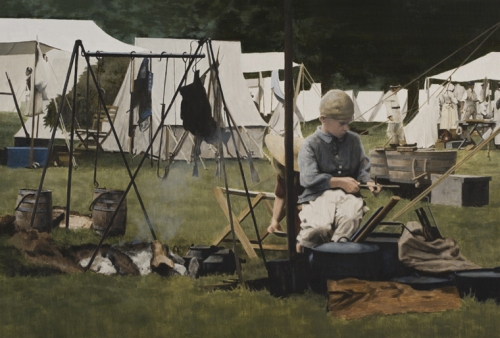
Do you own or have you used a Graphic Drawing Tablet in your illustrating?
I don’t know what a Graphic Drawing Tablet is. I work in oils on canvas in basically the same method used by many illustrators a hundred years ago.

Do you have an artist rep or an agent?
I represent myself.

Do you have any career dreams that you want to fulfill?
Two of my stories The Great Horseless Carriage Race and George Washington’s Army and Me are being considered for major Hollywood motion pictures. It would be a nice dream to see them in the theater.
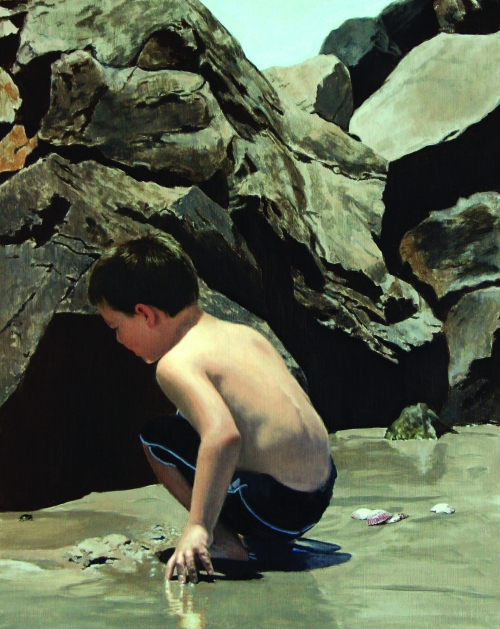 Michael’s Grandson
Michael’s Grandson
What are you working on now?
I am finishing up the last two paintings for Fossil Hunter. Fossil Hunter is the true story of William Foulke who (in 1858) discovered the first nearly-complete dinosaur skeleton (in Haddonfield, NJ) ever found. William proved that dinosaurs once existed because before his ‘find’ people could only speculate on what dinosaurs looked like or if they ever really existed. William changed the world.
 Michael’s Granddaughter
Michael’s Granddaughter
Any words of wisdom on how to become a successful writer or illustrator?
Making a picture is about drawing, composition, and the idea (creating a mood). I base each picture on an emotion like happy, sad, fear, or hope. I use what I call my ingredients (emotion, light/shadow, perspective, color, facial expression, body posture) to tell a story with a picture. Illustrating is like making a movie in print form: you set the stage, props, actors, lighting, and create the mood.

Since Michael has been working on the book FOSSIL HUNTER, he ends his school visits by saying, “I live just down the street from Hadrosaurus Park and I often wonder if there is a dinosaur buried in my backyard. Is there a dinosaur buried in YOUR backyard?”
Now I wonder how many kids are out there digging up their yards.

Thank you Michael for the interview and sharing your process with us. I really enjoyed the time I spent reading about you and your body of work. Please make sure you keep us up-to-date on all your future books and successes. You can visit Michael at: www.michaeldooling.com
Please take a minute to leave Michael a comment. I am sure he would love to hear from you and I would definitely appreciate it. Thanks.
Talk tomorrow,
Kathy
Filed under:
authors and illustrators,
illustrating,
Illustrator's Saturday,
inspiration,
Interview,
Process Tagged:
Ben Franklin Stamp,
Fossil Hunter,
Michael Dooling,
Syracuse University 


Robin Newman did a great interview with Leeza Hernandez. Don’t miss it. Here’s the link: http://robinnewmanbooks.wordpress.com/2014/02/14/leeza-hernandez-award-winning-illustrator-and-childrens-book-author/
CALL FOR ILLUSTRATIONS: Thank you to everyone would sent in an illustration last month. I still have a few in the folder that I plan to use, just looking for the right post, but I am running low, so please look to see if you have anything that you would like me to show off. I am looking for illustrations that would go well with the month or any illustration that might go with a writing or illustrating post. Same as always: At least 500 pixels wide, sent to kathy (dot) temean (at) gmail (dot) com, and include a blurb about you. Thanks!
 Allison Moore Assistant Editor at Little, Brown Books for Young Readers will be February’s Guest Critiquer. Allison is currently an assistant editor at Little, Brown Books for Young Readers, and has worked there for about three and a half years. Prior to that, she interned at a variety of publishers, spent a year as a bookseller, and also worked at her hometown public library.
Allison Moore Assistant Editor at Little, Brown Books for Young Readers will be February’s Guest Critiquer. Allison is currently an assistant editor at Little, Brown Books for Young Readers, and has worked there for about three and a half years. Prior to that, she interned at a variety of publishers, spent a year as a bookseller, and also worked at her hometown public library.
Right now, she is mainly focusing on picture books and other illustrated projects like novelty books, board books, and leveled readers, but she has also worked on a range of middle grade and YA and is very comfortable critiquing books at all levels.
She has spoke at conferences about the extra layers and themes that can help sell books, (ex. we can pitch books about love around Valentine’s Day, and books with educational layers can be well suited for Common Core), children’s book process from acquisition to publication, and the differences between literary vs. commercial writing. She was a mentee at Rutgers One-on-One last year. Allison is definitely someone to watch in the children’s book industry.
BELOW IS THE PICTURE PROMPT for anyone who would like a little inspiration for their first page.

The above illustration is February’s First Page Picture Prompt. It was illustrated by Michael Garland, who was featured on Illustrator Saturday on August 31, 2013. Here is the link.
Here are the submission guidelines for Sending in a First Page.
To send in a First Page: Please attach your double spaced, 12 point font, 23 line first page to an e-mail and send it to: kathy(dot)temean(at)gmail(dot)com. Also cut and paste it into the body of the e-mail.
Put “February First Page Critique” or “February First Page Picture Prompt Critique” in the subject line. Make sure you have your name on the submission, a title, and indicate the genre.
You can only send in one first page each month. It can be the same first page each month or a different one. It can be a first page from a work in process or you can use the picture prompt to inspire a first page.
Please include your name, the title of the piece, and whether it is as picture book, middle grade, or young adult, etc. at the top.
Deadline for first Pages this month is February 21st. Results Posted on February 28th.
Talk tomorrow,
Kathy
Filed under:
authors and illustrators,
Editor & Agent Info,
opportunity,
Places to sumit,
Writer's Prompt Tagged:
Allison Moore,
February First Page Critique,
Free Fall Friday,
Little Brown & Co. BFYR,
MIchael Garland 

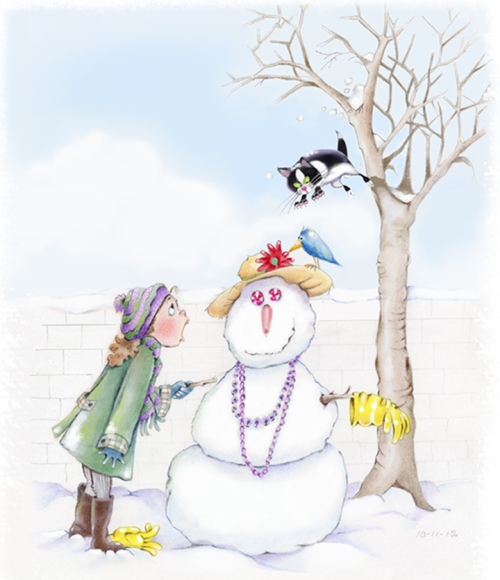
This fun winter illustration was sent in by Susan Drawbaugh. She was featured on Illustrator Saturday May 5th 2012. Here is the link: http://kathytemean.wordpress.com/2012/05/05/illustrator-saturday-susan-drawbaugh/
 Yesterday Angela Sylvia liked my post. I didn’t know her so I followed one of the links to her blog and found a post I thought you would like to read. Anyone who has been writing for a while probably has a few manuscripts that weren’t working and were thrown in a drawer.
Yesterday Angela Sylvia liked my post. I didn’t know her so I followed one of the links to her blog and found a post I thought you would like to read. Anyone who has been writing for a while probably has a few manuscripts that weren’t working and were thrown in a drawer.
Angela Sylvia received her MFA from Lesley University (Cambridge, MA) in 2013, a low-residency program where she focused on Writing for Young People. She recently took out her manuscript in the drawer and shares her advice.
I asked Angela if she could also share a before and after of something she changed. You can see that after her post.
Horrible Past (Writing) Mistakes
I mentioned earlier that my current main writing project is rehashing a novel I completed a few years ago. Thinking it was done 5 years ago, I sent the story out to a handful of agents and got a less-than-enthusiastic response. Tepid is even too strong of a word. “Practically nonexistant” probably best describes the replies I received.
Frustrated, and also feeling like I didn’t have a clue about what I was doing, I pushed this story aside, started work on the novel for whom I’m currently searching for a home, and enrolled in my MFA program. While I did use the first couple chapters of this old MS to get into my program, I haven’t touched it in years.
As things tend to do, this story haunted me, and when it came to be too much I copied the thing into Scrivener, opened split screen, and started retyping the story. I’m just about done with my initial go-through, and I am proud of what I’ve managed to cut and alter. But I am disappointed, and sometimes horrified, at what I dared to send out to agents even a few years ago. Some are big things I might not have noticed that time and a bit of schooling have helped me notice. Others…I don’t even know. Here are a few of the problems:
- Slow Plot. It takes a while for things to get truly interesting. Which is why most of my big cuts take place in the first third of the book. It’s no wonder I never got any personalized email responses, the agents probably slept through my sample pages.
- Whiny MC. I wanted my main character to have some realistic 11-year-old life issues, but I really overdid the last time and she turned into a real Debbie Downer. A bunch of that got cut, too.
- Distant MC. It took me two years of Lesley to figure out that this was my problem and how to fix it, so it’s no surprise that an old MS was practically disease-ridden with distance.
- Lengthy Conversations. I still gotta cut some of these down, even at my ending. It’s kind of a bummer when you realize you said the same thing three times in rapid succession.
- Passive voice. This thing is chock full of it, and it probably bleeds back into my distance issue.
- Overuse of words/descriptions. Everyone is snarling, like, constantly. And I think I used the word “just” about 4 million times.
- Typos. Oh my god! The typos I left in there! Forgotten quotations, misspelled words, inconsistent apostrophe use. Did I even proofread this thing before I sent it out? I can’t even remember now.
Really, this is a great case for giving yourself time and distance before you dive into edits. Hopefully I’ve learned enough now that I won’t have to wait it out for half a decade before going back to something. Also, get a bunch of critique partners to read it before you send it out, seriously.
Here’s an example where I did some big cutting, the opening pages of my story:
Original Beginning
The great yellow bus tumbled down the road, each bump and pothole bouncing Becky in her seat. Becky’s bus was always one of the last ones to pick up students at the school, and it was a long route, with Becky’s stop at the end. Her best friend Jane wasn’t even on her bus, so she had to sit through the rumbling ride on her own. But Becky didn’t mind—she had her CD player sometimes, and even when she didn’t she could read one of the books that was always crammed into her backpack, or stare out the window, watching the trees and buildings whiz past.
Becky didn’t like to just look at things—she liked to imagine what they could be. Distant hills were giants who knew how to sleep perfectly still, and snowflakes were white ballerinas spinning in a graceful dance to the ground. In class, it was not a pencil she held, but a magic wand that could cast powerful spells. These thoughts lifted Becky away, and for those moments she felt entirely at ease. But then the teacher raised her voice, or a student sneezed, and she reentered reality with a start, flipping through her textbook to find the right page.
Becky wrote these things down, creating stories in the weekly journals her 6th grade class was forced to keep. Her teacher, Mrs. Madison, would write Becky kind comments in the margins of the notebook, which she returned each Monday with a smile. On this day the trees were stoic sentinels, their thin branches like arms reaching for something in the sky. The spring rain pouring down was an ecstatic drum chorus greeting Becky as she was carried down the street. The water pooled and splashed on the side of the road, sending crumpled dead leaves down makeshift rivers. Tiny canals, Becky thought, that you could ride along if you were small enough, down along the road and into the drain pipes. She wondered where those pipes would take the riders; someplace different, she thought. Definitely better.
Becky sat on her cold plastic seat, her legs pulled up so the heels of her boots rested right on the edge. Tilting her head, she rested it sideways against the window, her breath making a fog circle on the glass, her dark brown ponytail tickling her ear. The bus was a great growling yellow beast, and she could feel it vibrate through her scalp as it tumbled down the road.
Becky’s house came into sight, and the bus came to a slow, grinding halt, the brakes moaning in a wailing protest. Time to get off, before the anxious beast became too impatient.
Becky grimaced as she stepped out into the rain. She started walking towards the house as the grumbling bus pulled away, when she noticed a bright spot right on the side of the road. It was a daffodil in full bloom just on the edge of the pavement. Becky dropped her bag on the lawn and walked to the flower, squatting beside it.
It was early for this flower to be blooming, Becky knew. The snow had only just begun to melt. She wondered how it was growing in the cold soggy ground in the freezing rain.
A shiver told Becky she had been in the rain for too long. She stood to go, but not before grabbing the flower, digging her fingers into the earth to pull it up by the roots. It was pretty, she told herself, and would look nice inside, out of the rain.
New Beginning
The great yellow beast of a bus rumbled away behind Becky, but she continued to stand in the rain as cold drops soaked through her strands of hair. Her eyes fixed on a bright spot at the edge of the road. A daffodil in full bloom, clinging to the edge of the pavement. Becky clutched her bag to her shoulder, and crouched beside the flower.
This daffodil was very late. Summer ended months ago, and it wouldn’t have been too strange for it to start snowing already. But still it grew in the soggy ground, survived the freezing rain.
Becky shivered, shaking droplets off her bangs. She stood, but not before grabbing the flower, digging her fingers into the earth to pull it up by the roots. It was pretty, and would look nice out of the rain.
The result is the same: she finds a flower (which will later turn out to be a pixie) when she gets off the bus, and then brings it inside. I cut the slow intro of seeing my main character on the bus, gloomily watching the rain and telling the reader about how her imagination works. This slowed the story down, delaying the big point of the scene, and spent too much time pointing out the main character’s active imagination instead of showing it through her stories and daydreams later. I also felt she was far too gloomy, and too hard to like off the bat, so that went, too. In the end, two pages went down to three paragraphs. Is it too abrupt? Does it still work? Maybe, maybe not. I certainly felt better about it after.
Angela worked on a middle-grade fantasy novel while getting her MFA, which she has recently completed and is currently querying to agents. Currently she is working on another middle-grade fantasy as well as short stories. Angela currently lives in New Hampshire.
Find Angela on Twitter @AngelaLSylvia or her blog, www.diaryofabookworm.wordpress.com.
Talk tomorrow,
Kathy
Filed under:
article,
Book,
Process,
revisions,
Writing Tips Tagged:
Angela Sylvia,
Susan Drawbaugh,
The novel in the draw 


This cold winter season,“Tree: Winter” was illustration sent in by Patricia Pinsk. She is an artist who resides in Vancouver BC. Patricia works in water colour, ink, digital photography, coloured pencil and collage. You can see her portfolio at http://www.jacketflap.com/profile.asp?member=ppinsk .
Here are some of people in the industry who have recently gotten promoted:
Congratulations to everyone!
Sara Sargent has joined Simon Pulse as editor. Previously she was an associate editor at Balzer + Bray.
At William Morrow, Kate Nintzel has been promoted to executive editor.
At Candlewick, Mary Lee Donovan has been promoted to editorial director.
Annie Kelley has returned to Schwartz & Wade Books as senior editor. Previously she was youth editor at Booklist.
At Inkwell Literary Management, Allison Hunter and Lauren Smythe have both been promoted to agent.
At The Experiment, Nicholas Cizek and Molly Cavanaugh have both been promoted to associate editor.
Talk tomorrow,
Kathy
Filed under:
Agent,
Editors,
Kudos,
Publishing Industry Tagged:
Annie Kelley,
Inkwell Literary,
Mary Lee Donovan,
Patricia Pinsk,
Sara Sargent 


By: Kathy Temean,
on 10/5/2013
Blog:
Writing and Illustrating
(
Login to Add to MyJacketFlap)
JacketFlap tags:
Contests,
opportunity,
Kudos,
Emily Van Beek,
Christy Ottaviano Books,
Betsy Devany,
Cherry Money Baby,
It's a Firefly Night,
Betsy Synder,
Traveling Book,
Add a tag
 YAY! In case you missed all the screaming from Betsy Devany and all her friends, Betsy signed a contract for her first picture book, SMELLY BABY to Christy Ottaviano of Christy Ottaviano Books at Henry Holt.
YAY! In case you missed all the screaming from Betsy Devany and all her friends, Betsy signed a contract for her first picture book, SMELLY BABY to Christy Ottaviano of Christy Ottaviano Books at Henry Holt.
Betsy’s debut book will be illustrated by Christopher Denise.
Everybody thinks Smelly Baby is gross, but she is beloved by Lucy. No one understands how amazing Smelly Baby is – or so Lucy thinks until Smelly Baby is … Publication is scheduled for spring 2016; Emily van Beek at Folio Literary Management did the deal on behalf of both Devany and Denise.
CONGRATULAIONS! BETSY, CHRISTOPHER, EMILY, and CHRISTY!
 Robin Newman is celebrating, too.
Robin Newman is celebrating, too.
She has two picture books coming out in 2014 with Creston Books.
Hildie Bitterpickles Needs Her Sleep,
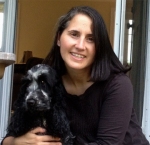 illustrated by Chris Ewald (Spring 2015)
illustrated by Chris Ewald (Spring 2015)
and
The Case of the Missing Carrot Cake, A Wilcox & Griswold Mystery,
illustrated by Deborah Zemke (Fall 2015)
CONGRATULATIONS, ROBIN and agent LIZA FLEISSIG!

WINNER: Rosi Hollinbeck is the winner of IT’S A FIREFLY NIGHT written by Dianne Ochiltree and illustrated by Betsy Snyder.
Congratulations!
Please send me your address, so I can pass it on to Dianne. I know you will love the book.
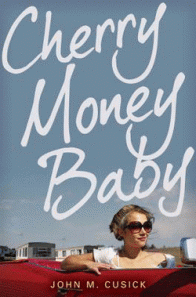 Now for my idea to send CHERRY MONEY BABY traveling:
Now for my idea to send CHERRY MONEY BABY traveling:
I bought a copy Of John Cusick’s new book and will send it out to someone who leaves a comment saying they will read the book within a month or less and then pass it on to another person who can read it less than a month. I would like everyone who receives the book to email me with a little blurb of what they thought of the book and take a picture of yourself with Cherry holding the book and telling us about your location. It would be fun if you could mail it to someone in another state, etc. If everyone took a month that would take her off to twelve locations, but if it goes to some fast readers she could really see the world. I will post each month about Cherry’s travels. I will put up a blurb about you, too, so if you have signed a contract or have a published book, it would help show you off, too.
If you end up with the book and don’t know who to send it to, I will be glad to give you a name and address. So join in the fun and leave a comment letting me know you are willing to read and send on. You could even say the winner could send to you.
Talk tomorrow,
Kathy
Filed under:
Contests,
Kudos,
opportunity Tagged:
Betsy Devany,
Betsy Synder,
Cherry Money Baby,
Christy Ottaviano Books,
Emily Van Beek,
It's a Firefly Night,
Traveling Book 


By: Kathy Temean,
on 10/4/2013
Blog:
Writing and Illustrating
(
Login to Add to MyJacketFlap)
JacketFlap tags:
Interview,
picture books,
inspiration,
Process,
illustrating,
Highlights for Children,
authors and illustrators,
How to,
Illustrator's Saturday,
Spider Magazine,
Mark Meyers,
Take Me Out to the Ball Game,
Add a tag
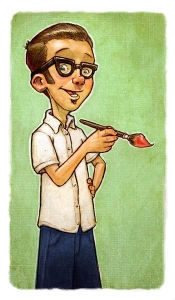 Mark was born and raised in Northern Utah under the shadow of the Wasatch Mountains. He spent many childhood days climbing, exploring, and causing general mayhem on the mountainside. Running around with his brothers he learned early on the finer things in life like the sound of breaking glass, the freedom of running around in your underwear, and the feel of rushing wind on your face as you’re falling out of a tree.
Mark was born and raised in Northern Utah under the shadow of the Wasatch Mountains. He spent many childhood days climbing, exploring, and causing general mayhem on the mountainside. Running around with his brothers he learned early on the finer things in life like the sound of breaking glass, the freedom of running around in your underwear, and the feel of rushing wind on your face as you’re falling out of a tree.
Mark has always loved to doodle whatever silly thing popped into his head. He never took too seriously but always liked to make people laugh with his drawings. By a strange series of events he found himself in foggy San Francisco studying illustration at the Academy of Art University, where he earned a Bachelor degree in Illustration. Now his days are spent drawing and painting pictures filled with kids, escaping circus monkeys, and everything in between.
Here is Mark talking about his process:
Generally I start out with thumbnails to get an idea how I’m going to break up the space.
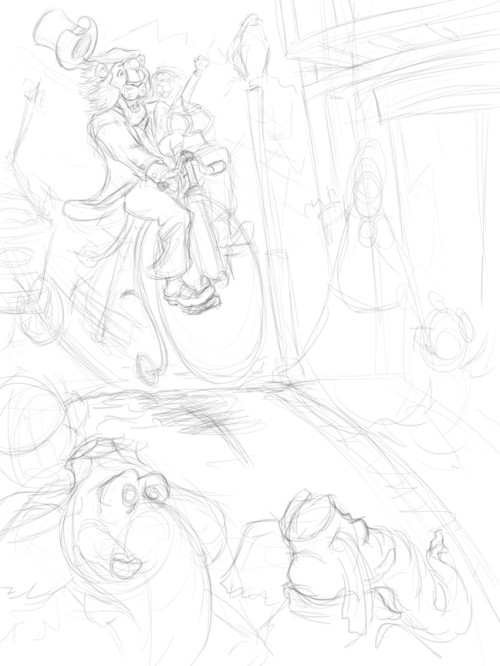
Once I get something I like I will blow it up and start working right over the top. I will do this either on paper or in Photoshop, for this one I did all the initial drawing in Photoshop (it was more of a matter of time frame than anything). I will then scan it in if it was done on paper, and then start to flesh things out and figure some of the detail. Once I am happy with that I will print it out very lightly and do a pencil drawing over it further working out the detail.
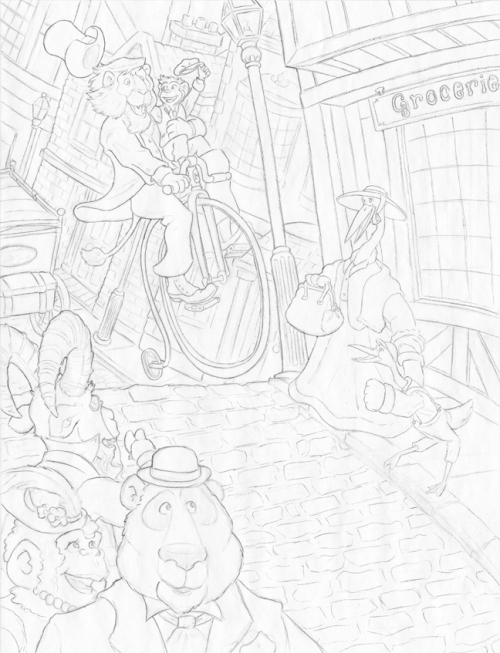
Once I am happy with the finished line drawing I will scan it back into Photoshop, and clean it up if it needs to be. Generally at this point I will also give the line work a little bit of color just so it’s not black.
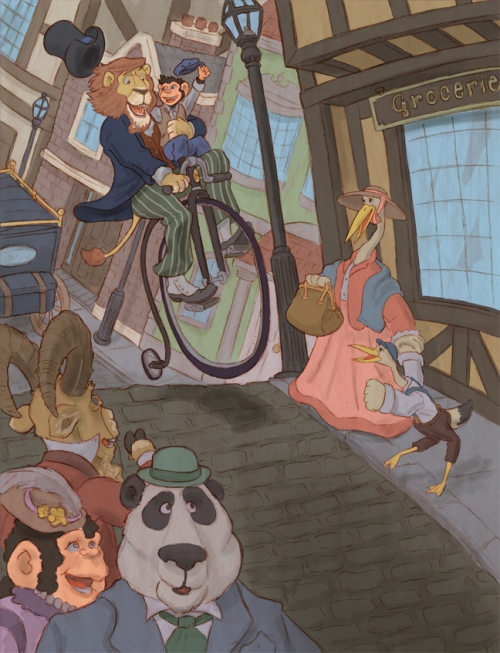
Once in photoshop I will do what I would call an underpainting. I will layout the basic color scheme and do some shadow lay in. This stage gives me a chance to set my basic value pattern and color scheme, but everything
will have a least a layer of acrylic over the top of it. Sometimes the colors will change quite a bit by the final if something isn’t working. Also this is a good stage to add a light overall layer of color. For example if this is going to be a cool image a semi transparent layer of blue would work good. On this painting it has a slightly warm tone over it. Basically at this point all of the space is filled even though somewhat rough.
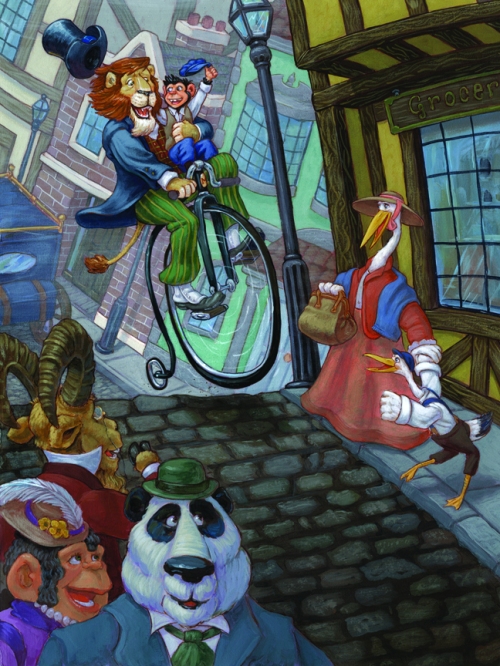
I print this out on epson watercolor paper. Then I spray it with a coat of Krylon workable fixative to help keep the ink on the paper. Next I get the paper wet and stretch it like you would any watercolor paper. I highly doubt that epson suggests this but with a little trial and error it works quite well. When wet you do have to be somewhat careful because the paper is a bit fragile. While it is still somewhat damp I coat the entire image in a layer of matte medium. This seals it all down and gives a nice tooth for painting. Then I let it dry completely. For the most part I paint with acrylic but will use watercolor, colored, pencil, and just about anything I think will work. When painting I generally work from furthest away to the front. That way you don’t have to worry about the
edges of stuff that has already been painted. I’ve also found doing the background first makes it easier to keep your values working. It also gives you a clear plan of attack of how to finish your painting. So working from back to front I go along adding details and finishing it off.
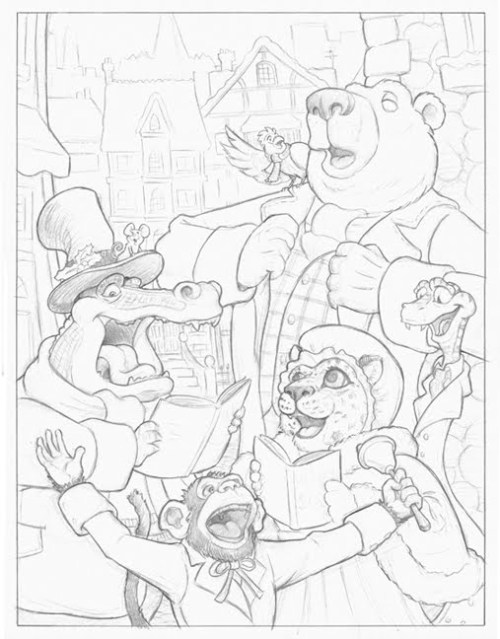
First, I sketch and once I’m happy I scan it into Photoshop. I adjust the color of the line to either a warm or cool color depending on the painting. I basically do a quick color study under the line drawing in Photoshop. I set the basic values and colors at this step. For this painting everything has kind of purple cast to keep that cool feeling. You could go a lot further at this point than I did, but I prefer to do most of the work in paint.
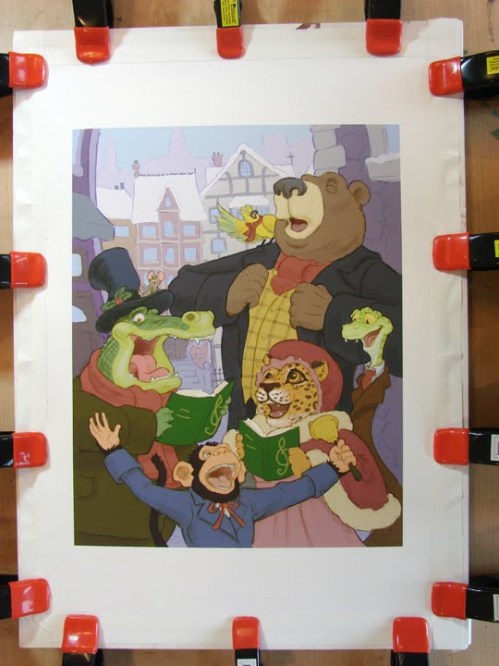
After I’m done in Photoshop I printed it out on some 13×19 Epson water color paper. I gave a few quick coats of workable fixatif. The ink in my printer is very waterproof or else you have to really coat it with workable fixatif. Then I stretch it like you would any other type of watercolor paper.
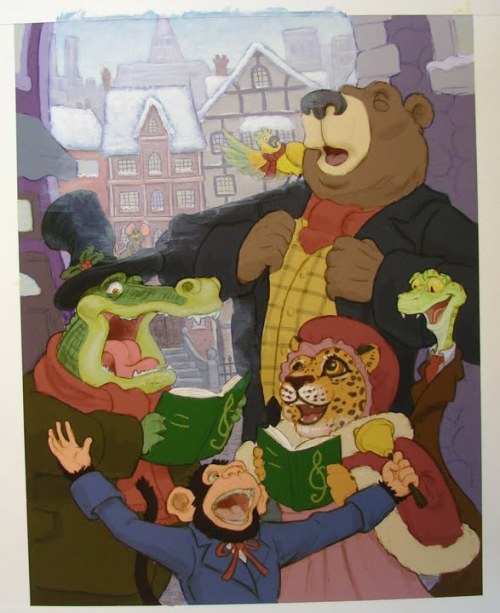
In the end pretty much all of the digital painting won’t be visible, but it helps to speed up the process, and gives you some direction. I use acrylics and usually start from the furthest point and work my way forward. For me it helps me keep control of values, and you don’t have to worry about painting around things as much. Also if I paint the funnest things first then I run out of motivation to paint everything else.
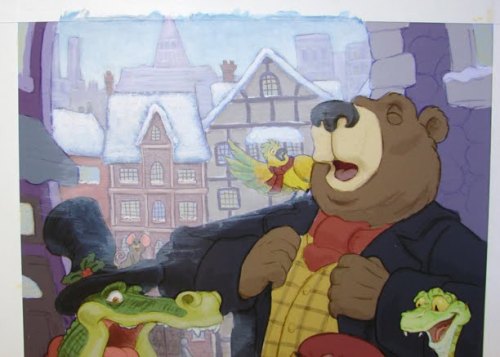
Here’s a detail where you can see that I’m not very concerned about over painting things in the foreground.
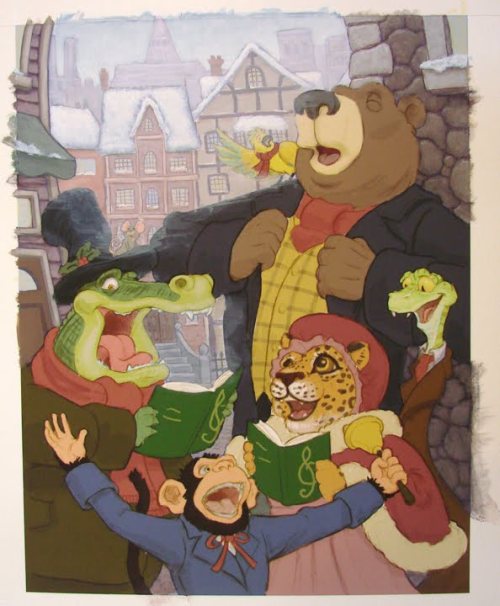
I keep moving forward. The buildings are a good example of how in paint I refine things but the digital color still peeks through here and there. Basically the same concept as toning a canvas.
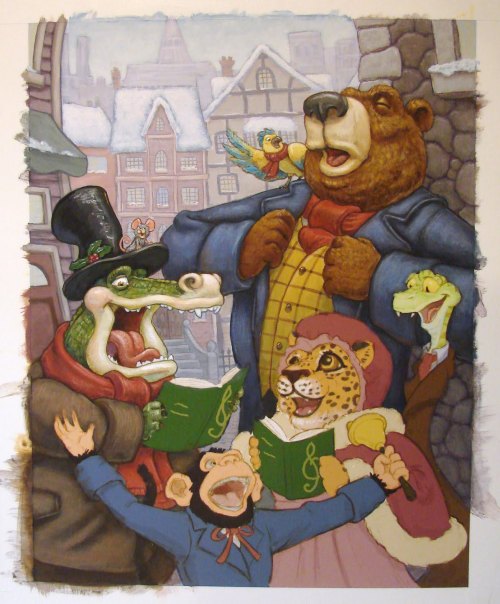
The values are off in this picture, but at this point I’m starting to refine the main characters.
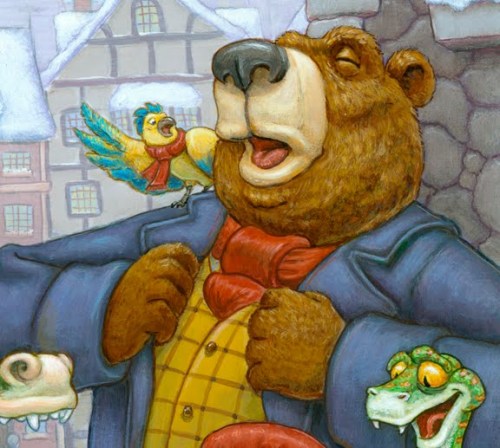
A few detailed shots
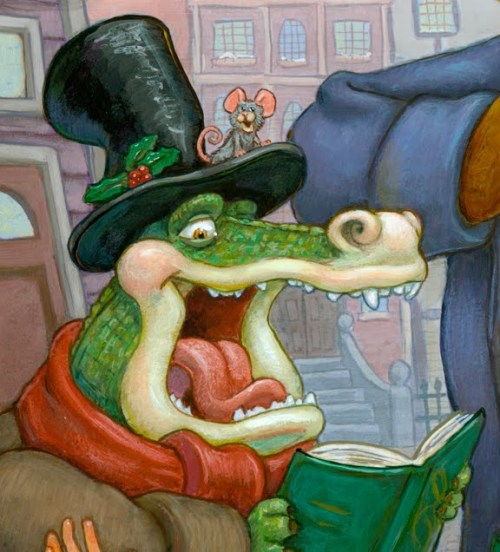
Once everything is painted I spend a little more time making all the small adjustments. I could do this forever and would more than likely eventually end up ruining the painting. So after a bit I usually stop myself and call it finished.
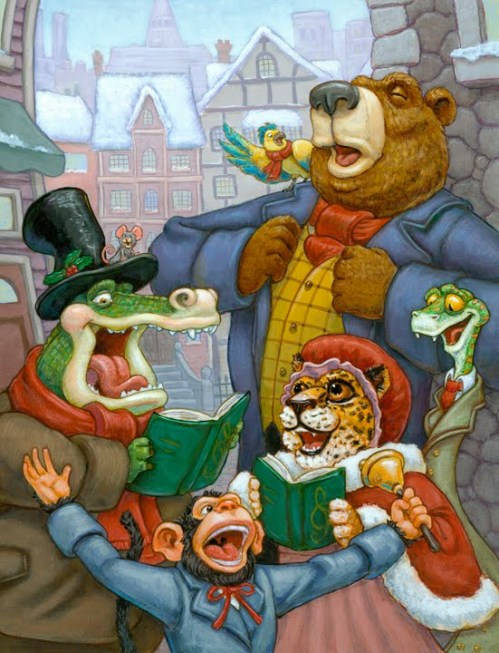
How long have you been illustrating?
I believe this year will be my fifth year of illustrating. I’m still learning, growing, and loving it.
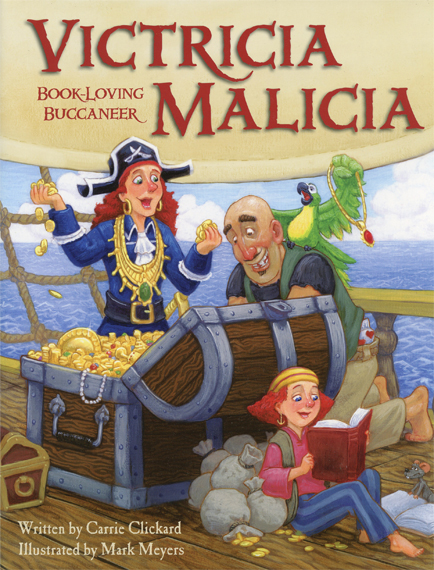
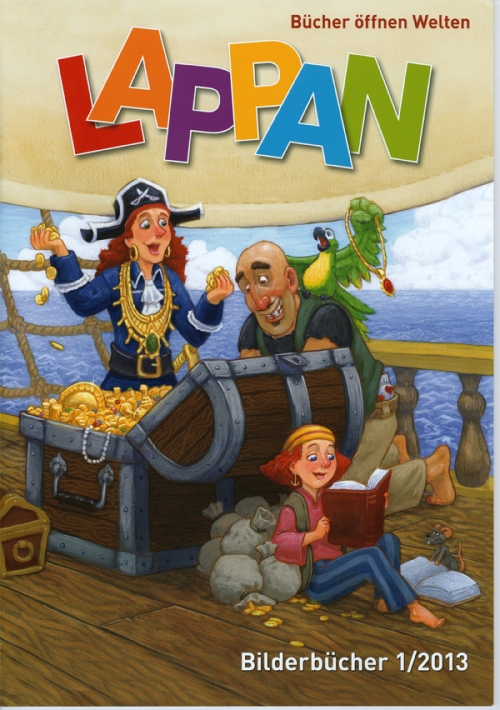
I see you live in Utah and attended Academy of Art University. How did you decide to attend AAU?
I had been playing around with 3d animation programs and making little movies at a local college. I thought maybe I would be interested in that. My sister that lived in San Francisco at the time suggested I come and tour the school. Luckily for me they had a pretty open enrollment program because I did not have much of portfolio. I had always loved to draw and make stuff but hadn’t taken it very seriously up to that point. When I actually got to AAU they start all students in fundamental drawing classes. I was honestly terrible at it but I loved it. In that first semester I made up mind do go into illustration and never even took a single 3d animation class.
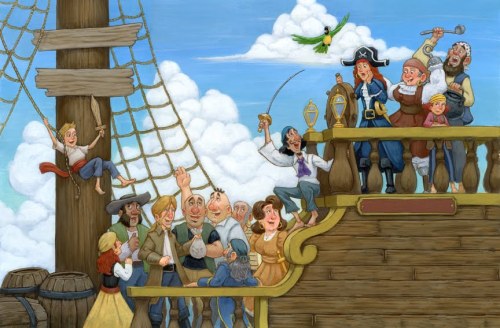
Can you tell us a little bit about that school?
For me it was a great school. They put a huge focus on learning to be a good craftsman, a very classical approach to art. As I mentioned above I didn’t have much training so it was good to start on the bottom. I can’t really speak for the rest of the school but the Illustration department and its faculty were incredible. Most of the teachers were very skilled illustrators and very willing to share their knowledge. Another great thing about being there was the huge amount of artwork that I was exposed to.

What types of things did you study there?
Kind of hard to narrow it down but lots of live drawing and painting. Then as I got further along the classes became more specific to what you wanted to do. That way you are building a portfolio of the type of work you want to do.
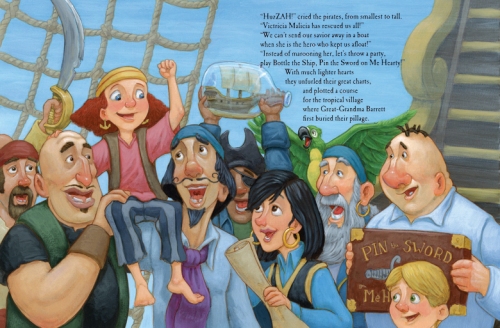
What classes were your favorites?
There were probably three classes that were my favorite. The first ones were the base illustration classes that were taught by the talented Robert Revels and Stephen Player. Craig Nelson really taught me a lot about telling a story with pictures in narrative storytelling. I had Leuyen Pham, who is a fantastic children’s book illustrator, as a teacher in a children’s illustration class which really pushed me in the direction that I have gone.
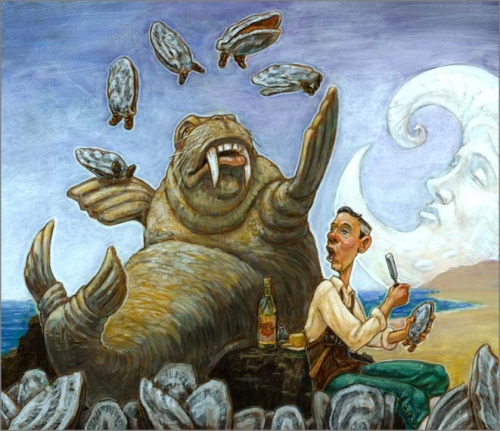
Did the School help you get work?
I don’t know that the school directly got me work. However they do have good programs to help their students get work. I just tend to be the type that goes out on there own.

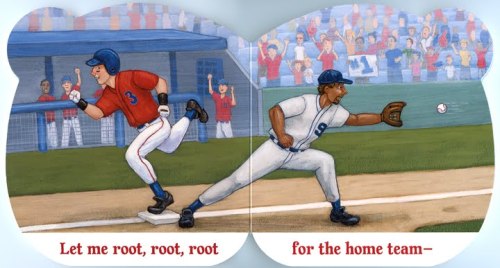
Do you feel that the classes you took there have influenced you style?
Of course the classes I took influenced my style. I think everything you see and draw does. In fact I was so influenced by them that eventually I had to step away a bit and start pushing my own style.
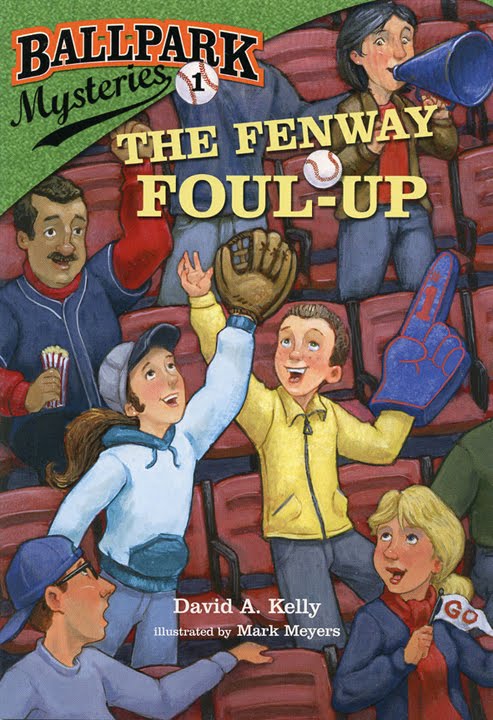
What was the first thing you did where someone paid you for your artwork?
I think the first time I ever got paid for artwork was in the sixth grade when a drawing I did won as the cover for our yearbook. I was pretty excited when they gave me a crisp twenty dollar bill.
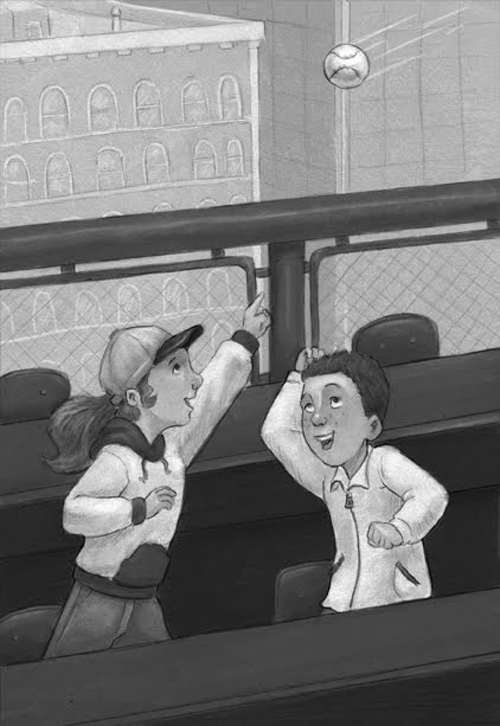
Did you move back to Utah after you graduated?
We stayed in the bay area for a couple years after I graduated, and then moved back here in I believe about 2010 or so.

What was the first illustration work you did for children?
The first illustration work I did for children was an educational book that I did for Houghton Mifflin.
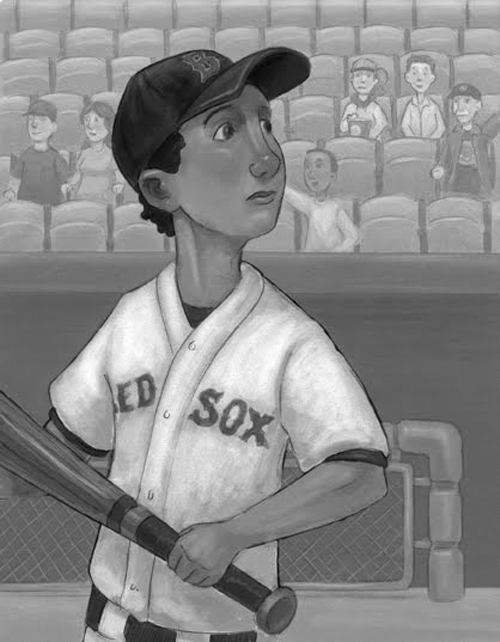
How did that come about?
I had just gotten an artist rep and that was the first job that they sent my way. I believe it was in my last semester of college.
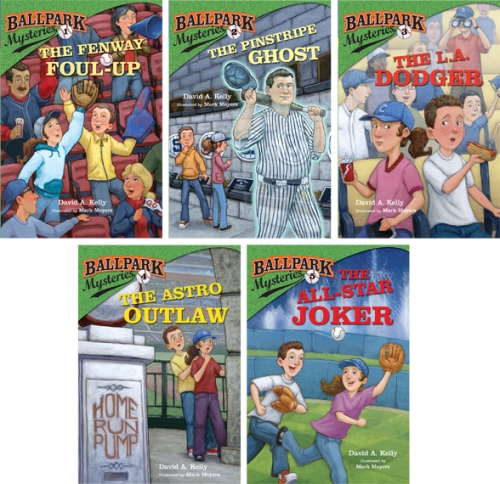
When did you decide you wanted to illustrate a children’s book?
It was probably about half way through college that I really started pushing towards children’s books. I was classically trained but my natural style tended to lean a bit to the cartoony side. I really started reading a lot of picture books and loving how the words and artwork went together. It’s still fascinating to me how the words and the pictures can simultaneously tell two stories at the same time. I also realized I was a kid who never grew up and that children’s books very much matched my sense of humor.
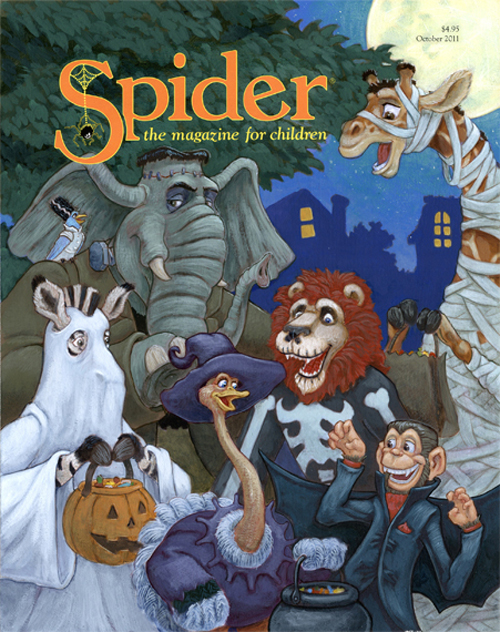
What was your first picture book? Who was the publisher?
My first picture book was Victricia Malicia and published by Flashlight Press. It’s the story of a little girl who is a book hound but is born into a pirate family.
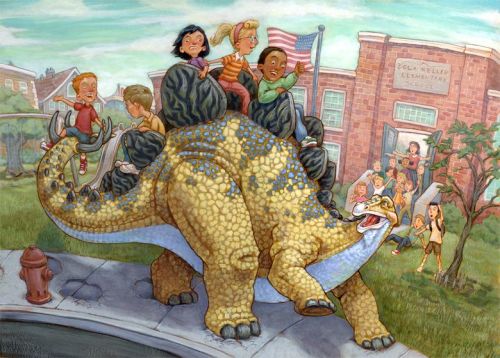
Can you tell us the story behind you getting this job?
I had an art rep but I also like to be able to send out some of my own promotional material. I had found their contact info and sent them my promo. After a little while they contact me and said they had a book that they thought would match my style, and as they say the rest is history.
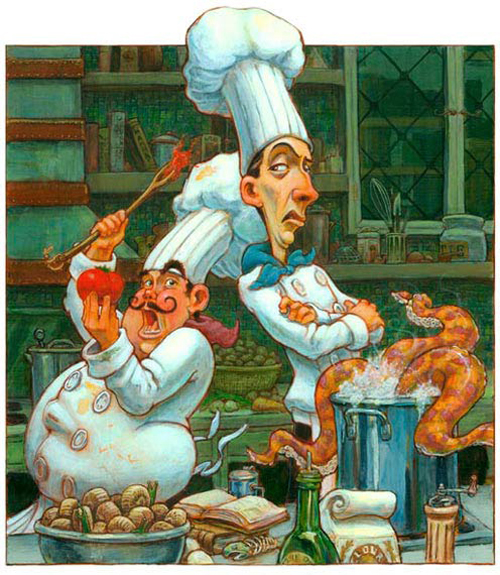
Did you do anything specific to get the contract to illustrate The Ballpark Mysteries published by Random House?
I don’t know that it was anything special. It was from promotional material that either me or my rep sent out.
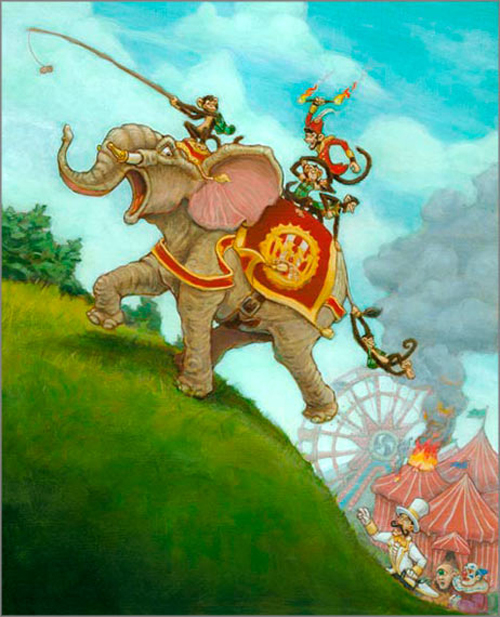
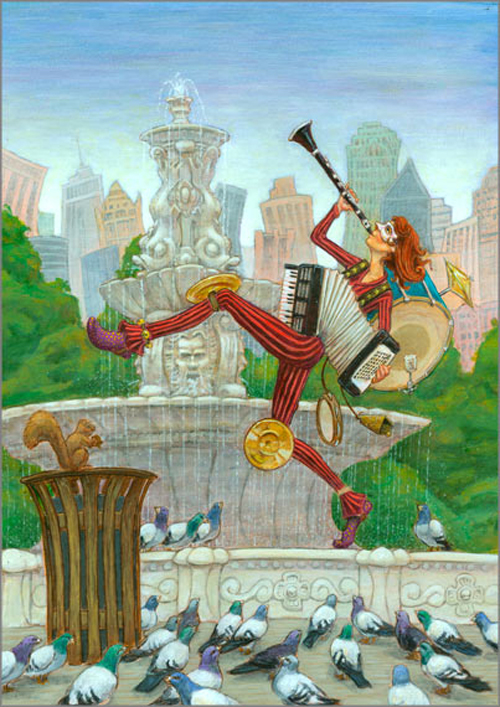
How did you get the opportunity to illustrate Take Me Out to the Ball Game?
Take me out to the Ball Game was a fun one to do and I had already illustrated a book for the publisher (read next question).
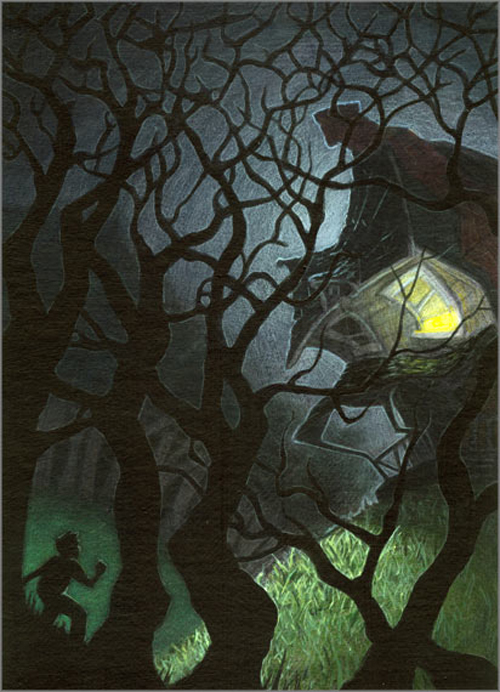
Is this the first book that you did with Ideal’s Candy Cane Press?
The first book that I did for Ideals was Counting Cows by Michelle Medlock Adams. It’s a counting book about a boy who is tired of counting sheep and decides to give cows a try. Though there are still a few sheep thrown in for fun.
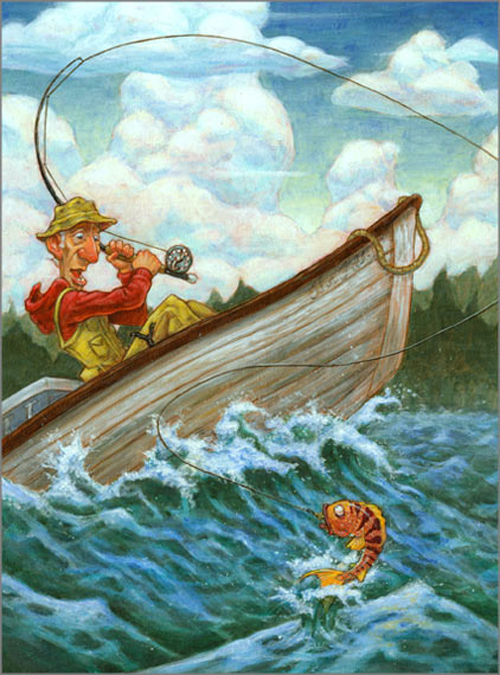
How did that contract come about?
I can’t remember exactly on this one but I believe they had seen my artwork on my artist rep’s website.
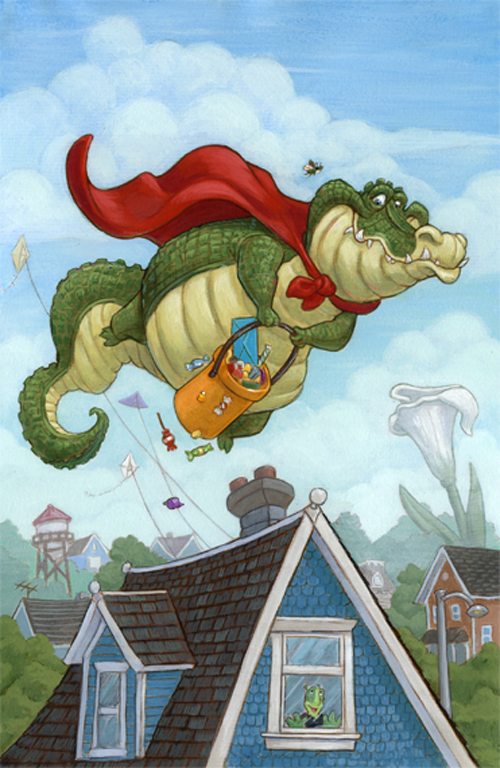
Have you done any work for children’s magazines?
I have worked with Spider, Cricket, Houghton Mifflin, and Highlights for Children. Probably my favorite of those was doing the Halloween cover for Spider Magazine.
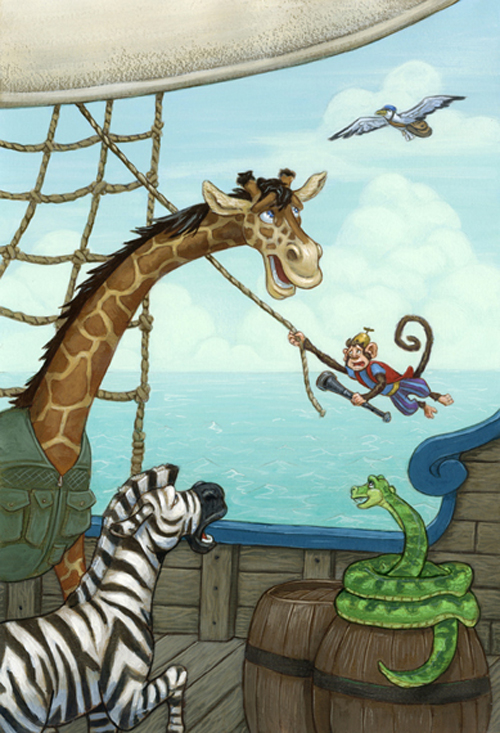
Have you worked for educational publishers?
I have done a fair amount of work for educational publishers.
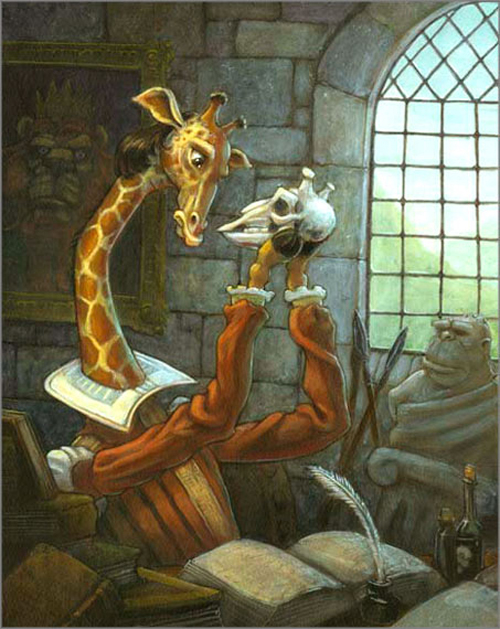
Do you have an artist rep or an agent? Could you tell us how the two of you connected?
I am represented by Wendy Lynn & Co. I was still in college but I felt like I had a fairly strong and consistent portfolio. So I started sending it out to various agents that I thought I would be a good fit with. As most new illustrators will find the sticking point was my lack of actual published work. After talking with WendyLynn for a while we decided to give it a try and I have been working with them ever since.
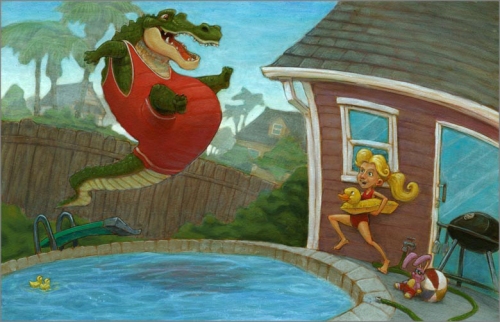
Would you ever like to write and illustrate your own book?
Absolutely! I have stories that I want to tell in both words and pictures. In the last little while I have really been pushing myself on a couple of book ideas I have to get them ready for submission to publishers. I’m still better a drawing than writing but I keep working away at it.

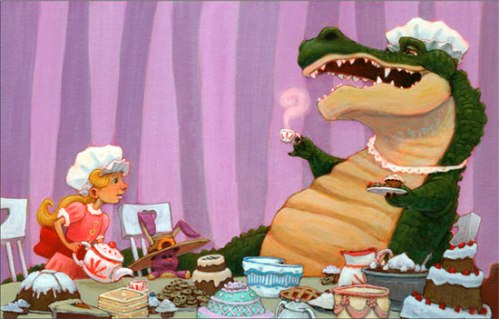
Are you open to illustrating for self-published authors?
I am, and have done several different project with self-publishers. I recently finished ‘Stories to Make you Dream’, by John Roozen.
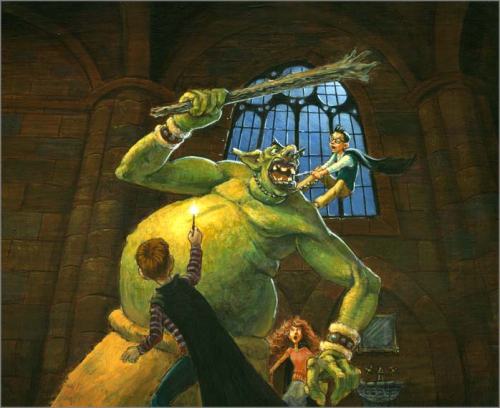
24. What types of things do you do to find illustration work?
My rep has my art featured on their site (http://www.wendylynn.com/artist.php?name=markmeyers) and on childrensillustrations.com. I also try to keep my website and blog updated (www.markmeyersart.com). I haven’t been real great at that part but I just revamped my website. In addition to WendyLynn sending out promotional material I try to get postcards sent out a couple times a year at least.
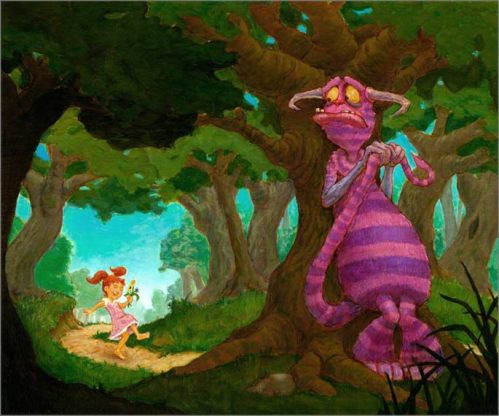
25. What is your favorite medium to use?
By far my favorite medium is acrylic. Though I like watercolors and oil too, but rarely use them for finished work.
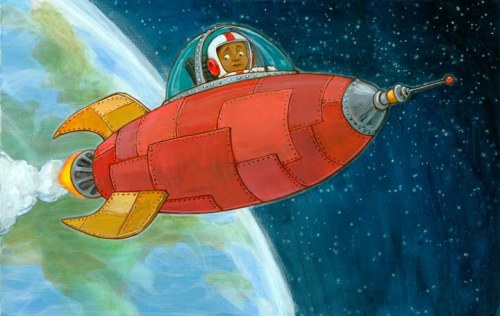
26. Not counting your paint and brushes, what is the one thing in your studio that you could not live without?
Well anymore it would be hard to get by without the computer. Also I recently picked up a 100 year old drafting table that I am in love with.
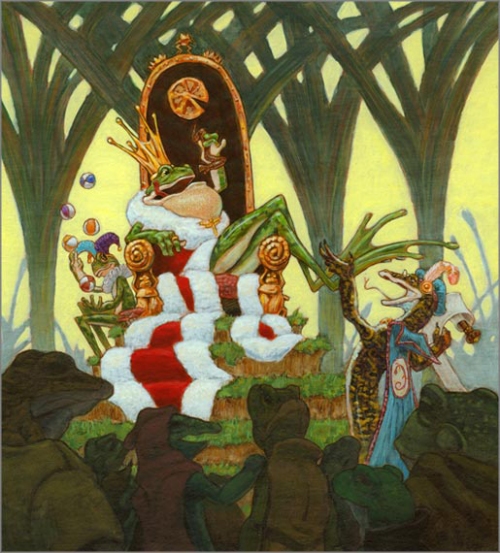
27. Do you try to spend a specific amount of time working on your craft?
I usually spend a full work day in my studio working on art. I guess that can range anywhere from 8-12 hours depending on deadlines and projects. Most of the time is consumed by current projects, but if I’m lucky to have some spare time then I try working on my back log of personal projects.
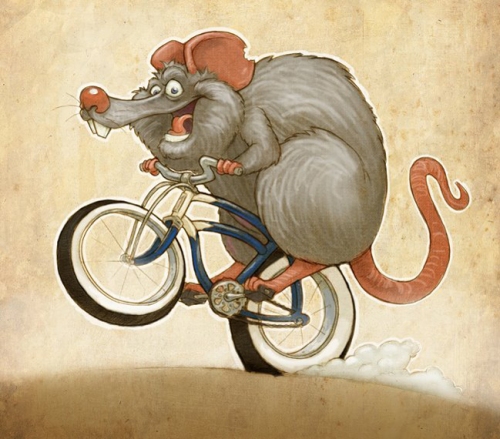
28. Have you ever won an award for your writing or illustrating?
In my last year at school I was honored to have two pieces of mine in the Society of Illustrators student competition.
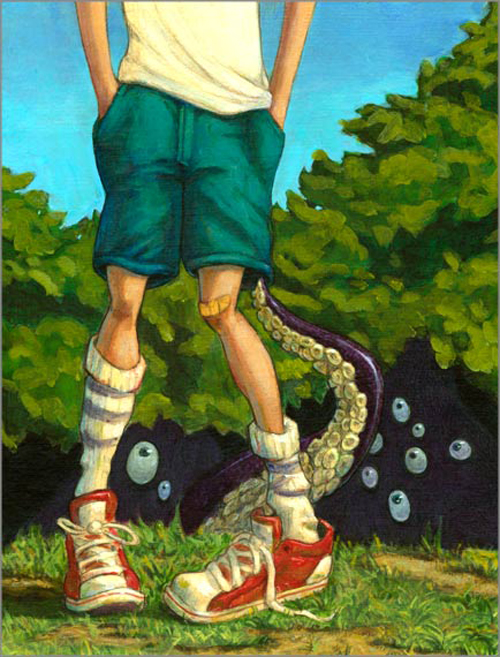
29. Do you take pictures or do any research before you start a project?
It kind of depends on the project but I usually do a fair amount of research. For me personally I try not to use much direct reference. I will study the reference and then put it away while I’m drawing and painting. That way it forces me to make it my own.
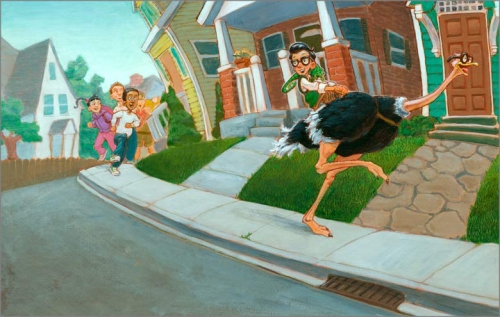
30. Do you think the Internet has opened doors for you?
I think so. The internet broadens the amount of people you can reach, and can get your work in front of a lot of people.
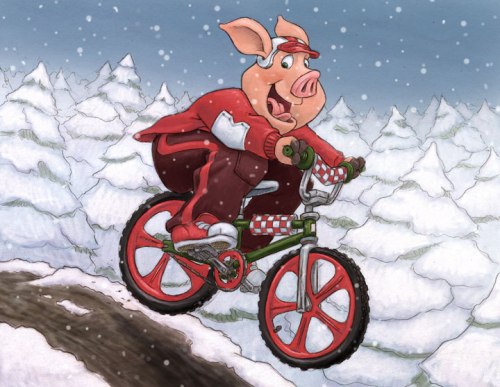
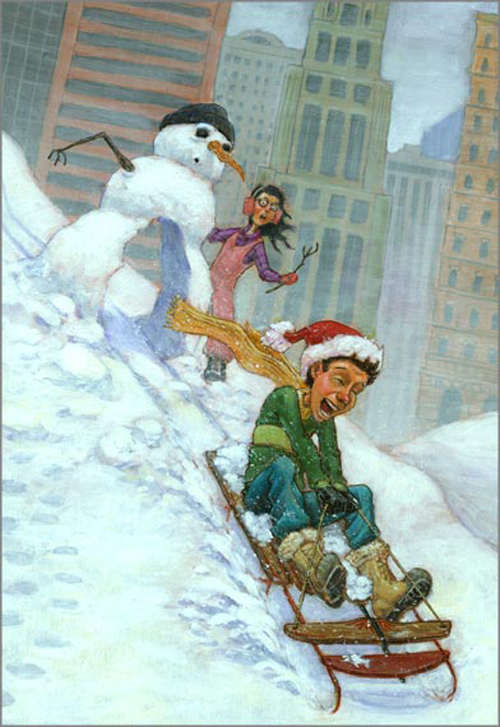
31. Do you use Photoshop with your illustrations?
I do a lot of my preliminary drawings and color studies in photoshop. If time is short sometimes I will finish a piece in photoshop but still prefer the look of my painted work.
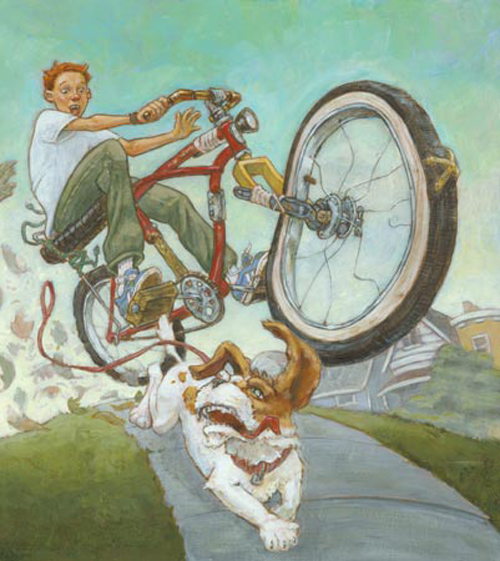
32. Do you own or have you ever tried a graphic Drawing Tablet?
Yes, I am currently using a Wacom Intuos 5. I think I would be lost working digitally without one.

33. Do you think your style has changed over the years? Have your materials changed?
It is hard for me to say if my style has changed. I think it gets refined with every illustration that I do so I guess it does. I would say the same thing happens with the materials too. You find new stuff that works and get rid of old stuff you no longer need.
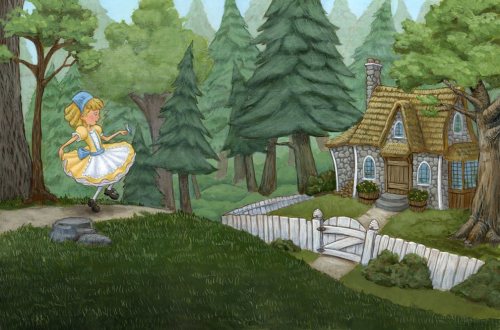
34. Do you have any career dreams that you want to fulfill?
I sure do. If I had done everything I had wanted to do then it would be time to find a new career.
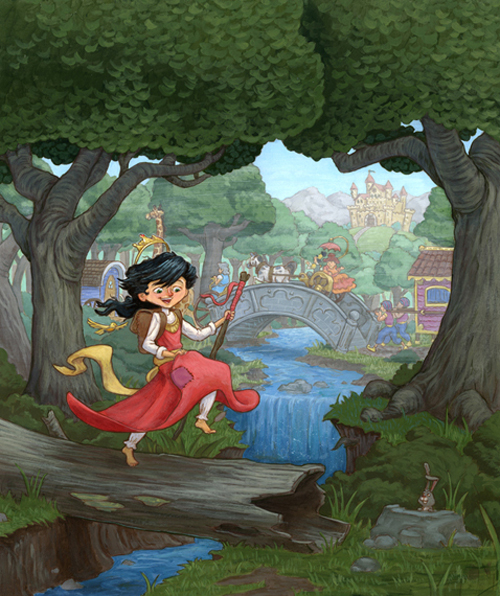
35. What are you working on now?
At this moment I am continuing to work on the Ballpark Mysteries series, book #2 in a series for a self-publisher, and a poster for a zoo.
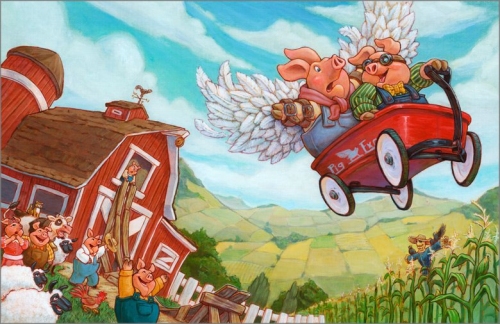
36. Do you have any material type tips you can share with us? Example: Paint or paper that you love – the best place to buy – a new product that you’ve tried – A how to tip, etc.
I am a big fan of Epson water color paper. It handles being stretched and is nice to paint back over. Lascaux makes an acrylic paint called tint white that I have found to be very useful. Though it’s not new I’ve been toying around with clear gesso and I’m really starting to like it.
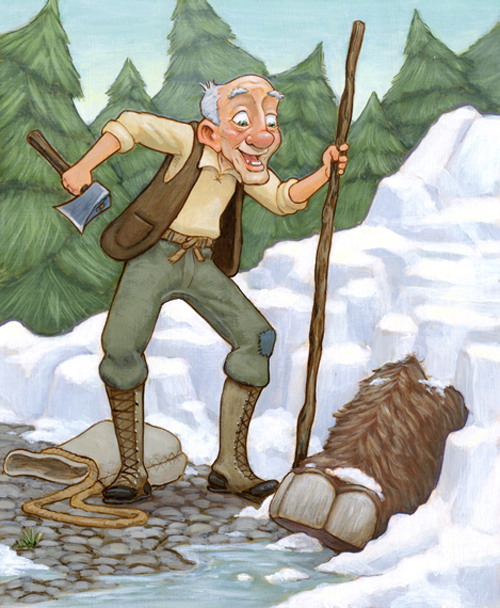
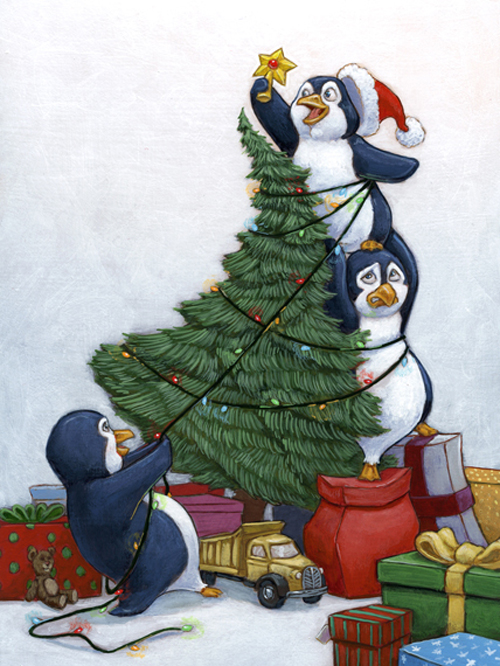 37. Any words of wisdom on how to become a successful writer or illustrator?
37. Any words of wisdom on how to become a successful writer or illustrator?
Don’t stop trying!!! From my experience in the illustration world there will be lots of ups and downs. You need to have passion for what you do and be always ready to learn. A sketchbook should be your best friend.
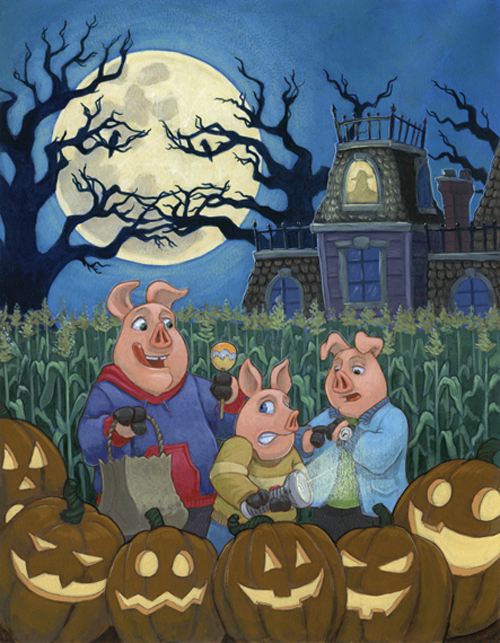
Thank you Mark for sharing your eye-catching illustrating and process with us. Please keep us up-to-date with all your future successes. We’d love to hear about them. Here is the link to Mark’s website: http://markmeyersart.com/
If you have a minute, please leave Mark a comment. We love to hear from you.
Talk tomorrow,
Kathy
Filed under:
authors and illustrators,
How to,
illustrating,
Illustrator's Saturday,
inspiration,
Interview,
picture books,
Process Tagged:
Highlights for Children,
Mark Meyers,
Spider Magazine,
Take Me Out to the Ball Game 


By: Kathy Temean,
on 10/3/2013
Blog:
Writing and Illustrating
(
Login to Add to MyJacketFlap)
JacketFlap tags:
Hazel Mitchell,
Free Fall Friday,
Shawna JC Tenney,
dianne Ochiltree,
First Page Critiques,
John Cusick,
Editor Emily Seife,
Katherine Tegan,
Scholastic,
opportunity,
Kristi valiant,
Add a tag
CALL FOR ILLUSTRATIONS: Please remember to send in your illustrations for October. It is a great way to get seen and keep your name out there to get noticed. Send them to Kathy(dot)temean(at)gmail.com with October Illustrations in the subject area. Please submit .jpgs at least 500 pixels wide.
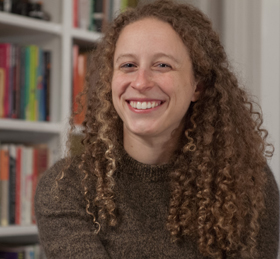 Emily Seife associate editor at Scholastic Press, has agreed to be our Guest Critiquer for October’s First Page winners. She works with award-winning authors such as Cynthia Lord, Philip Reeve, Daphne Benedis-Grab, James Proimos, and many others. She is an editor on the Infinity Ring multiplatform series, and is the author of The Hunger Games Tribute Guide. Emily is especially looking for: Young adult and middle grade fiction: stories with a strong voice and emotional core, contemporary humor, magical realism, mystery. She says she is not a good fit for: high fantasy, paranormal.
Emily Seife associate editor at Scholastic Press, has agreed to be our Guest Critiquer for October’s First Page winners. She works with award-winning authors such as Cynthia Lord, Philip Reeve, Daphne Benedis-Grab, James Proimos, and many others. She is an editor on the Infinity Ring multiplatform series, and is the author of The Hunger Games Tribute Guide. Emily is especially looking for: Young adult and middle grade fiction: stories with a strong voice and emotional core, contemporary humor, magical realism, mystery. She says she is not a good fit for: high fantasy, paranormal.
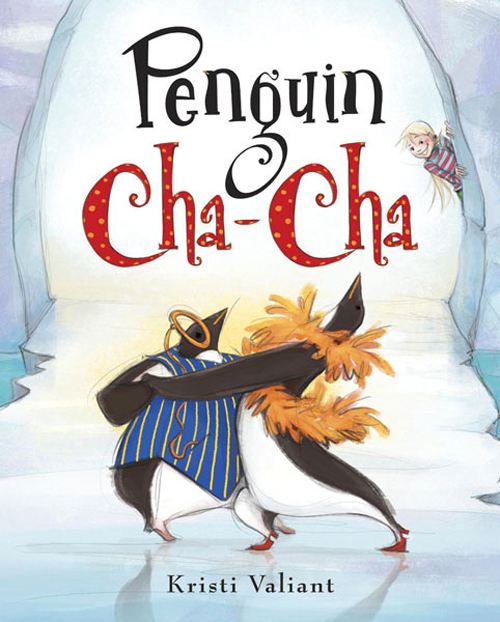
http://kathytemean.wordpress.com/2013/09/07/illustrator-saturday-kristi-valiant/
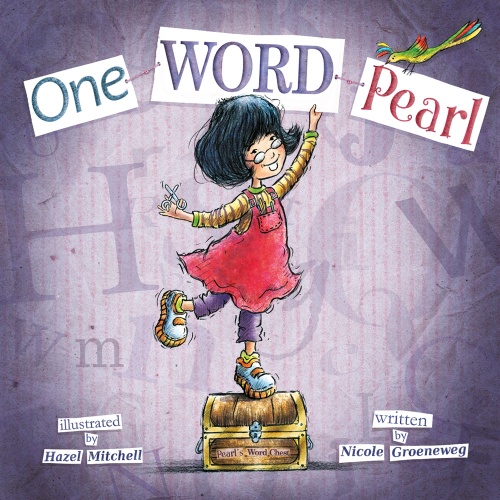
http://kathytemean.wordpress.com/2013/09/14/illustrator-saturday-hazel-mitchell-2/
 Click this for the original link for Book and Agent John Cusick’s Interview.
Click this for the original link for Book and Agent John Cusick’s Interview.
If you didn’t win, check back on Sunday for a chance to get your hands on Cherry Money Baby.
Winners please send me your physical address, so your book can be sent to you.
You can still leave a comment for a chance to win the following books:
Click this link for Dianne Ochiltree’s Firefly Night. Winner announced on Sunday.
Click this link for Pink Cupcake Magic written by Katherine Tegan and illustrated and given away by Kristin Varner. Have to Dec. 1st to leave a comment on this link.
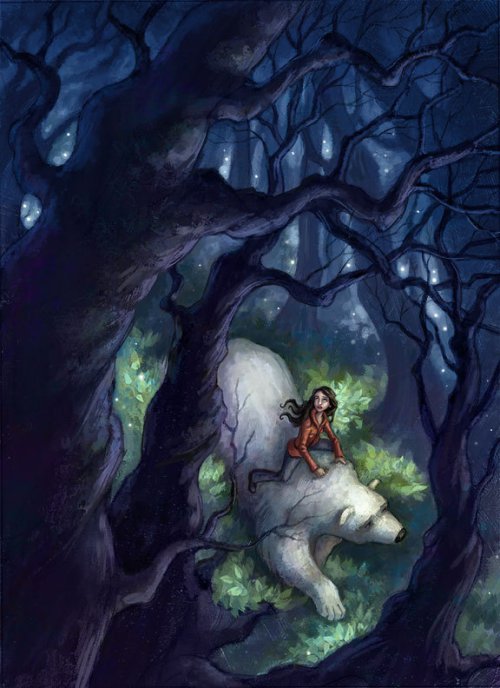
For writers who like using a picture prompt, you may use the above illustration by Shawna JC Tenney for inspiration. Shawna was featured on illustrator Saturday April 20th. http://kathytemean.wordpress.com/2013/04/20/illustrator-saturday-shawna-jc-tenney/
WRITERS Sending in a First Page: Please attach your double spaced, 12 point font, 23 line first page to an e-mail and send it to kathy(dot)temean(at)gmail(dot)com. Also cut and paste it into the body of the e-mail. Put “October First Page Critique” or “October First Page Picture Prompt Critique” in the subject line. Make sure you have your name on the submission, a title, and indicate the genre.
DEADLINE: October 24th
RESULTS POSTED: November 1st.
Talk tomorrow,
Kathy
Filed under:
opportunity Tagged:
dianne Ochiltree,
Editor Emily Seife,
First Page Critiques,
Free Fall Friday,
Hazel Mitchell,
John Cusick,
Katherine Tegan,
Kristi valiant,
Scholastic,
Shawna JC Tenney 

On Monday, The New York Public Library (NYPL)unveiled its first-ever list of the top 100 kids books of the last 100 years, curated by librarians, called “100 Great Children’s Books.” Marking the occasion, acclaimed children’s book creators Judy Blume and Eric Carle (who both appear on the list) participated in a panel discussion at the library’s Trustees Room and read from their popular works.
 In alphabetical order by title, this list is as follows:
In alphabetical order by title, this list is as follows:
Alexander and the Terrible, Horrible, No Good, Very Bad Day. Judith Viorst. Illus. by Ray Cruz. (1972)
All-of-a-Kind Family. Sydney Taylor, illustrated by Helen John. (1951)
Amelia Bedelia. Peggy Parish, illustrated by Fritz Siebel. (1963)
The Arrival. Shaun Tan. (2007)
Bark, George. Jules Feiffer. (1999)
Because of Winn-Dixie. Kate DiCamillo. (2000)
Ben’s Trumpet. Rachel Isadora. (1979)
Big Red Lollipop. Rukhsana Khan. Illus. by Sophie Blackall. (2010)
The Birchbark House. Louise Erdrich. (1999)
The Book of Three. Lloyd Alexander. (1964)
The Borrowers. Mary Norton. Illus. by Beth Krush and Joe Krush. (1953)
El Gallo De Bodas: A Traditional Cuban Folktale. Lucía M. González. Illus. by Lulu Delacre. (1994)
Bread and Jam for Frances. Russell Hoban. illustrated by Lillian Hoban. (1964)
Bridge to Terabithia. Katherine Paterson. (1977)
Brown Bear, Brown Bear, What Do You See? Bill Martin, Jr. Illus. by Eric Carle. (1967)
Caps for Sale. Esphyr Slobodkina. (1938)
The Cat in the Hat. Dr. Seuss. (1957)
\Chains. Laurie Halse Anderson. (2008)
A Chair For My Mother. Vera B. Williams. (1982)
Charlotte’s Web. E.B. White. Illus. by Garth Williams. (1952)
Chato’s Kitchen. Gary Soto. Illus. by Susan Guevara. (1995)
Chicka Chicka Boom Boom. Bill Martin, Jr. and John Archambault. Illus. by Lois Ehlert. (1989)
Corduroy. Don Freeman. (1976)
Curious George. H.A. Rey. (1941)
D’Aulaires’ Book of Greek Myths. Ingri D’Aulaire and Edgar Parin D’Aulaire. (1962)
Don’t Let the Pigeon Drive the Bus! Mo Willems. (2003)
Esperanza Rising. Pam Muñoz Ryan. (2000)
Freight Train. Donald Crews. (1978)
Frog and Toad Are Friends. Arnold Lobel. (1970)
From the Mixed-Up Files of Mrs. Basil E. Frankweiler. E.L. Konigsburg. (1967)
George and Martha. James Marshall. (1972)
The Giver. Lois Lowry. (1993)
Go, Dog. Go! P.D. Eastman. (1961)
Goodnight Moon. Margaret Wise Brown. Illus. by Clement Hurd. (1947)
Grandfather’s Journey. Allen Say. (1993)
The Graveyard Book. Neil Gaiman. Illus. by Dave McKean. (2008)
Green Eggs and Ham. Dr. Seuss. (1960)
Harold and the Purple Crayon. Crockett Johnson. (1955)
Harriet the Spy. Louise Fitzhugh. (1964)
Harry Potter and the Sorcerer’s Stone. J.K. Rowling. (1998)
Hatchet. Gary Paulsen. (1989) The Hobbit. J.R.R. Tolkien. (1937)
Holes. Louis Sachar. (1998)
The Invention of Hugo Cabret. Brian Selznick. (2007)
Joseph Had a Little Overcoat. Simms Taback. (1999)
Jumanji. Chris Van Allsburg. (1981)
Just a Minute: A Trickster Tale and Counting Book. Yuyi Morales. (2003)
Lilly’s Purple Plastic Purse. Kevin Henkes. (1996)
The Lion and the Mouse. Jerry Pinkney. (2009)
The Lion, the Witch and the Wardrobe. C.S. Lewis. (1950)
The Little House. Virginia Lee Burton. (1942)
The Little Prince. Antoine de Saint-Exupéry. (1943)
Locomotion. Jacqueline Woodson. (2003)
Lon Po Po: A Red-Riding Hood Story From China. Ed Young. (1989) 
Madeline. Ludwig Bemelmans. (1939)
Make Way for Ducklings. Robert McCloskey. (1941)
Matilda. Roald Dahl. Illus. by Quentin Blake. (1988)
Meet Danitra Brown. Nikki Grimes. Illus. by Floyd Cooper. (1994)
Millions of Cats. Wanda Gág. (1928)
Miss Nelson is Missing! Harry Allard. Illus. by James Marshall. (1977)
Mr. Popper’s Penguins. Richard and Florence Atwater. Illus. by Robert Lawson. (1938)
Mrs. Frisby and the Rats of NIMH. Robert C. O’Brien. (1971)
Mufaro’s Beautiful Daughters: An African Tale. John Steptoe. (1987)
My Father’s Dragon. Ruth Stiles Gannett. Illus. by Ruth Chrisman Gannett (1948)
My Name is Yoon. Helen Recorvits. Illus. by Gabi Swiatkowska. (2003)
Olivia. Ian Falconer. (2000)
One Crazy Summer. Rita Williams-Garcia. (2010)
The People Could Fly: American Black Folktales. Virginia Hamilton. Illus. by Leo/Diane Dillon. (1985)
The Phantom Tollbooth. Norton Juster. Illus. by Jules Feiffer. (1961)
Pierre: A Cautionary Tale in Five Chapters and a Prologue. Maurice Sendak. (1962)
Pink and Say. Patricia Polacco. (1994)
Pippi Longstocking. Astrid Lindgren. (1950)
Ramona the Pest. Beverly Cleary. (1968)
Rickshaw Girl. Mitali Perkins. Illus. by Jamie Hogan. (2007)
Roll of Thunder, Hear My Cry. Mildred D. Taylor. (1976)
Rumpelstiltskin. Paul O. Zelinsky. (1986)
A Sick Day for Amos MCGee. Philip Stead. Illus. by Erin E. Stead. (2010)
The Snowy Day. Ezra Jack Keats. (1962)
Starry River of the Sky. Grace Lin. (2012)
The Stories Julian Tells. Ann Cameron. Illus. by Ann Strugnell. (1981)
The Story of Ferdinand. Munro Leaf. Illus. by Robert Lawson. (1936)
Strega Nona. Tomie dePaola. (1975)
Swimmy. Leo Lionni. (1963)
Sylvester and the Magic Pebble. William Steig. (1969)
Tales of a Fourth Grade Nothing. Judy Blume. (1972)
The Tales of Uncle Remus: The Adventures of Brer Rabbit. Julius Lester. Illus. by Jerry Pinkney. (1987)
Tar Beach. Faith Ringgold. (1991)
Ten, Nine, Eight. Molly Bang. (1983)
Tomie dePaola’s Mother Goose. Tomie dePaola. (1985)
The True Story of the Three Little Pigs. Jon Scieszka. Illus. by Lane Smith. (1989)
Tuesday. David Wiesner. (1991)
The Very Hungry Caterpillar. Eric Carle. (1969)
The Watsons Go to Birmingham—1963. Christopher Paul Curtis. (1995)
The Westing Game. Ellen Raskin. (1978)
When You Reach Me. Rebecca Stead. (2009)
Where Is the Green Sheep? Mem Fox. Illus. by Judy Horacek. (2004)
Where the Wild Things Are. Maurice Sendak. (1963)
Why Mosquitoes Buzz in People’s Ears. Verna Aardema. Illus. by Leo/Diane Dillon. (1975)
Winnie-the-Pooh. A.A. Milne. Illus. by Ernest H. Shepard. (1926)
A Wrinkle in Time. Madeleine L’Engle. (1962)
The unveiling of the list coincides with NYPL’s well-received kid lit exhibition, “The ABC of It: Why Children’s Books Matter,” on view at the library’s Stephen A. Schwarzman Building.
The list was selected by The New York Public Library’s Jeanne Lamb, coordinator of youth Collections, and Elizabeth Bird, supervising librarian.
Filed under:
Uncategorized 

 LUMINA hosts an annual national literary contest in a single genre, whose winners receive publication in the journal and a $500 prize.
LUMINA hosts an annual national literary contest in a single genre, whose winners receive publication in the journal and a $500 prize.
Submit your best nonfiction piece, 5K words or less. All rights revert to author upon publication. Cheryl Strayed, New York Times bestseller author, will judge.
The Volume XIII (2014) Nonfiction Contest will be judged by Cheryl Strayed.
Submit via our online submission manager.
Deadline: October 15, 2013
Entry Fee: $12
First Place Prize: $500
Please Do…
- send us your best nonfiction piece. 5,000 words or less.
- double space and number pages.
- only send previously unpublished work.
- include a three-sentence biographical statement with your submission in the cover letter box provided.
Please Do Not…
- include your name or any personal information in the body of your submission.
We do accept simultaneous submissions. Please notify LUMINA immediately if your work is accepted elsewhere via email ([email protected].) or submittable.
All rights revert to author upon publication. All subsequent publications should credit us for first appearance.
We look forward to reading your work!
Related Articles:
Nonfiction Editor, Geoff Bendeck, talks about what he’s looking for in submissions.
Good Luck!
Talk Tomorrow,
Kathy
Filed under:
Contest,
opportunity,
Places to sumit,
Publishing Industry Tagged:
Cheryl Strayed,
Lumina National Literary Contest,
New York Times Best Selling Author,
Non-Fiction Contest 


By: Kathy Temean,
on 9/30/2013
Blog:
Writing and Illustrating
(
Login to Add to MyJacketFlap)
JacketFlap tags:
Advice,
Process,
Middle Grade Novels,
authors and illustrators,
Marketing a book,
Newbery Winner,
HarperCollins Childrens,
The One and Only Ivan,
Increase your sales,
School Discussion Guide,
Add a tag
This is an excellent discussion guide for Kate Applegate’s Newbery winning book, THE ONE AND ONLY IVAN. With this one piece Kate is showing not only helping teachers know how to use her book with their classes, but she is also, generating interest in her book, encouraging teachers to share it with her readers, and get invited to their school. Bottom Line: Increasing sales.
Are you putting out something this high end? Next, I will share a picture book Discussion Guide. I hope these will get you thinking about what you can do for your book.
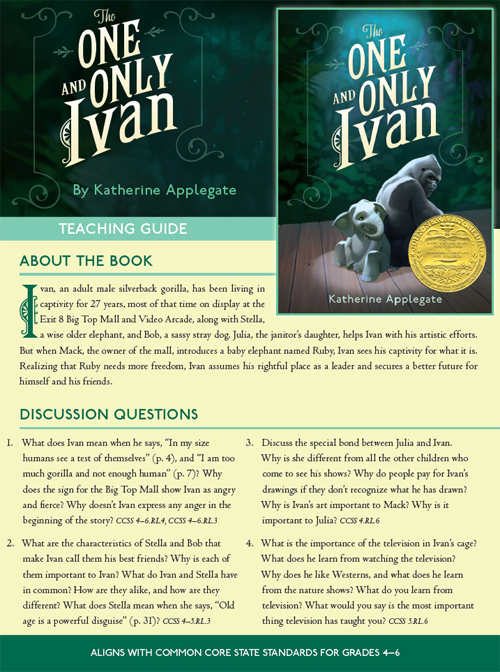
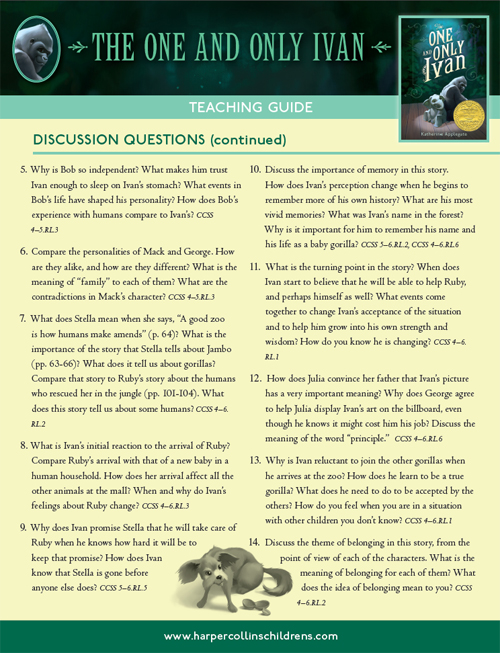
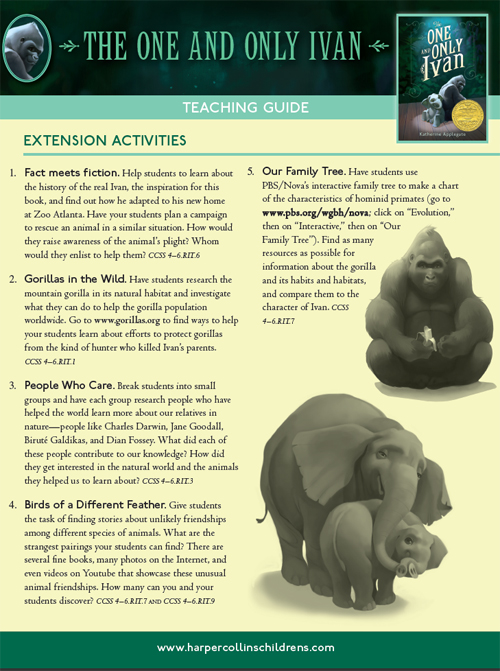
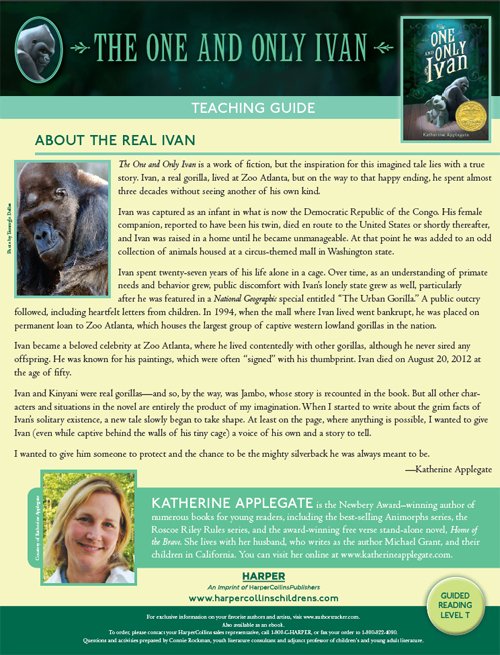
If your publisher is not planning on creating something like this for you, don’t let that stop you from doing all the things you can to look professional and grab more sales.
Talk tomorrow,
Kathy
Filed under:
Advice,
authors and illustrators,
Marketing a book,
Middle Grade Novels,
Process Tagged:
HarperCollins Childrens,
Increase your sales,
Newbery Winner,
School Discussion Guide,
The One and Only Ivan 


By: Kathy Temean,
on 9/29/2013
Blog:
Writing and Illustrating
(
Login to Add to MyJacketFlap)
JacketFlap tags:
HarperCollins,
Author,
Book,
inspiration,
Young Adult Novel,
How to,
Lauren Oliver,
Marketing a book,
Book Discussion Guide,
Getting school visits,
Panemonium,
Add a tag
I am posting this because I think all of us should be thinking past having a website, blog, and a facebook page and start thinking about selling our books. This is an excellent discussion guide for Lauren Oliver’s fabulous book, PANDEMONIUM. With this one piece she is showing that she is a true professional, generating interest in reading her book, and providing content for teachers to encourage them to invite her in to their school. Are you putting out something this high end? Next week I will share an excellent middle grade discussion guide and a picture book discussion guide. I hope these will get you thinking about doing more than just putting up a website and hoping someone calls.

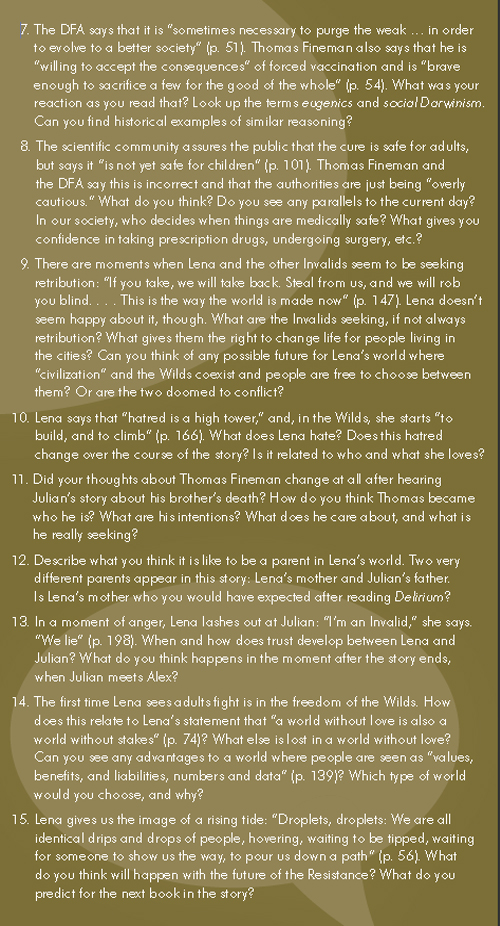
Talk tomorrow,
Kathy
Filed under:
Author,
Book,
How to,
inspiration,
Marketing a book,
Young Adult Novel Tagged:
Book Discussion Guide,
Getting school visits,
HarperCollins,
Lauren Oliver,
Panemonium 

View Next 25 Posts































 Do you feel living in New York City helps you get more work?
Do you feel living in New York City helps you get more work?
























 Jenny Bent is the founder of The Bent Agency. There is no reason why you shouldn’t try to snag an agent who has been in the industry for over 20 years. Just make sure that what you want to submit needs to be revised and polished and you feel the writing is at the top of your game, before sending a query letter. I thought you might like to read about her and what she is looking for.
Jenny Bent is the founder of The Bent Agency. There is no reason why you shouldn’t try to snag an agent who has been in the industry for over 20 years. Just make sure that what you want to submit needs to be revised and polished and you feel the writing is at the top of your game, before sending a query letter. I thought you might like to read about her and what she is looking for.  Thought you might like to see what agent Hanna Bowman said she was looking for this past week. Just remember now is not to time to start writing a story to fit this wish list, since by the time you finish, Hanna will probably be on to wanting other things. But maybe there is someone reading this post who has a manuscript written that is a perfect fit and is looking for a home. Or maybe you are working on something that fits and this will spur you on to finishing the book. Tip: Just make sure your manuscript is revised and polished before submitting. I hope this helps someone.
Thought you might like to see what agent Hanna Bowman said she was looking for this past week. Just remember now is not to time to start writing a story to fit this wish list, since by the time you finish, Hanna will probably be on to wanting other things. But maybe there is someone reading this post who has a manuscript written that is a perfect fit and is looking for a home. Or maybe you are working on something that fits and this will spur you on to finishing the book. Tip: Just make sure your manuscript is revised and polished before submitting. I hope this helps someone.  Ame Dyckman’s newest book, “Tea Party Rules,” illustrated by K.G. Campbell, was selected as the winner of the 28th annual Ezra Jack Keats Book Award.
Ame Dyckman’s newest book, “Tea Party Rules,” illustrated by K.G. Campbell, was selected as the winner of the 28th annual Ezra Jack Keats Book Award. The news is finally out:
The news is finally out:









 A transplanted New Yorker now living in Missouri, Wendy Martin has been working as an illustrator for 25+ years.
A transplanted New Yorker now living in Missouri, Wendy Martin has been working as an illustrator for 25+ years.















































 Foreword Literary is a full-service, hybrid literary agency based in the Silicon Valley with offices throughout the country. They manage a wide variety of clients, from bestsellers to debut authors, working with fiction and non-fiction for children and adults worldwide. Emily S. Keyes is one of those agents located in NYC. Since she is relatively new to Foreword Literary, she would be good to consider. But remember do your homework and make sure you think you are a good fit.
Foreword Literary is a full-service, hybrid literary agency based in the Silicon Valley with offices throughout the country. They manage a wide variety of clients, from bestsellers to debut authors, working with fiction and non-fiction for children and adults worldwide. Emily S. Keyes is one of those agents located in NYC. Since she is relatively new to Foreword Literary, she would be good to consider. But remember do your homework and make sure you think you are a good fit. Julie Rowan-Zoch visits this blog a lot, so I had a minute the other day and I checked out her blog and found the post below about her beta-testing a course on punching up your prose using lyrical language. I thought you might like to know about it, since we are all looking for language that makes our stories sing. But first, here is a little bit about Julie:
Julie Rowan-Zoch visits this blog a lot, so I had a minute the other day and I checked out her blog and found the post below about her beta-testing a course on punching up your prose using lyrical language. I thought you might like to know about it, since we are all looking for language that makes our stories sing. But first, here is a little bit about Julie:
























































 Michael’s Grandson
Michael’s Grandson Michael’s Granddaughter
Michael’s Granddaughter

 Allison Moore Assistant Editor at Little, Brown Books for Young Readers will be February’s Guest Critiquer. Allison is currently an assistant editor at Little, Brown Books for Young Readers, and has worked there for about three and a half years. Prior to that, she interned at a variety of publishers, spent a year as a bookseller, and also worked at her hometown public library.
Allison Moore Assistant Editor at Little, Brown Books for Young Readers will be February’s Guest Critiquer. Allison is currently an assistant editor at Little, Brown Books for Young Readers, and has worked there for about three and a half years. Prior to that, she interned at a variety of publishers, spent a year as a bookseller, and also worked at her hometown public library.

 Yesterday Angela Sylvia liked my post. I didn’t know her so I followed one of the links to her blog and found a post I thought you would like to read. Anyone who has been writing for a while probably has a few manuscripts that weren’t working and were thrown in a drawer.
Yesterday Angela Sylvia liked my post. I didn’t know her so I followed one of the links to her blog and found a post I thought you would like to read. Anyone who has been writing for a while probably has a few manuscripts that weren’t working and were thrown in a drawer.

 YAY! In case you missed all the screaming from Betsy Devany and all her friends, Betsy signed a contract for her first picture book, SMELLY BABY to Christy Ottaviano of Christy Ottaviano Books at Henry Holt.
YAY! In case you missed all the screaming from Betsy Devany and all her friends, Betsy signed a contract for her first picture book, SMELLY BABY to Christy Ottaviano of Christy Ottaviano Books at Henry Holt. Robin Newman is celebrating, too.
Robin Newman is celebrating, too.  illustrated by Chris Ewald (Spring 2015)
illustrated by Chris Ewald (Spring 2015)
 Now for my idea to send CHERRY MONEY BABY traveling:
Now for my idea to send CHERRY MONEY BABY traveling: Mark was born and raised in Northern Utah under the shadow of the Wasatch Mountains. He spent many childhood days climbing, exploring, and causing general mayhem on the mountainside. Running around with his brothers he learned early on the finer things in life like the sound of breaking glass, the freedom of running around in your underwear, and the feel of rushing wind on your face as you’re falling out of a tree.
Mark was born and raised in Northern Utah under the shadow of the Wasatch Mountains. He spent many childhood days climbing, exploring, and causing general mayhem on the mountainside. Running around with his brothers he learned early on the finer things in life like the sound of breaking glass, the freedom of running around in your underwear, and the feel of rushing wind on your face as you’re falling out of a tree. 





















































 37. Any words of wisdom on how to become a successful writer or illustrator?
37. Any words of wisdom on how to become a successful writer or illustrator?
 Emily Seife associate editor at Scholastic Press, has agreed to be our Guest Critiquer for October’s First Page winners. She works with award-winning authors such as Cynthia Lord, Philip Reeve, Daphne Benedis-Grab, James Proimos, and many others. She is an editor on the Infinity Ring multiplatform series, and is the author of The Hunger Games Tribute Guide. Emily is especially looking for: Young adult and middle grade fiction: stories with a strong voice and emotional core, contemporary humor, magical realism, mystery. She says she is not a good fit for: high fantasy, paranormal.
Emily Seife associate editor at Scholastic Press, has agreed to be our Guest Critiquer for October’s First Page winners. She works with award-winning authors such as Cynthia Lord, Philip Reeve, Daphne Benedis-Grab, James Proimos, and many others. She is an editor on the Infinity Ring multiplatform series, and is the author of The Hunger Games Tribute Guide. Emily is especially looking for: Young adult and middle grade fiction: stories with a strong voice and emotional core, contemporary humor, magical realism, mystery. She says she is not a good fit for: high fantasy, paranormal.



 In alphabetical order by title, this list is as follows:
In alphabetical order by title, this list is as follows:
 LUMINA hosts an annual national literary contest in a single genre, whose winners receive publication in the journal and a $500 prize.
LUMINA hosts an annual national literary contest in a single genre, whose winners receive publication in the journal and a $500 prize. 






Lovely illustrations! I so admire all the effort you’ve put into making this a career.
Whoa! Elisabeth’s work is amazing! She is one talented young lady! My 11 year old enjoyed looking as well.
Beautiful illustration with incredible details. Thanks for sharing it.
Kathy, thank you so much for featuring me in this interview! (:
Yay! I love fantasy illustrators! Those are absolutely gorgeous illustrations. My favorite has to be the Ghostly Emperor and the Nightingale. What a great feast for the eyes!
What a great feast for the eyes!
Elisabeth, your illustrations are so detailed and beautiful. Thank you for sharing your art and your process.
Thank you Elisabeth for sharing some details of how you work which is incredible! You have done a lot of illustrations in a short amount of time. Congratulations!
I didn’t give enough adjectives about your work–amazing, breathtaking, vibrant, beautiful, gorgeous, and on and on!!!!!